Forums
- Forums
- Duggy's Reference Hangar
- RAF Library
- Short Empire
Short Empire
Post a reply
- Go to Previous topic
- Go to Next topic
- Go to Welcome
- Go to Introduce Yourself
- Go to General Discussion
- Go to Screenshots, Images and Videos
- Go to Off topic
- Go to Works in Progress
- Go to Skinning Tips / Tutorials
- Go to Skin Requests
- Go to IJAAF Library
- Go to Luftwaffe Library
- Go to RAF Library
- Go to USAAF / USN Library
- Go to Misc Library
- Go to The Ops Room
- Go to Made in Germany
- Go to Campaigns and Missions
- Go to Works in Progress
- Go to Juri's Air-Raid Shelter
- Go to Campaigns and Missions
- Go to Works in Progress
- Go to Skinpacks
- Go to External Projects Discussion
- Go to Books & Resources
-
4 years agoWed May 08 2024, 08:37pmDuggy
 Main AdminThe Short Empire was a medium-range four-engined monoplane flying boat, designed and developed by Short Brothers during the 1930s to meet the requirements of the growing commercial airline sector, with a particular emphasis upon its usefulness upon the core routes that served the United Kingdom. It was developed and manufactured in parallel with the Short Sunderland maritime patrol bomber, which went on to serve in the Second World War; a further derivative that was later developed was the piggy-back Short Mayo Composite.
Main AdminThe Short Empire was a medium-range four-engined monoplane flying boat, designed and developed by Short Brothers during the 1930s to meet the requirements of the growing commercial airline sector, with a particular emphasis upon its usefulness upon the core routes that served the United Kingdom. It was developed and manufactured in parallel with the Short Sunderland maritime patrol bomber, which went on to serve in the Second World War; a further derivative that was later developed was the piggy-back Short Mayo Composite.
The development of the Short Empire had been heavily influenced by its primary customer, Imperial Airways, who had originally developed the requirements to which it was initially ordered and designed from. Imperial Airways, and its successor, the British Overseas Airways Corporation (BOAC), along with Qantas and TEAL, operated the type in commercial service. Upon entering service, the Empire routinely flew between the British mainland and Australia and the various British colonies in Africa and Asia, typically carrying a combination of passenger and mail cargoes; the Empires were also used on various other routes, such as on the service between Bermuda and New York City.
The Empire also saw military service during the Second World War. The Royal Air Force (RAF), Royal Australian Air Force (RAAF), Royal New Zealand Air Force (RNZAF), and briefly the Royal Canadian Air Force (RCAF) used the type to conduct various military operations, particularly as an airborne platform for anti-submarine patrols and for general transport duties.
Origins
During the 1930s, global demand for air travel was consistently and rapidly growing. Thus, keen to grow their share of this emerging market, British airline Imperial Airways was keen to expand and sought the latest technology to do so. In particular, Imperial Airways' technical advisor, Major Robert Hobart Mayo developed a specification for a new type of aircraft to serve both passenger and freight requirements throughout the world. This specification sought an aircraft that would be capable of carrying up to 24 passengers in spacious comfort along with adequate room for airmail or freight while simultaneously being capable of a cruising speed of 170 MPH and a range of at least 700 miles; the capacity for an extended range of 2,000 miles to serve the North Atlantic route was also stipulated.According to aviation author Geoffrey Norris, at the time, it was considered to be impossible to construct a land-based aeroplane of such size and weight that still possessed acceptable landing/take-off performance, thus it was determined that a flying boat would be required.
Early on, it was apparent that Short Brothers, who had previously developed and produced several large flying boats for Imperial Airways and the Royal Air Force (RAF) which had proven to be sound designs in terms of performance and safety, would be a frontrunner to fulfil the requirement. However, Shorts was hesitant to build such an aircraft, due to the necessary advances involved, straight from the drawing board without the production of a preceding prototype, and thus requested to be allowed the time to build such an aircraft; this was rejected by Imperial Airways, stating that such a delay was not permissible. In 1935, Imperial Airways announced the placement of an order for 28 flying boats of an as-of-yet undesigned type, weighing 18 tonnes each; the order was reportedly hailed as being "one of the world's boldest experiments in aviation", while sceptics referred to the decision less favourably as being a 'gamble'.
A design team led by Arthur Gouge set about designing what would become the Empire. It was quickly determined that, in order to possess the sufficient clearance between the tips of the propellers and the water, the wing would need to be in a high mounted position; initially to be housed in a hump above the fuselage for sufficient height, the fuselage depth was instead increased, providing more internal volume than required but enabling a lighter and stronger integration of the cantilever wing with the fuselage. Shorts' own convention for wide planing bottomed hulls for their flying boats was overturned as the 18-tonne weight would generate excessive drag with such a configuration; following a series of water tank experiments, a new type of planing bottom with a reduced beam deemed suitable. The basic aerodynamic design was derived from the smaller Short Scion Senior floatplane, which served in all but name as a half-scale prototype for the Empire and for its sibling, the military-orientated Short Sunderland.
At the time of development, the British aircraft industry had never attempted to construct an aeroplane of this size and complexity before; accordingly, many new techniques were devised to overcome problems encountered, particularly during its construction process. Shorts had to develop its own machinery to produce the necessary 'T'-shaped Hiduminium alloy lengths that comprised the main spar. A specialised and patented flap arrangement, known as Gouge flaps after their creator, was employed on the Empire to increase wing area with only a small increase in drag and without heavy disrupting airflow over the top of the aerofoil; in operation, the lift coefficient of the wing could be increased by 30 percent, reducing the landing speed by 12 per cent, without employing any trimming to adjust.
Initial production
On 4 July 1936, the first of the Empire flying boats to be built, G-ADHL, named 'Canopus', conducted its maiden flight, flown by Shorts' chief test pilot, John Lankester Parker. Early flights of the type were relatively trouble-free, Parker declaring his satisfaction with the aircraft's performance; the new styling of the planing bottom used also quickly proved its value. On 17 September 1936, the first flight of G-ADHL on behalf of Imperial Airways occurred, flown by Major H G Brackley, Imperial Airways' Air Superintendent; the final delivery and proving flight of the aircraft to Marseilles, France took place on 22 October 1936. The first series of the Short Empires, the S.23, could carry 5 crew, 17 passengers, and 4,480 lb (2,035 kg) of cargo at a maximum speed of 174 knots (320 km/h) and was powered by four 920 horsepower (690 kW) Bristol Pegasus Xc radial engines.
The second Empire and the first of the long-range models to be produced, G-ADHM, named 'Caledonia', performed her first flight on 15 September 1936 and was delivered to Imperial Airways on 4 December 1936. From September 1936 onwards, the Empire was produced at a rate of one aircraft per month; typically, each aircraft's delivery date occurred only a few days after having performed its maiden flight, the hand-over sometimes happened immediately following the first flight. The Empire was officially known as the C-class by Imperial Airways and each aircraft operated by them was given a name beginning with a 'C'.
On 26 February 1938, the final three Empires of the initial order placed by Imperial Airways – 'Coorong', 'Coogee', and 'Corio' – were diverted from the Imperial Airways order and were delivered instead to the Anglo-Australian Qantas Empire Airways. In late 1937, due to Imperial Airways satisfaction with its operational experience with the aircraft of the initial batch, the company placed a follow-on order for another 11 Empire flying boats; combined with the original 28 order, this had the distinction of being the largest single order to have ever been placed for a British civil aircraft at that time. While the first three aircraft of the additional order were of the typical S.23 class, intended for Qantas Empire Airways, the rest were manufactured to a differing design, designated as the S.30. A total of 42 Empires were built, all at Short's Rochester factory.
Further development
The S.30 series was outfitted with four Bristol Perseus XIIc sleeve valve engines in the place of the Pegasus engines; the Perseus engines were more efficient but provided a lower power output of 890 horsepower (660 kW), but the decrease in developed thrust was effectively compensated for via the adoption of smaller diameter nacelles which had resulted in a substantial reduction in drag. It also had a strengthened airframe and used heavier gauge sheeting on the fuselage and wings; while these changes allowed the takeoff weight to be increased to 46,000 pounds (21,000 kg) with a corresponding range of 1,500 miles (2,400 km), the S.30 had broadly the same performance as the preceding S.23 flying boats.
The first of the S.30 flying boats to be laid out and completed was G-AFCT, named 'Champion'. In December 1938, the second S.30 aircraft G-AFCU, named 'Cabot' became the first aircraft of the series to conduct the first successful takeoff. The last three aircraft of this order – 'Captain Cook', 'Clare' and 'Aotearoa' – were renamed and re-registered for use by TEAL. In 1939, a final S.30 flying boat, G-AFKZ, was ordered and delivered to Imperial Airways in late March 1940.
A total of four flying S.30 series flying boats – Cabot, Caribou, Clyde and Connemara – were equipped with in-flight refuelling equipment and extra fuel tanks in order that they could be used to provide a regular trans-atlantic airmail service. The concept was for the aircraft to take off at lower weights and, once airborne, take on extra fuel to reach an all up weight of 53,000 pounds (24,000 kg), giving the aircraft a range of over 2,500 miles (4,000 km). The extra fuel reduced the payload to 4,270 pounds (1,940 kg) against the 6,250 pounds (2,830 kg) of the standard aeroplane. The refuelling was performed by three converted Handley Page Harrow bombers, one operating out of Ireland and two out of Newfoundland.
In 1939, Imperial Airways placed a further follow-on order for a modified model of the S.30, designated as the S.33. This series had the same basic construction as its immediate predecessors, the new Pegasus XI engine, a development of the powerplant used by the original S.23 series, was adopted instead. Out of these three final aircraft, only two – 'Clifton' and 'Cleopatra' – would be completed and delivered to the newly formed British Overseas Airways Corporation (BOAC).
A substantial larger development of the Empire flying boat, effectively a new aircraft, was the S.26, designated as the "G class". These aircraft had similar appearance to the standard Empire, but were in fact roughly about 15 per cent larger in all dimensions, as well as differing in its use of the more powerful Bristol Hercules radial engine and having adopted an improved hull design, featuring a wing span of 134 feet (41 m) and a length of 101 feet (31 m). It was intended to be used for year-round services on the North Atlantic route. Only a small number were built, and these were quickly impressed into military service during the Second World War.
Design
The Short Empire flying boat is a relatively clean-looking high-wing monoplane, initially powered by an arrangement of four wing-mounted Bristol Pegasus Xc radial engines which drove de Havilland-built variable-pitch propellers. The engines were each enclosed within NACA cowls and mounted ahead of the leading edge of the wings. This allowed portions of the leading edge adjacent to the engines to be hinged forwards and used as platforms from which to maintain the engines.
The Pegasus Xc engines could each produce 910 horsepower (680 kW) on takeoff, decreasing to 740 horsepower (550 kW) at an altitude of 3,500 ft. Alternative engines were installed upon various models of the aircraft, of both greater and lower power outputs depending upon the model's role and purpose. Initial production aircraft were designed for a 40,500 lb (18,400 kg) gross weight; however, by 1939, many aircraft had been strengthened for an increased gross weight of 53,000 lb (24,000 kg). Overall, its useful load included 600 imperial gallons (720 US gal; 2,700 L) of fuel (weighing 4,560 lb (2,070 kg)), 44 imp gal (53 US gal; 200 L) of oil, assorted onboard equipment (weighing 3,340 lb (1,510 kg)), along with the payload itself and a crew complement of five (weighing 8,200 pounds (3,700 kg)). The S.23 series achieved a top speed of 200 miles per hour (320 km/h) at an altitude of 5,500 feet (1,700 m) along with a cruising speed of 165 miles per hour (266 km/h) and a minimum flying speed of 73 miles per hour (117 km/h).
The wings had a flush-riveted Alclad covering and featured both Frise-type ailerons and the internally-developed Gouge flaps, the latter of which were actuated by an electric motor connected via a gearing system and screw jacks, allowing the flaps to be lowered in 60 seconds and raised within 90 seconds. Large cylindrical 325-gallon fuel tanks were accommodated within the wings, set in between the inner and outer engines, and were fitted as standard; on long-range variants of the aircraft, additional fuel tanks were present in the wings, up to a total of three containing 280 gallons, 325 gallons, and 175 gallons in each wing. Elements of the leading edge of the wing, set upon either side of the engine nacelles, could be folded down to act as servicing platforms for both the engines and the floats, the latter of which were carried upon tandem struts fixed onto the main spar and featured shock absorbers in order to eliminate undue torsional loads being transmitted to the wings by the sudden impact of waves while travelling at speed.
The hull, which had adopted a radically new shape, employed mainly traditional construction methods at Shorts. The structure used a combination of 'Z'-shaped stringers and 'I'-shaped girders to form triangular sections that ran along the chines located at the point where the fuselage sides met with the planing underside. As a measure to simplify manufacturing and to increase the available internal volume, only a simple curvature sweeping the sides of the hull into the chines was employed; on previous Shorts-built flying boats, a more complex 'S'-shaped curvature and a sudden reduction in beam just above the chines had been employed instead.
The 17 ft (5.2 m) deep hull accommodated a total of two decks, the upper deck forming a lengthy compartment divided into sections to accommodate 3,000 lb (1,400 kg) of freight and mail along with a storage space and a ship's clerk's office. This office contained controls such as electrical fuseboxes and circuit switches, ventilation controls, and fuelcocks. The lower deck contained a large marine compartment containing an anchor, a pair of drogues, a mooring bollard, and a boat hook, along with a step ladder to the cockpit; aft of the mooring compartment was the forward passenger saloon, followed by a central corridor flanked by the toilets and galley, a mid-ship cabin, a spacious promenade cabin, and finally an aft-cabin. The cabins could be alternatively outfitted with comfortable seating or bunks for sleeper services. Near the rear of the aircraft, a further compartment for the purpose of containing freight and mail was present which extended into the after fuselage.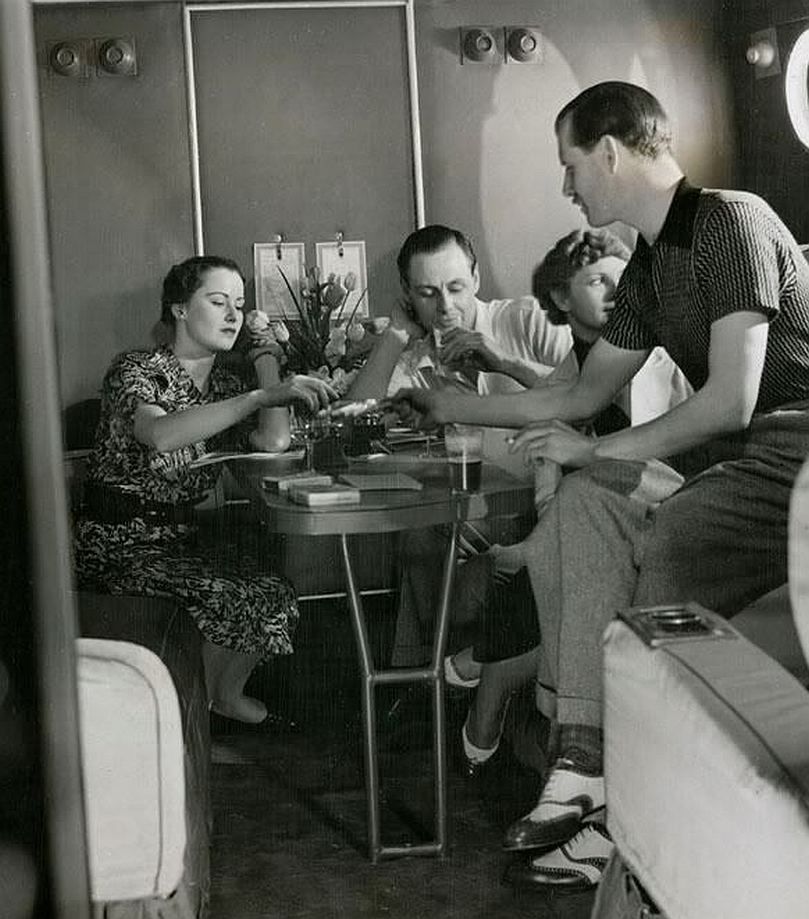

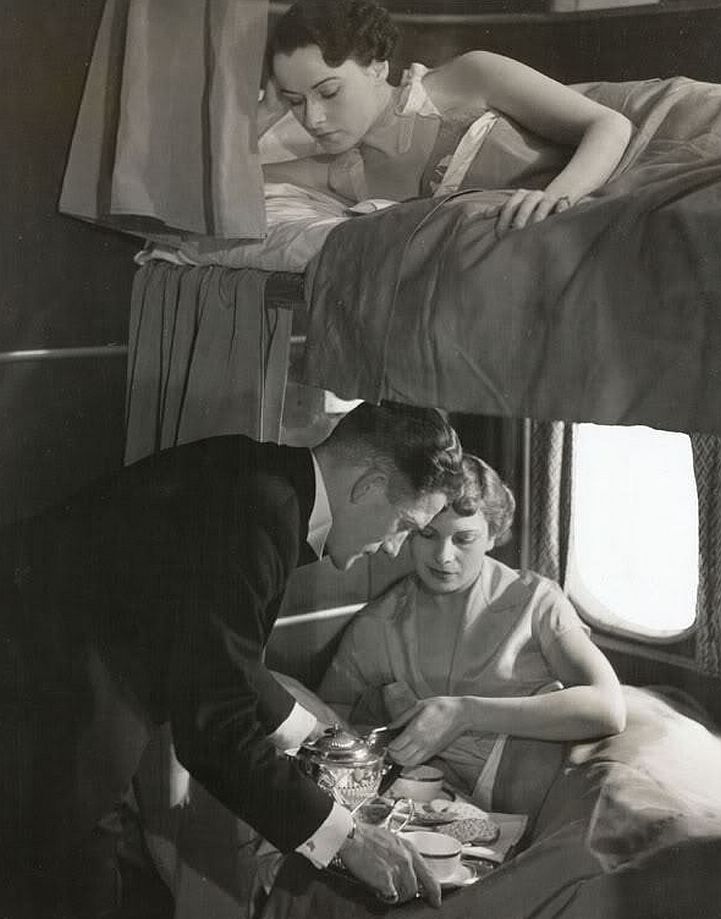
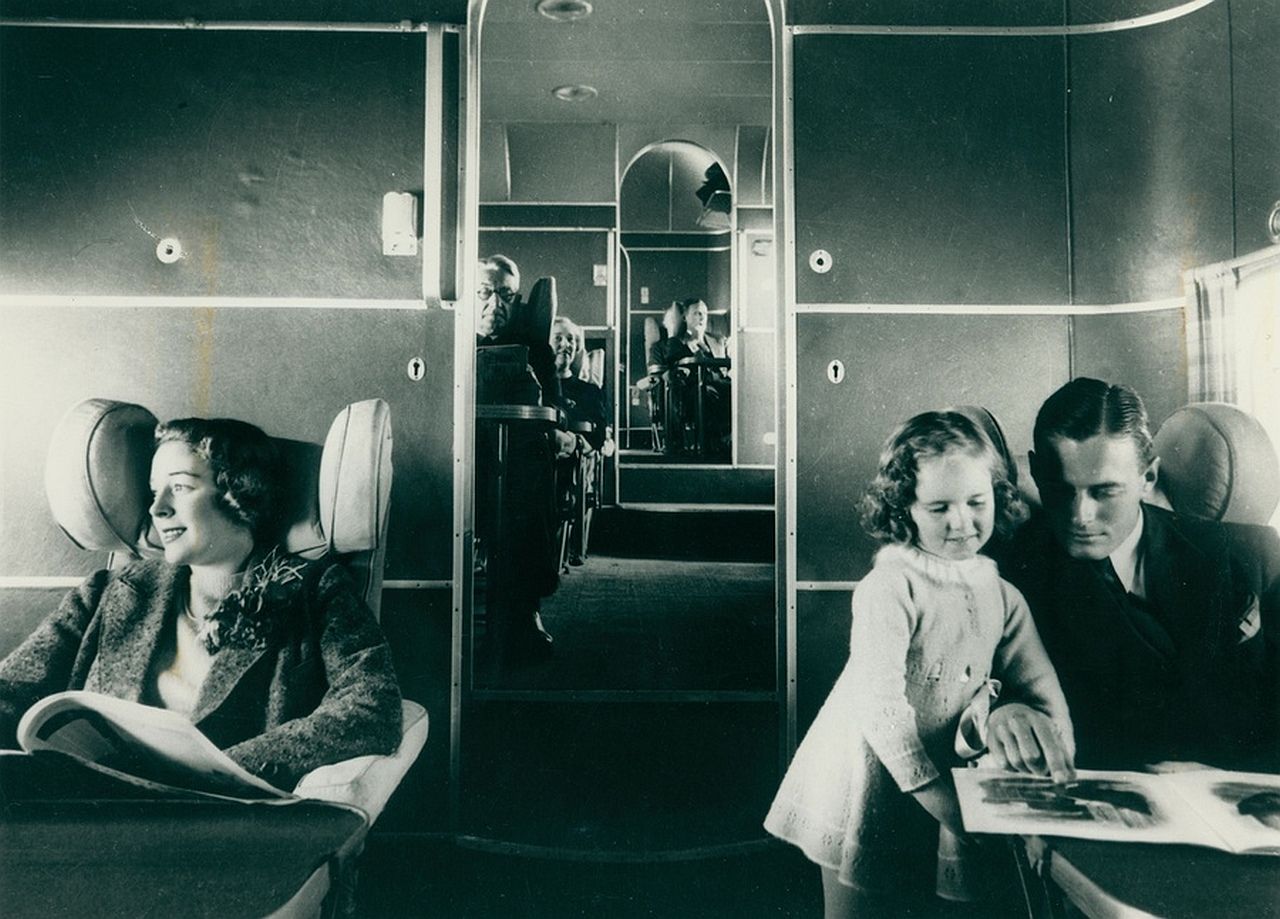
The flying crew was seated in a spacious cockpit, also referred to as the bridge; the captain and co-pilot were seated side-by-side while the radio operator sat behind the captain, facing rearwards. The flight deck was relatively well equipped for the era, including features such as an autopilot; the flying instrumentation included a Hughes-built turn indicator, compass, and variometer, a Sperry Corporation-built artificial horizon and heading indicator, a Kollsman-built sensitive altimeter, a Marconi-built radio direction finder, a Smiths-built chronometer, and an attitude indicator. The radio operator was furnished with Marconi-built shock-proof radio sets for receiving and transmitting across the radio spectrum; the retractable loop antenna could be repositioned for visual or aural homing.
While designed as civil aircraft, examples of the type would not only see military service but be specifically refitted for this purpose. In 1941, two Empire flying boats – 'Clio' and 'Cordelia' returned to Shorts' Belfast facility, where they were modified with the addition of gun turrets in dorsal and rear positions and Air to Surface Vessel (ASV) radar equipment installed on the top and sides of the fuselage. They were used by Coastal Command. More extensive military use was made of the Empire's sibling design, the Short Sunderland.
Operational history
On 8 February 1937, one of the Empire flying boats, Castor, conducted the first regular flight, flying from Calshot, Hampshire, England to Alexandria, Egypt. This flight, which covered a distance of roughly 2,300 miles (3,700 km) non-stop, showed that Britain could move military materiel to its overseas bases by air. On 18 February 1937, Caledonia, the first of the Empires built, flew the same Calshot-Alexandria route; it was able to traverse the route non-stop at an average speed of 170 mph.
On 5 July 1937, the first crossing of the Atlantic by an Empire flying boat was conducted. On an experimental basis, Caledonia, piloted by Captain W N Cummings, flew a 1,993 miles (3,207 km) route from Foynes on the River Shannon west to Botwood, Newfoundland. On the same day, an American Sikorsky S-42 flying boat flew the opposite direction. Caledonia took just over 15 hours (including a period spend searching for a landing spot), flying at an altitude of 1,500 to 5,000 ft (460 to 1,520 m) to cover 1,993 miles (3,207 km)—an average speed of about 130 mph (210 km/h). On its return flight, conducted on 22 July 1937, Caledonia flew the same route in the opposite direction in a time of 12 hours; in comparison to the competing Sikorsky S-42, the Empire was able to traverse the overall route faster.
Several more survey flights of the Atlantic were made by Caledonia and Cambria. In August 1937, Cambria conducted the East-West flight in 14 hrs 24 min. In 1937, Cavalier was shipped to Bermuda and, after reassembly, started a service between there and New York City on 25 May 1937.
The Short Empire was designed to operate along the Imperial Airways routes to South Africa and Australia, where no leg was much over 500 miles (800 km). After the design of the Empire had been finalised and production had commenced, it was recognised that, with some pressure from the United States, it would be desirable to offer a similar service across the Atlantic. The range of the S.23 was less than that of the equivalent American-built counterpart in the form of the Sikorsky S-42, and as such they could not provide a true trans-Atlantic service. Two boats (Caledonia and Cambria) were lightened and furnished with long-range tanks; both aircraft were used in experimental in-flight refuelling trials in order for them to conduct the journey; these modifications came at the cost of being able to carry fewer passengers and less cargo.
In an attempt to manage the Atlantic crossing, an alternative 'piggy-back' approach was trialled. This concept had been strongly advocated for by Imperial Airways' technical advisor, Major Robert Hobart Mayo, as a means of significantly increasing both range and payload, and had been well received by both the airline and the British Air Ministry, the latter of which placed an order with Shorts. Using the S.21 design (based on the S.23) as the carrier, a smaller four-engined floatplane, the Short S.20, was mounted upon its back; the most obvious difference between the S.21 and regular S.23 aeroplanes was the additional superstructure to carry the floatplane. Only a single example was built of the S.21 carrier aircraft, named Maia, and of the S.20, named Mercury. Together, they were known as the Short Mayo Composite.
On 21 July 1938, a successful mid-air launch of Mercury was executed off the west coast of Ireland while carrying a 600 lb payload of mixed cargo and mail; it arrived at Montreal, Canada, 2,860 miles (4,600 km) 22 hrs 22 min later, having achieved an average speed of 141 mph (227 km/h). In further flights, the Empire-Mercury combination went on to set a number of long distance records; one such flight was conducted on 6 October 1938, flying from Dundee, Scotland to Orange River, South Africa, covering 6,045 miles (9,728 km) in 42 hrs 5 min. However, in spite of the demonstrated merits and workability of the concept, the outbreak of the Second World War resulted in the effective termination of all development work. During wartime, there was interest in the concept using alternative land-based aircraft to deliver Hawker Hurricane fighter aircraft for aerial protection over the mid-Atlantic.

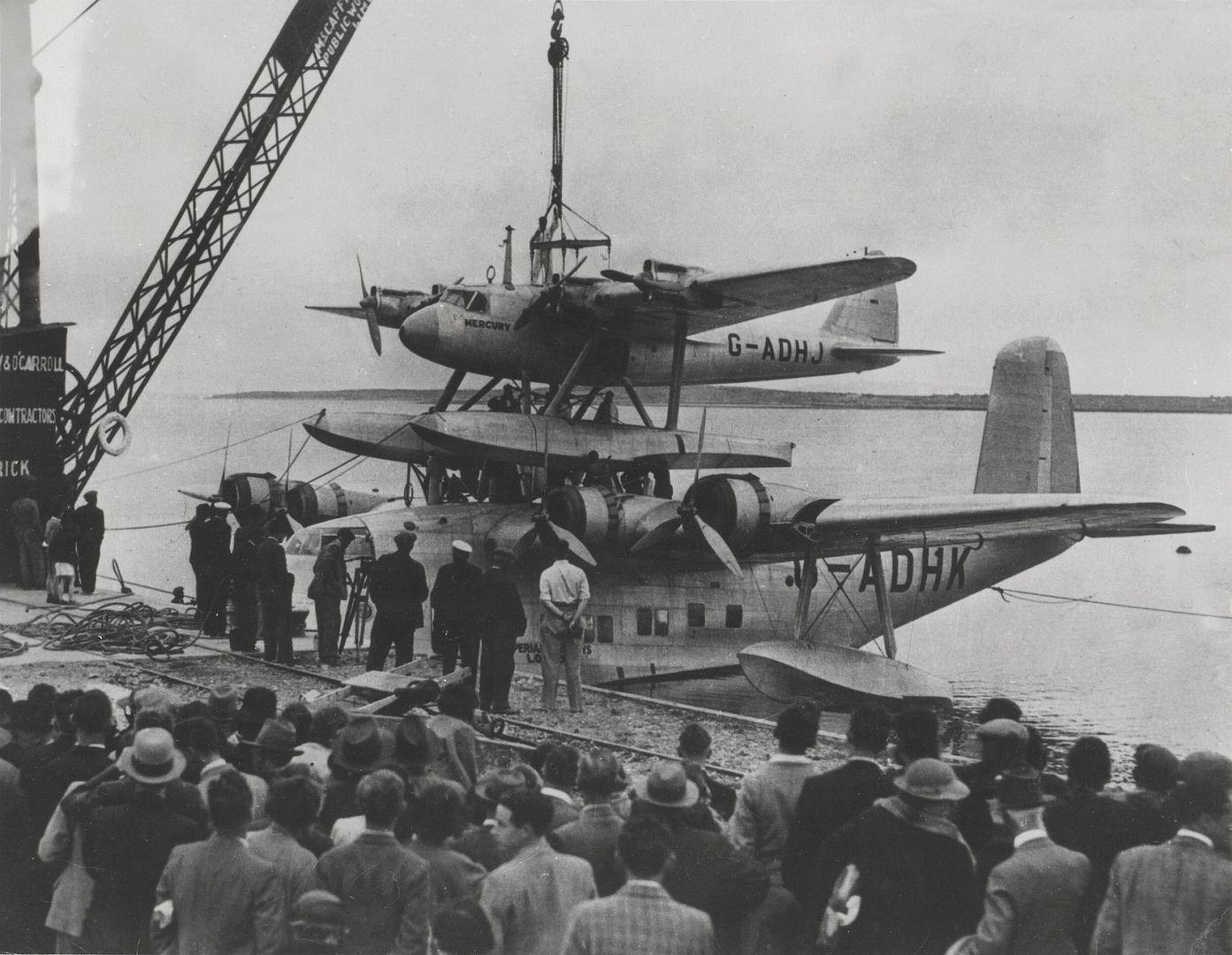
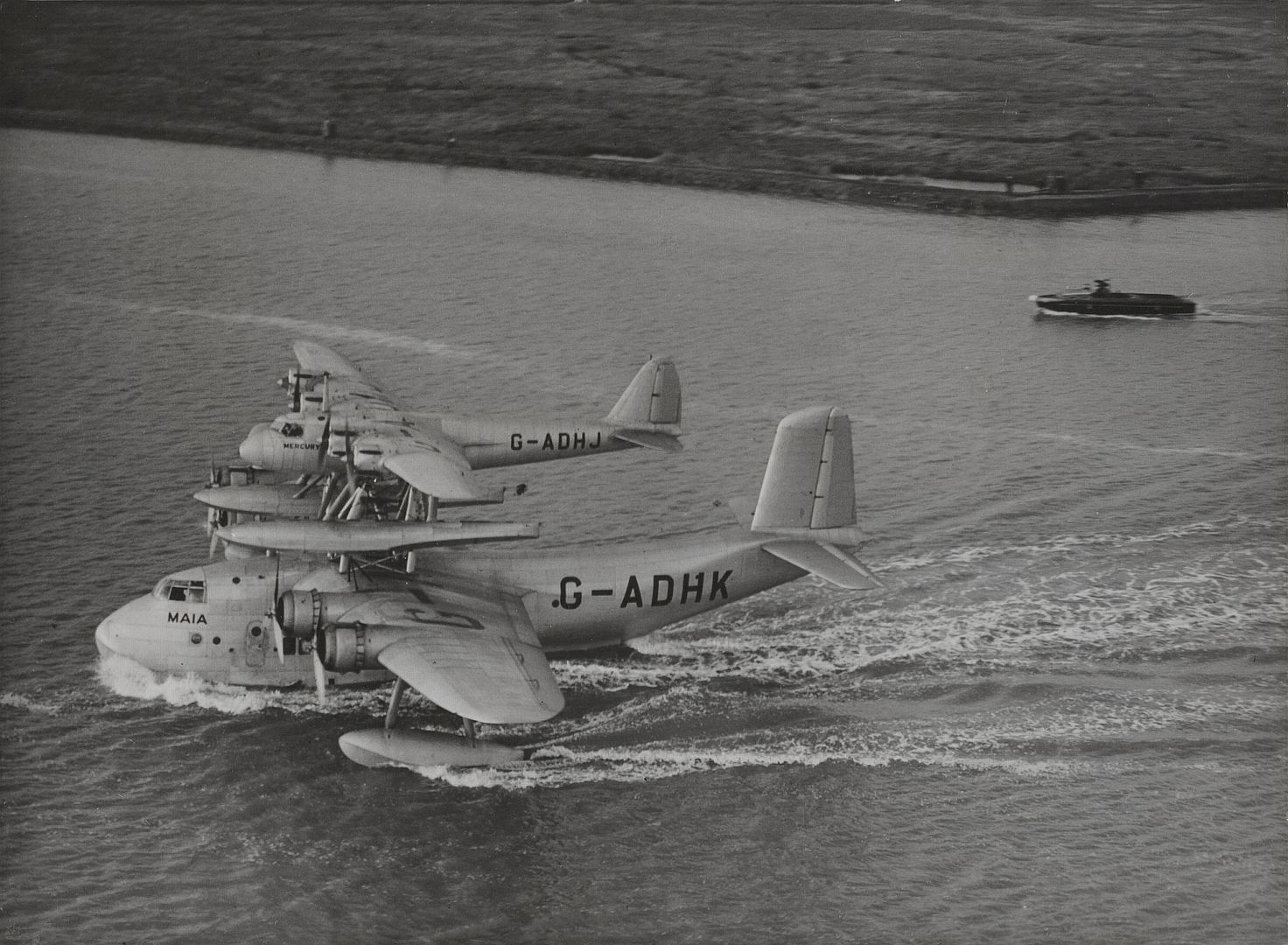
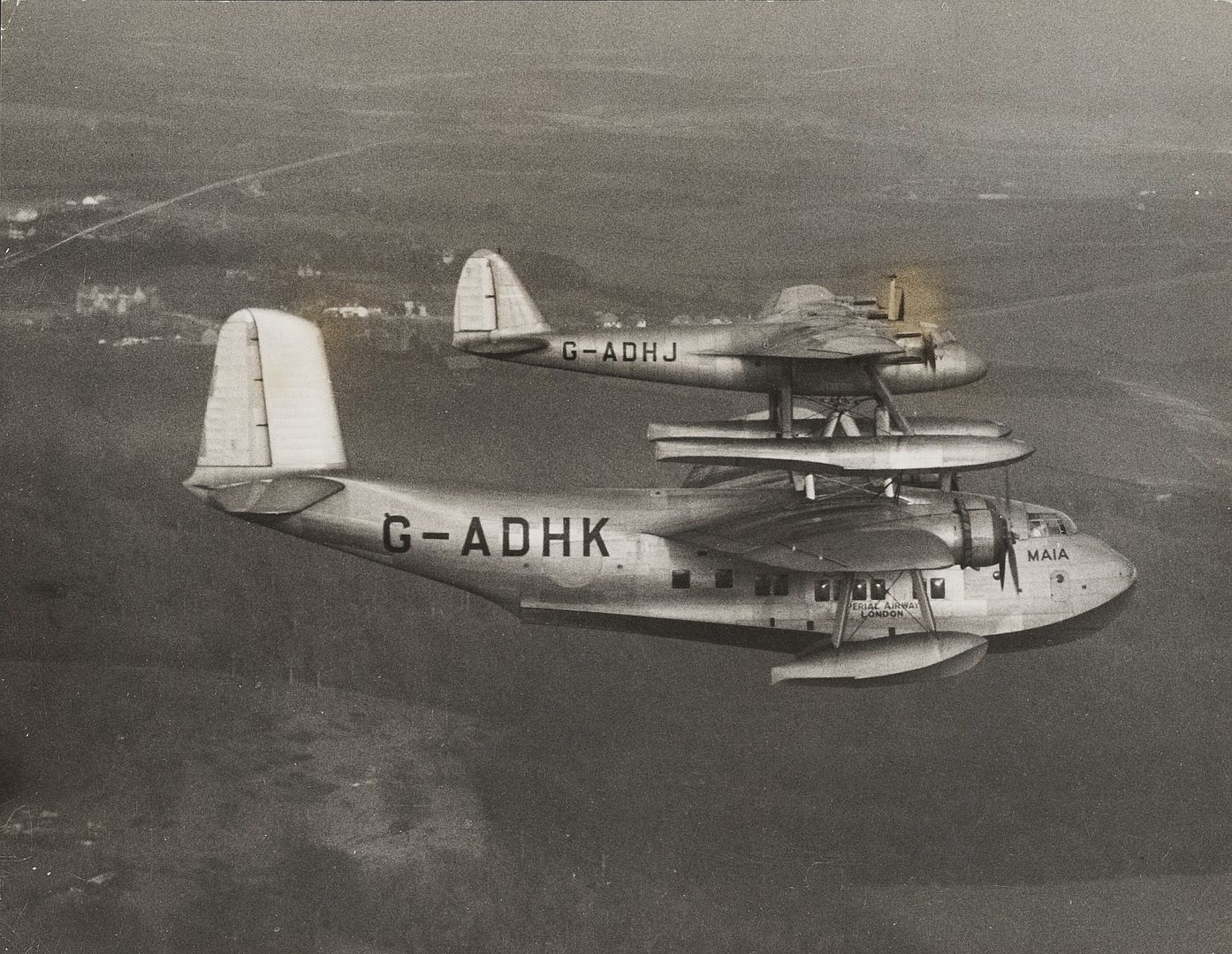
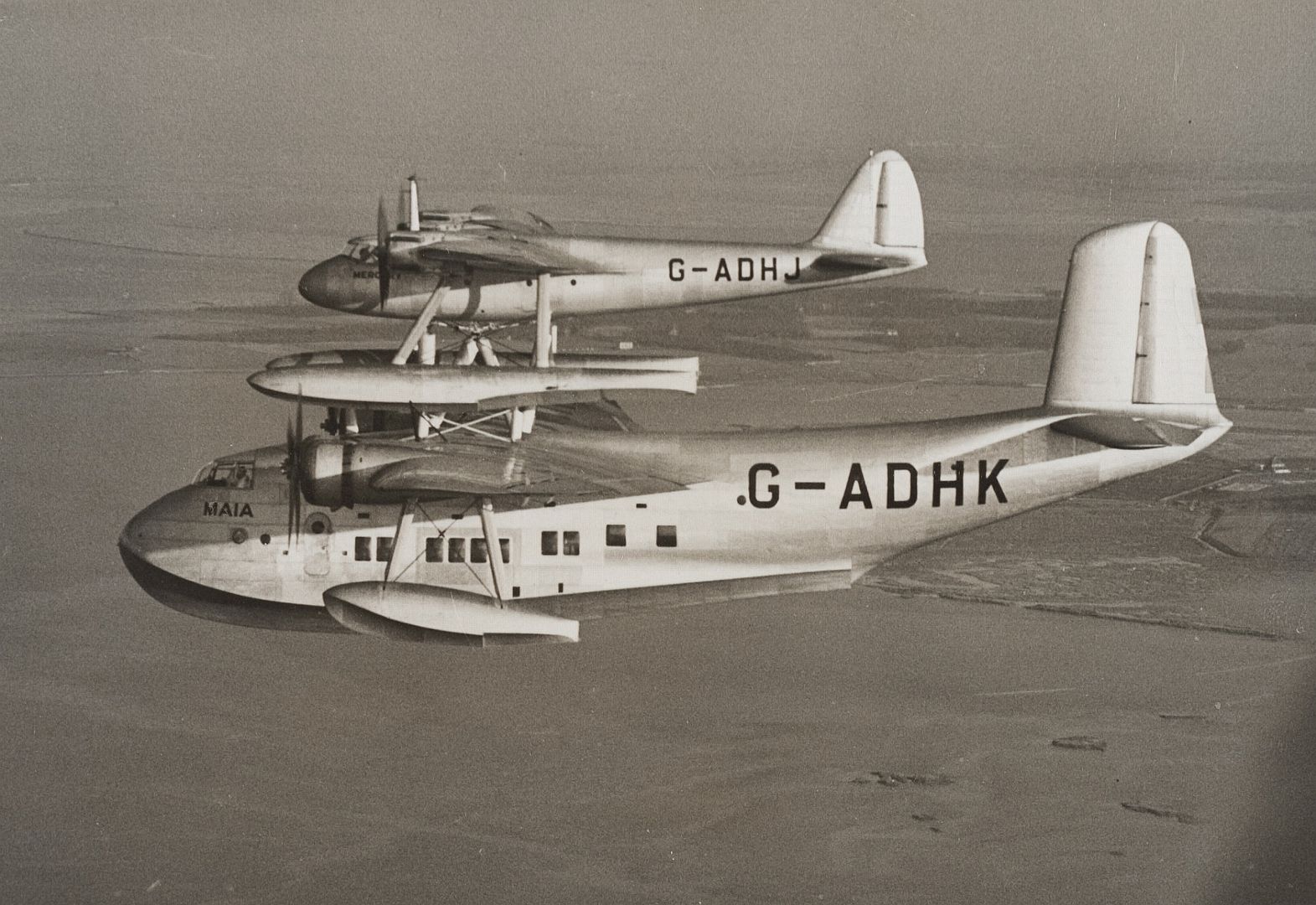
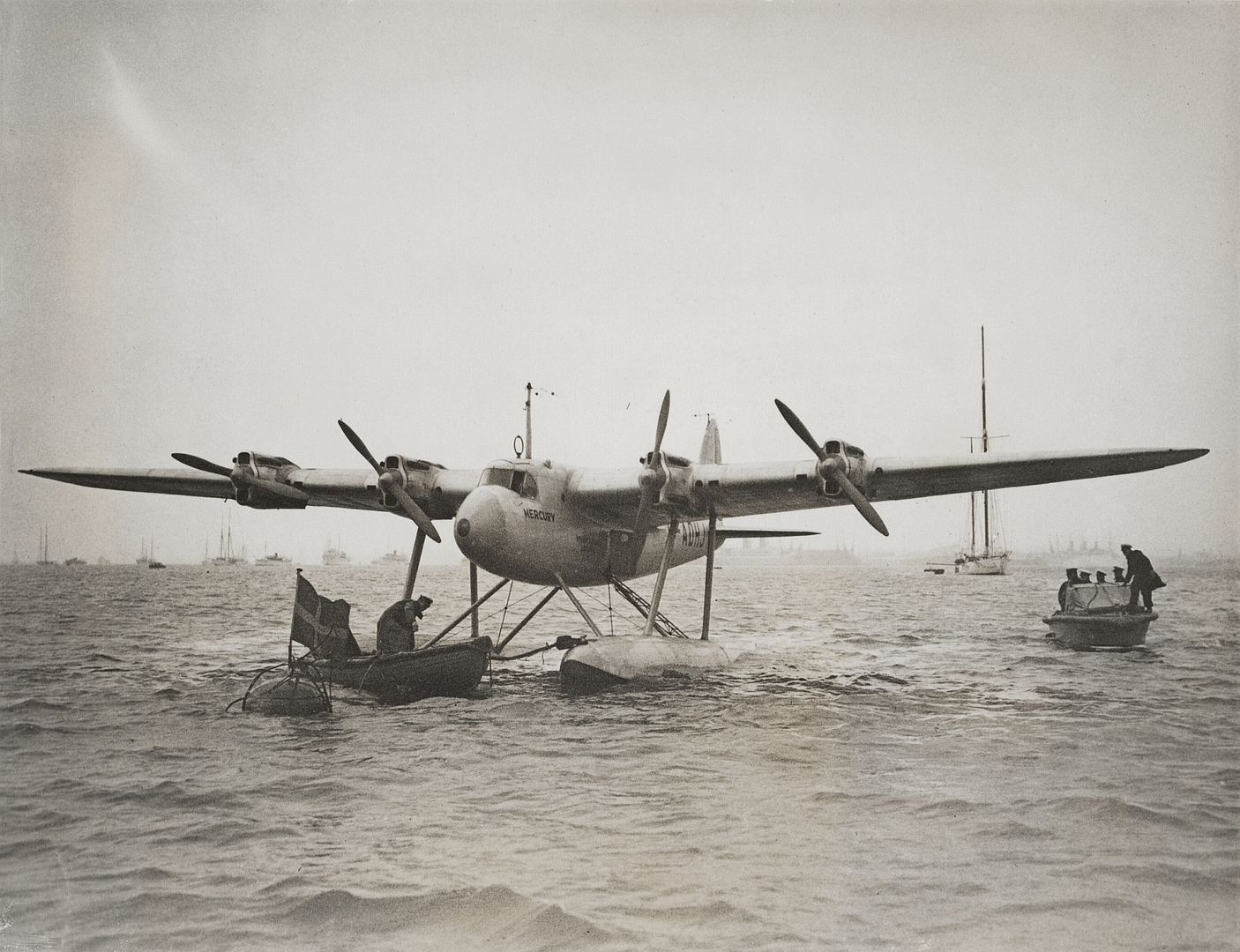
After Italy entered the Second World War in June 1940, it became impossible for mail to be safely flown between Britain and Egypt (and thus onto Australia) via the Mediterranean. Accordingly, a new "Horseshoe Route" was established that ran from Auckland/Sydney via Cairo (following the old "Eastern Route") to Durban, South Africa, and thence by sea to Britain. This was restricted after the loss of Singapore in February 1942 to being between Durban and Calcutta, India.
Wartime experience in operating the type at overload weights resulted in the realisation that the Empires could take off at considerably higher weights than the conservative maxima provided by Shorts and, although the last Empire crossings to America were made in 1940 (by Clare and Clyde), many more flights were made on the long, demanding and vital over-water Lisbon-Bathurst flights.
Variants
42 "C Class" Short Empire flying boats were built, including 31 S.23s, nine S.30s and two S.33s.
S.23 Mk I : powered by four 920 hp (690 kW) Bristol Pegasus Xc poppet valve radial engines. 27 built.
S.23 Mk II Bermuda : powered by four 920 horsepower (690 kW) Bristol Pegasus Xc poppet valve radial engines. 2 built.
S.23 Mk III Atlantic : powered by four 920 hp (690 kW) Bristol Pegasus Xc poppet valve radial engines. two built.
S.23M : two converted from impressed S.23 Mk I, with an ASV radar, armed with two Boulton Paul gun turrets and depth charges.
S.30 Mk I : powered by four 890 hp (660 kW) Bristol Perseus XIIc sleeve valve radial engines. One built.
S.30 Mk I (Cathay) : powered by four 920 hp (690 kW) Bristol Pegasus Xc poppet valve radial engines. One built.
S.30 Mk II New Zealand : powered by four 890 hp (660 kW) Bristol Perseus XIIc sleeve valve radial engines. One built.
S.30 Mk III Atlantic : powered by four 890 hp (660 kW) Bristol Perseus XIIc sleeve valve radial engines. Four built.
S.30 Mk IV New Zealand : powered by four 890 hp (660 kW) Bristol Perseus XIIc sleeve valve radial engines. Two built.
S.30M : two converted from impressed S.30 Mk III Atlantic for ASV trials and transport duties.
S.33 : powered by four 920 hp (690 kW) Bristol Pegasus Xc poppet valve radial engines. Two completed, third example scrapped when 75% complete.
Many S.23, S.30 & S.33 were re-engined during the war with 1,010 hp (750 kW) Bristol Pegasus XXII poppet valve radial engines.
List of aircraft
Registration Name Operator
S.23
G-ADHL Canopus Imperial Airways/BOAC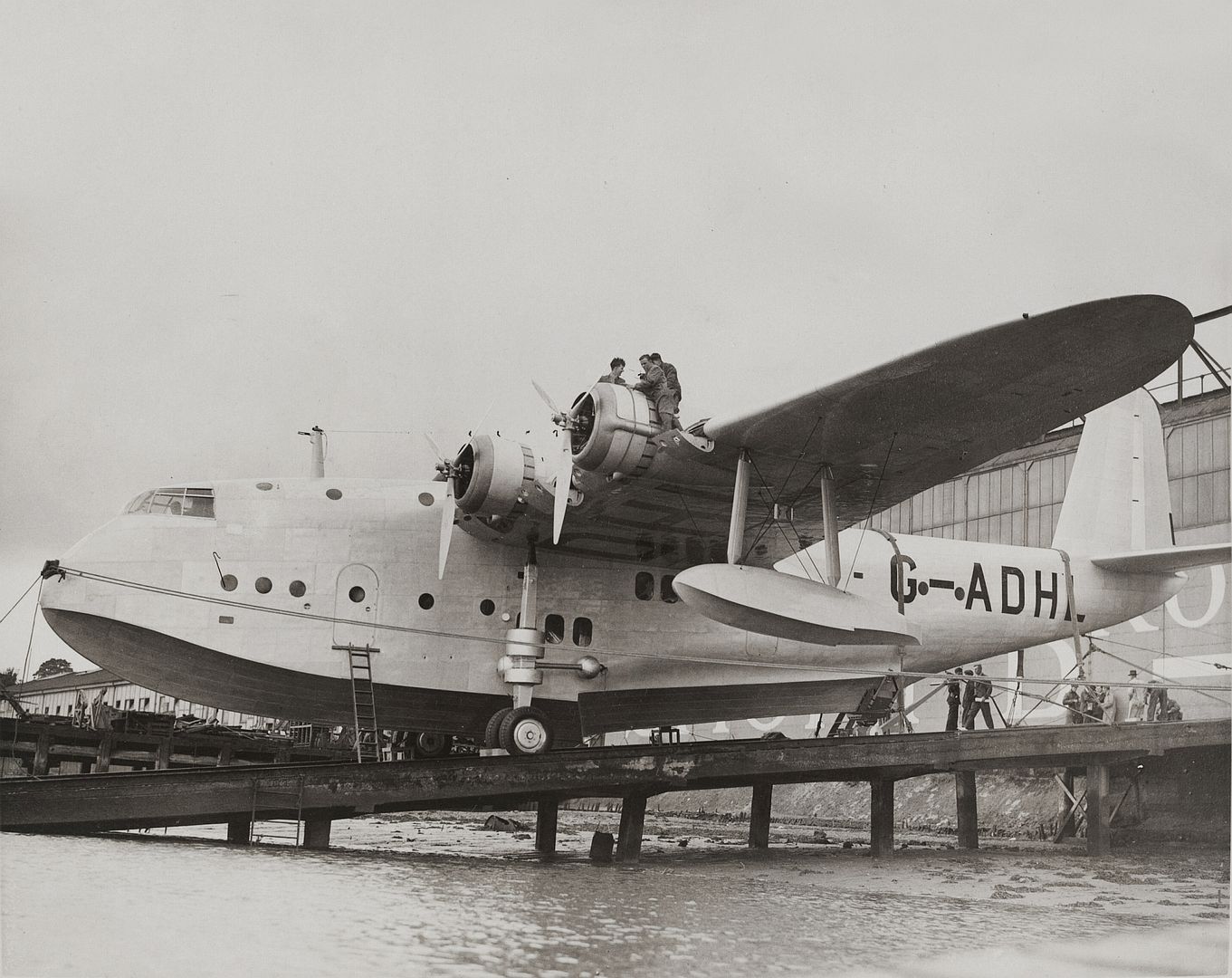
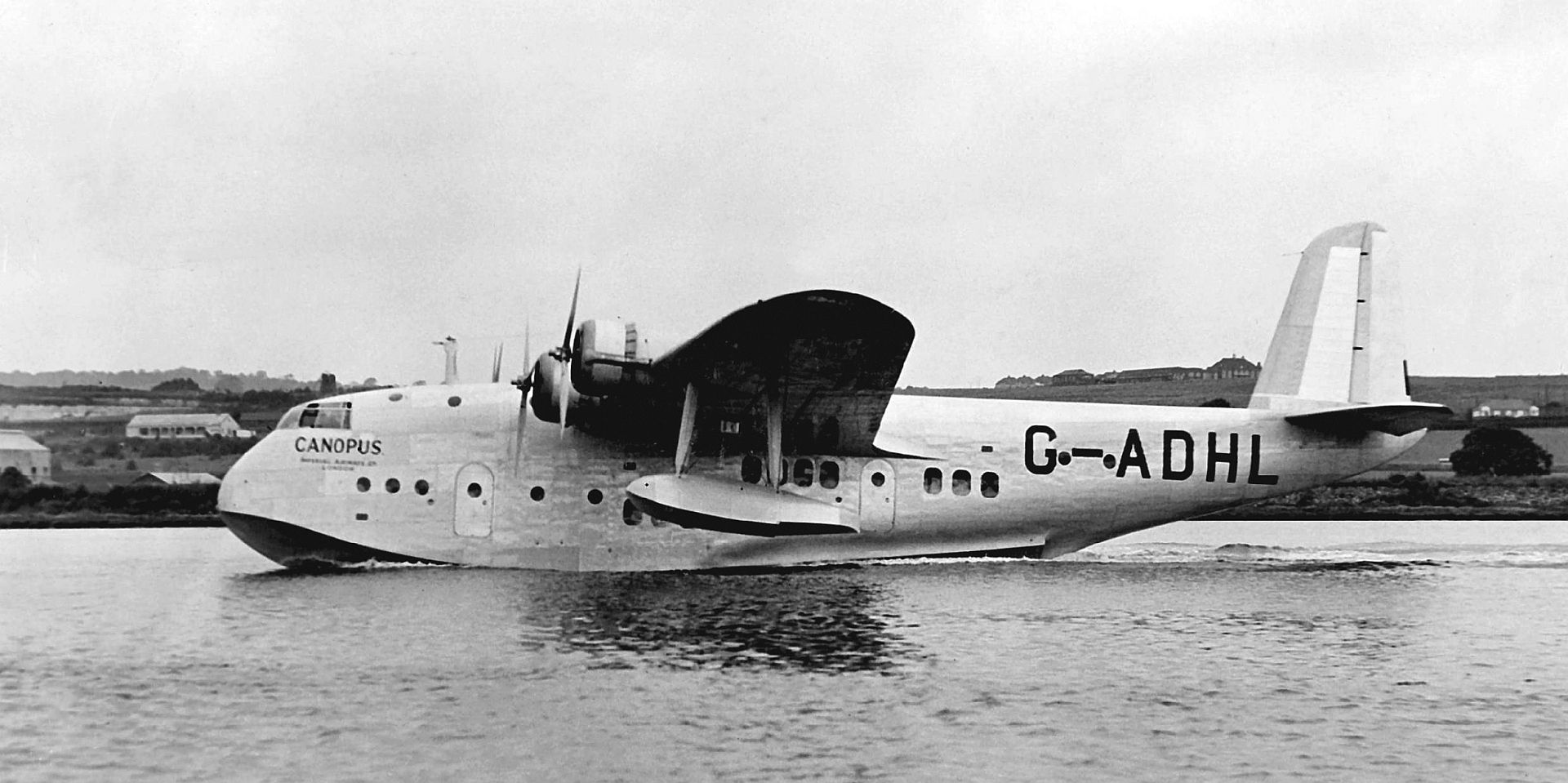
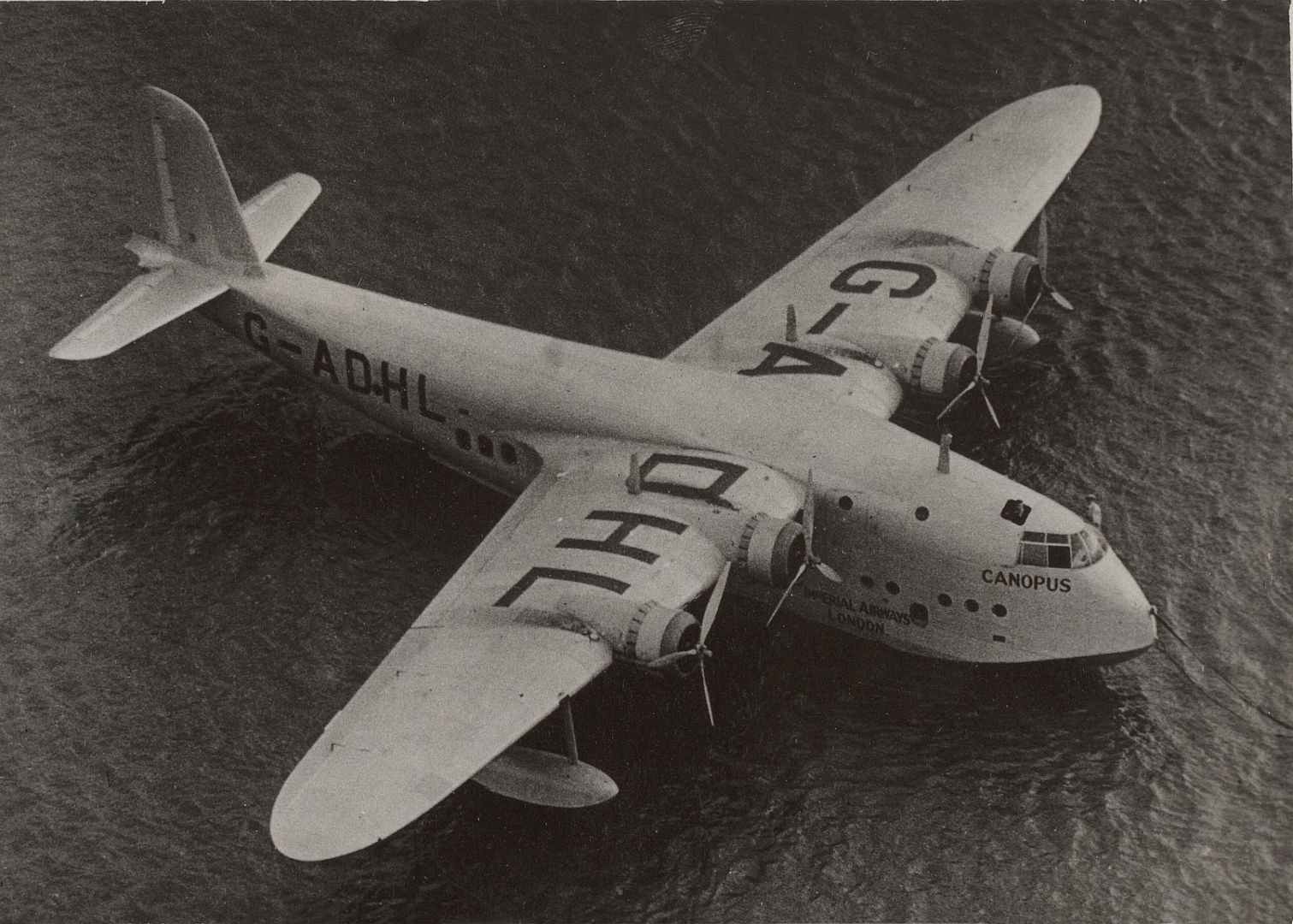
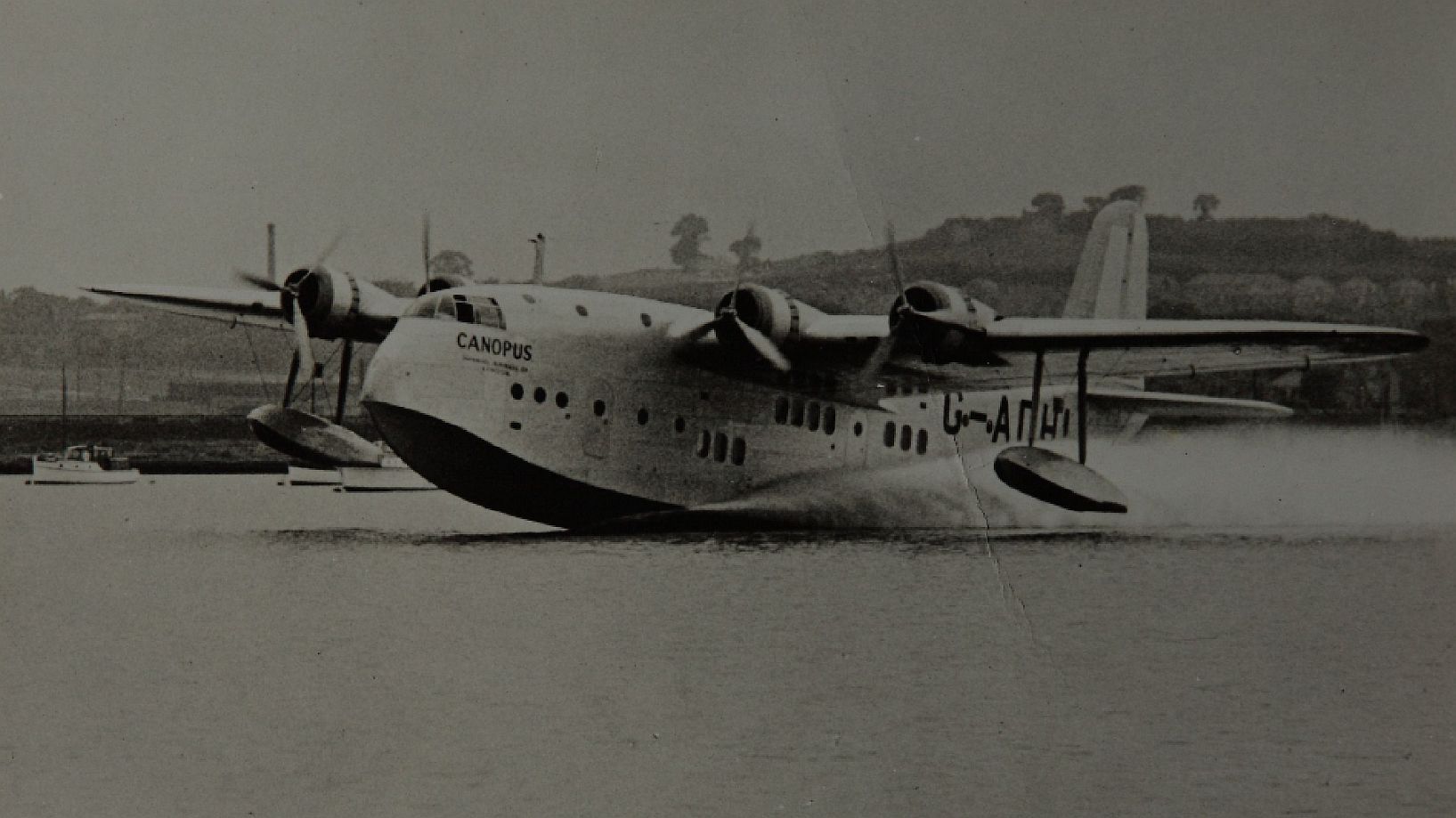
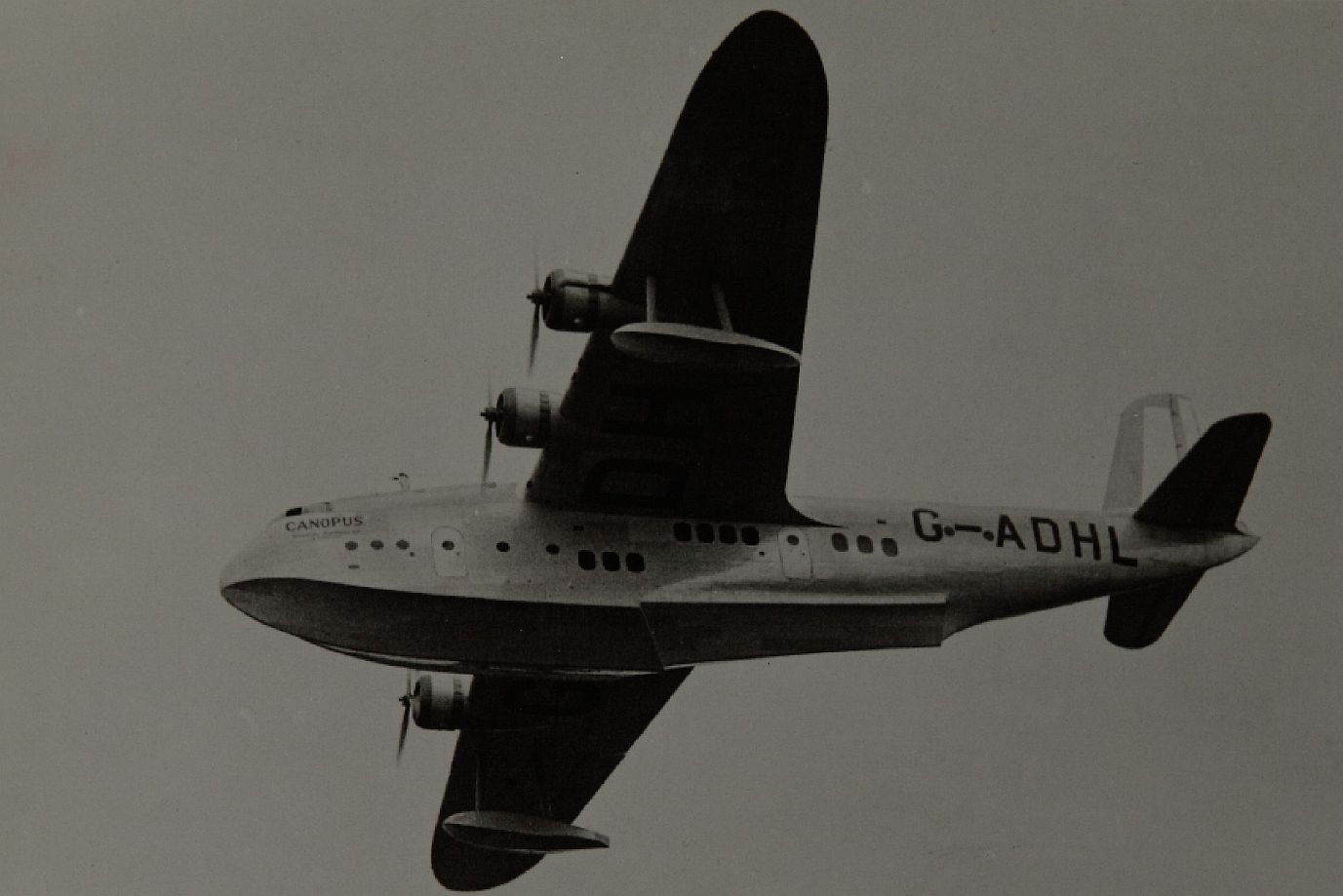
G-ADHM Caledonia Imperial Airways, later BOAC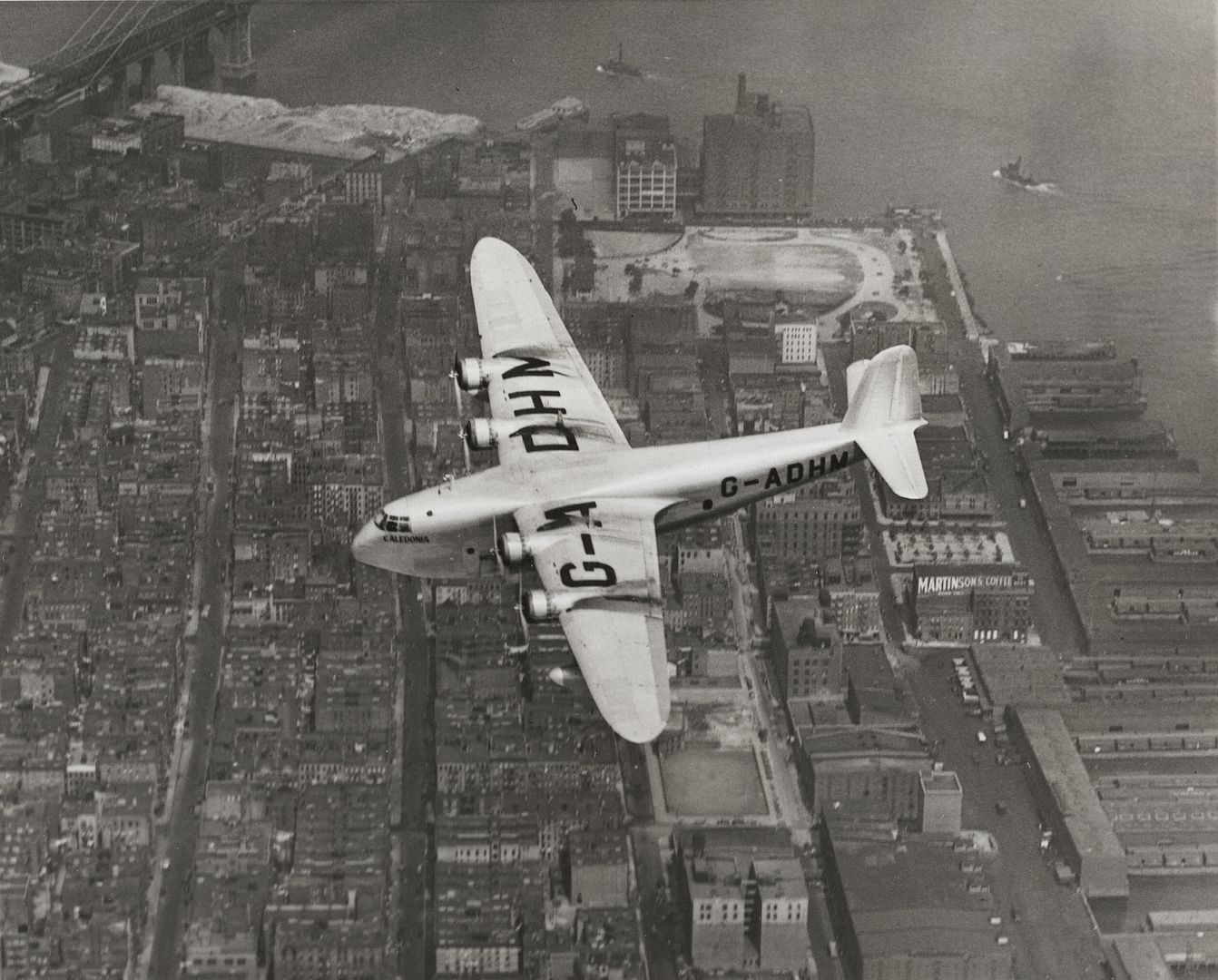

G-ADUT Centaurus Imperial Airways, to Royal Australian Air Force (RAAF) in 1939 (as serial A18-10)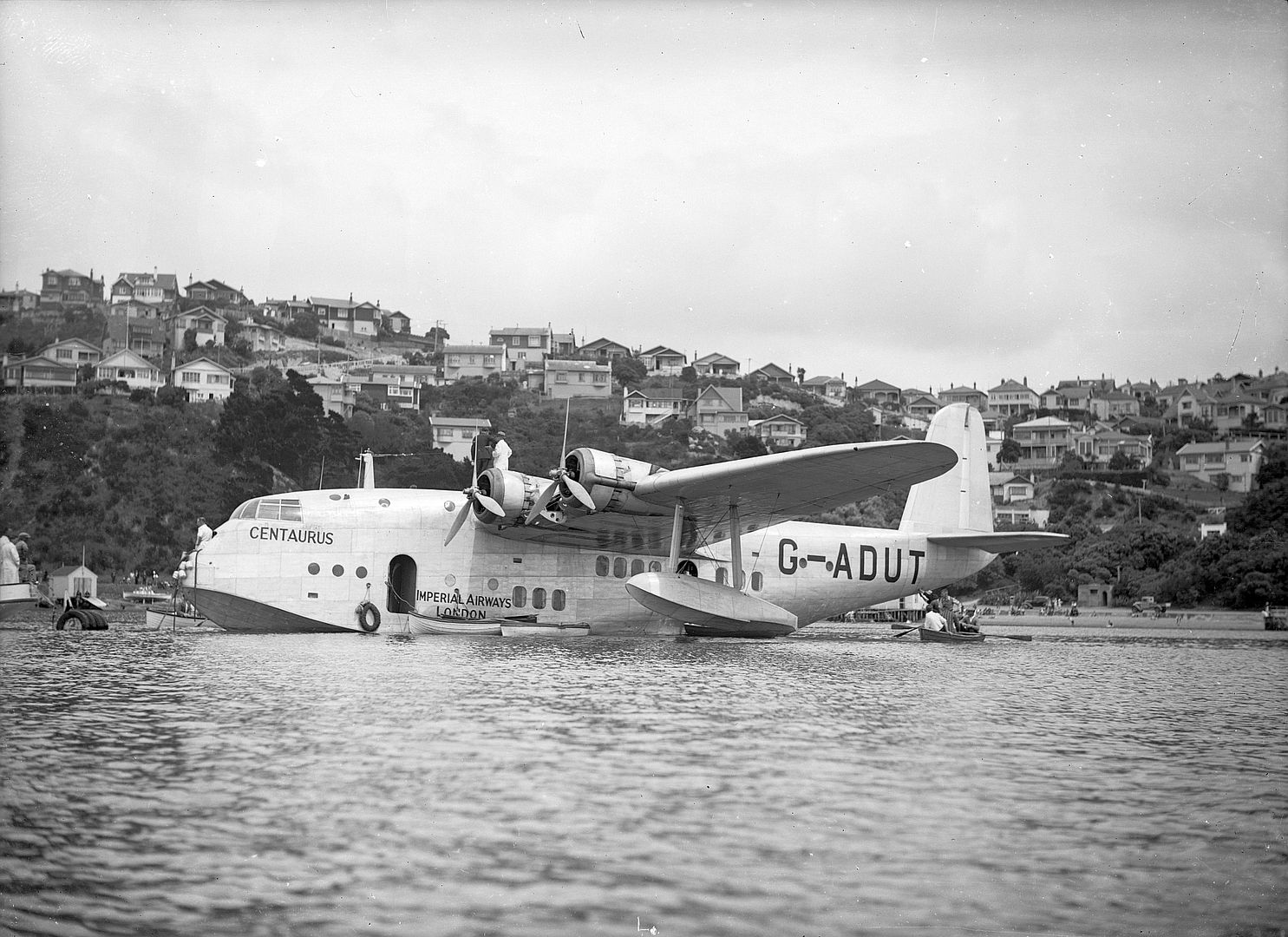
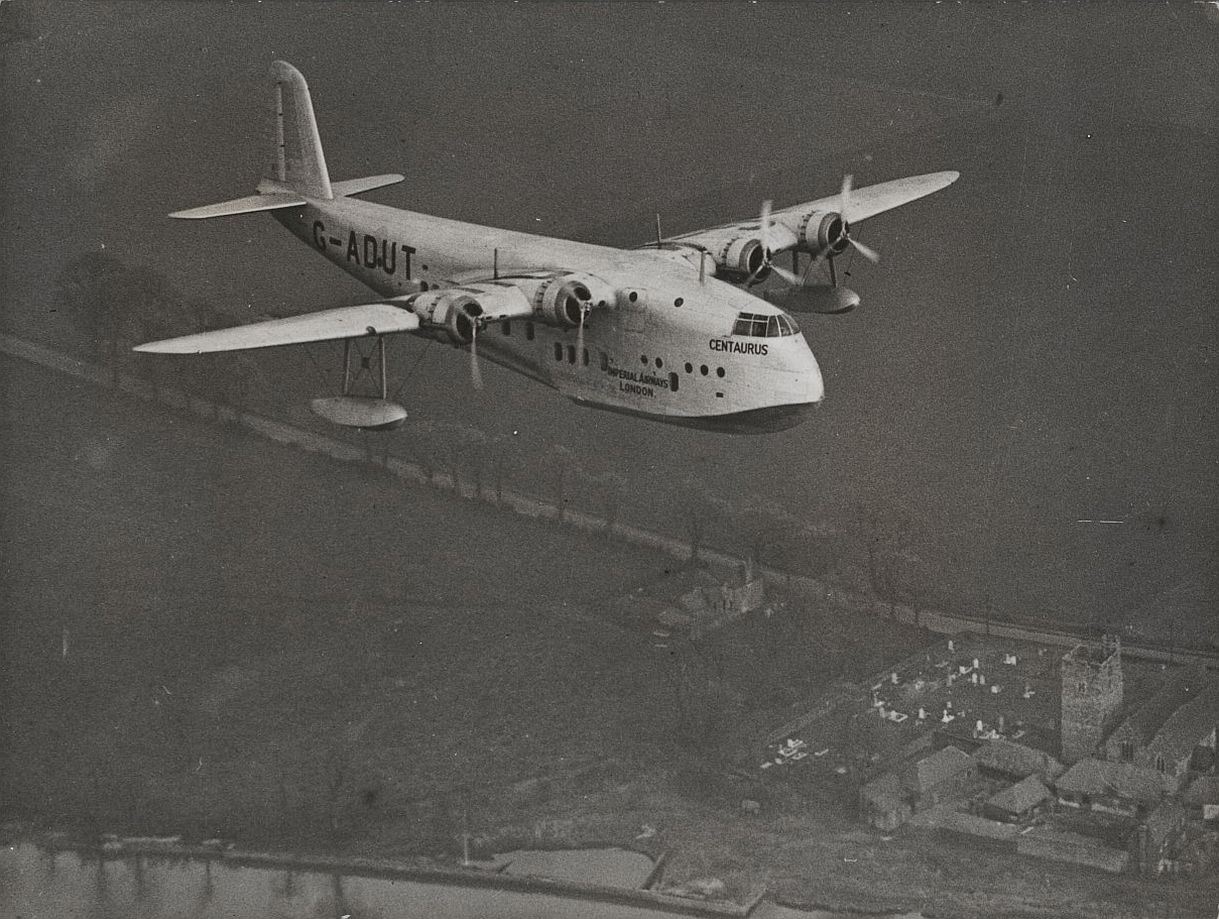
G-ADUU Cavalier Imperial Airways. Crashed 21 January 1939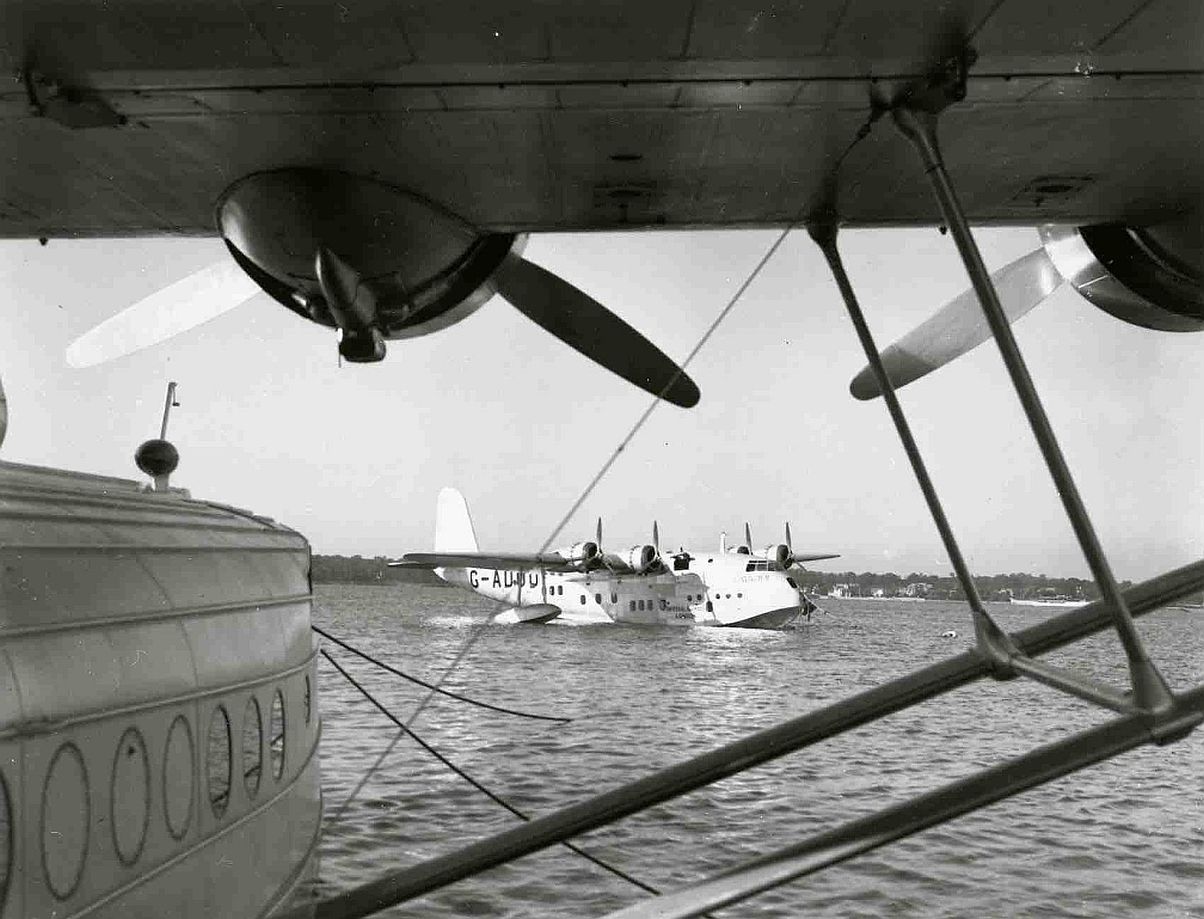

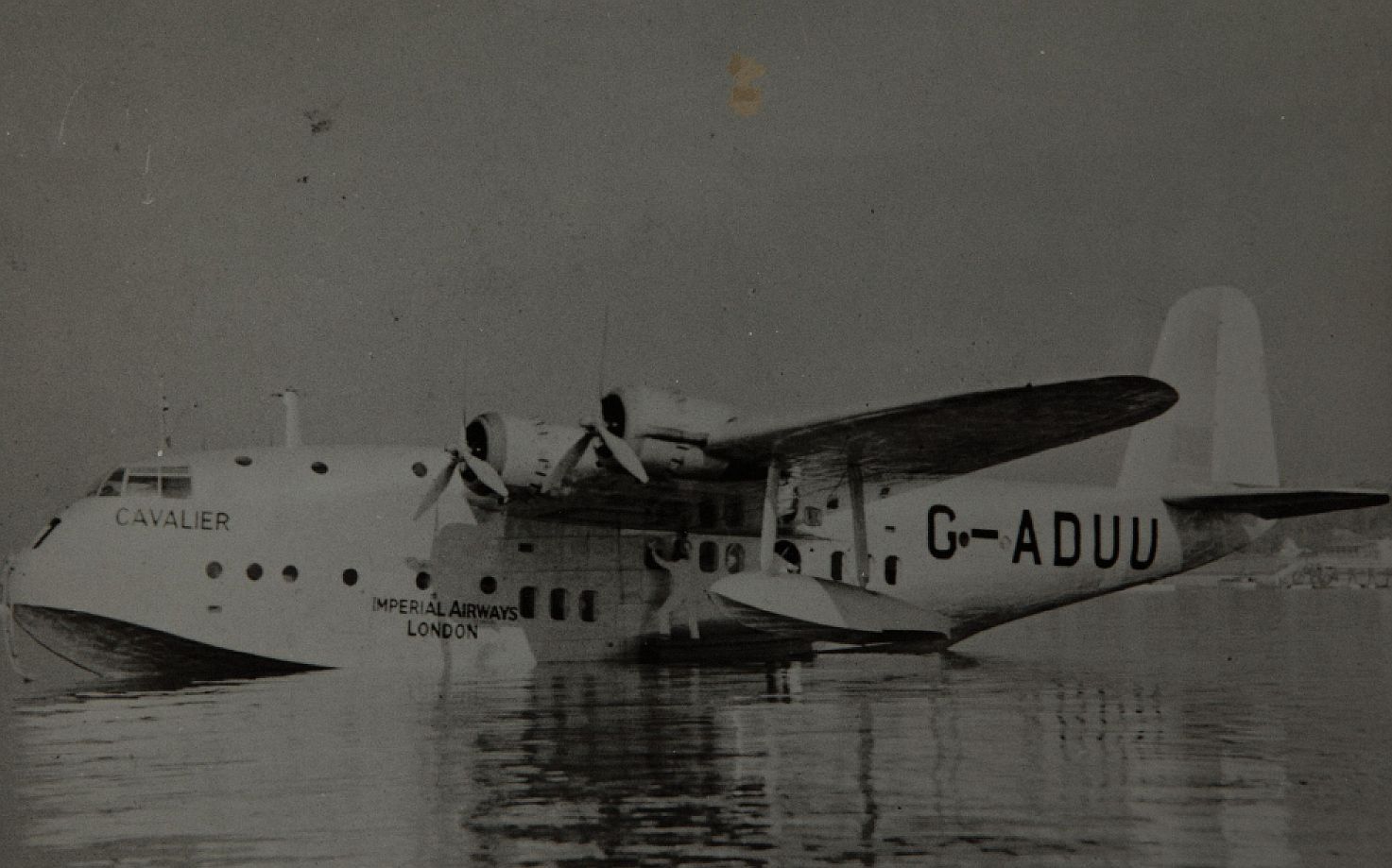
G-ADUV Cambria Imperial Airways, later BOAC

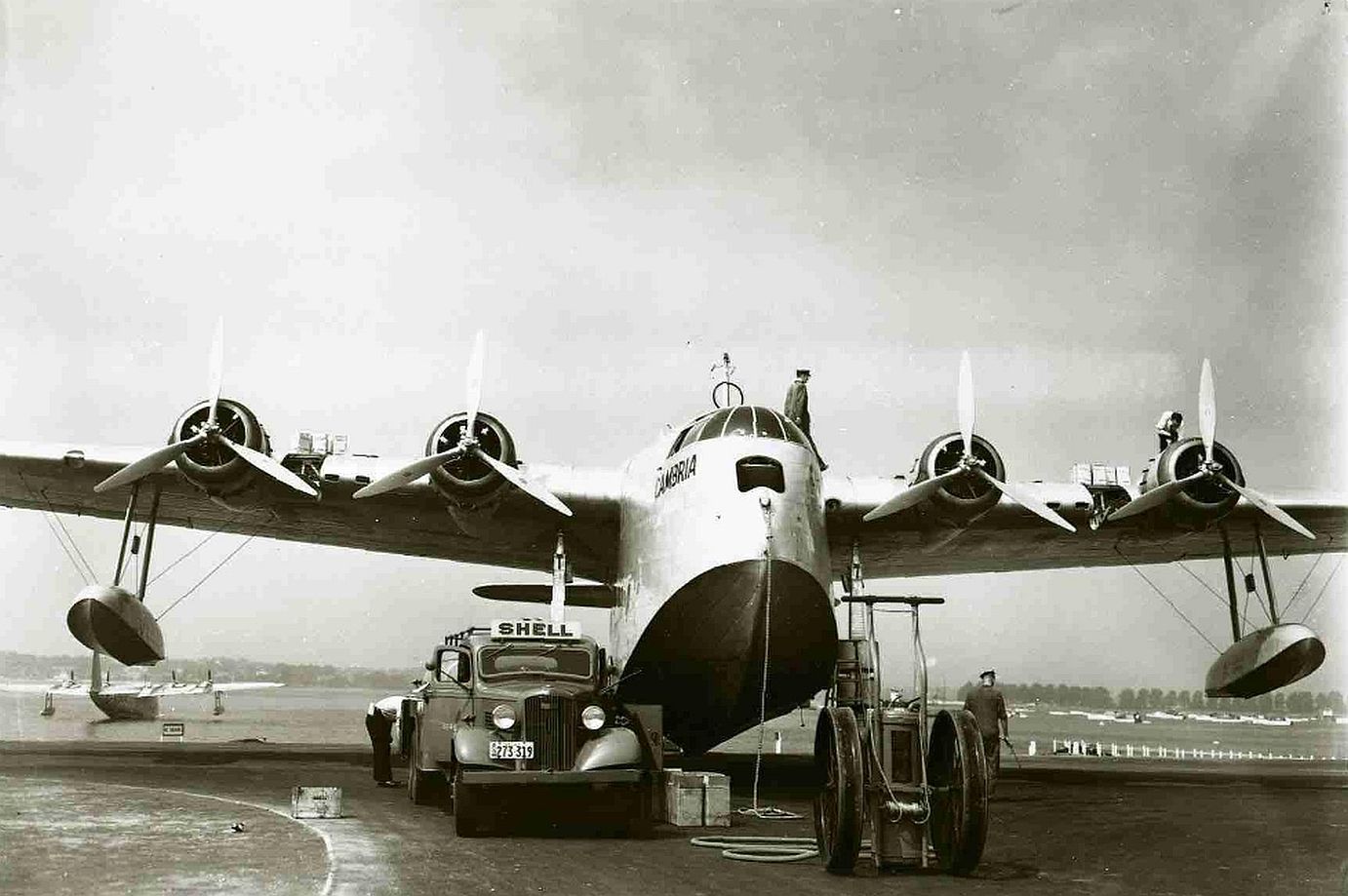
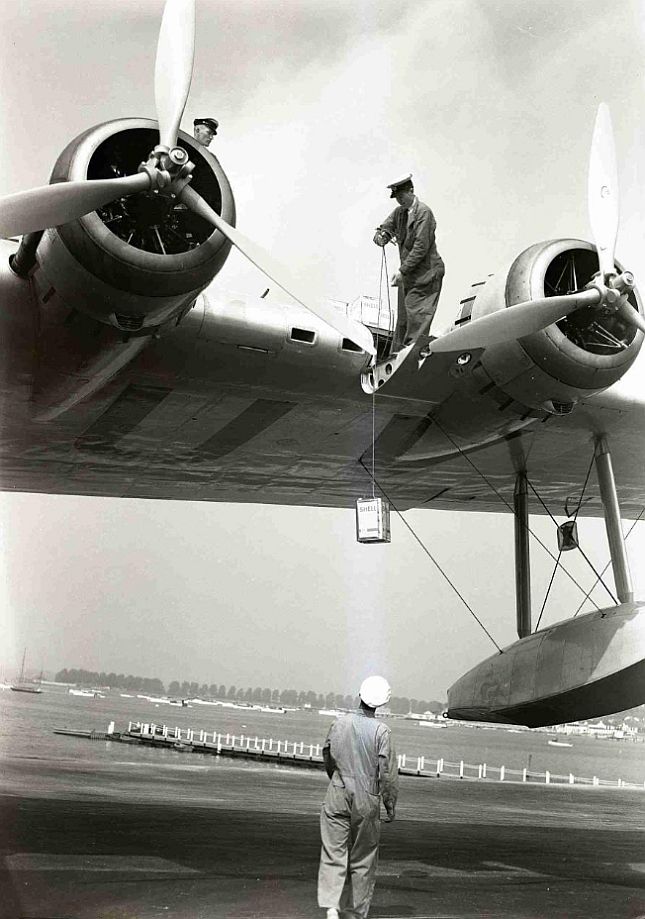
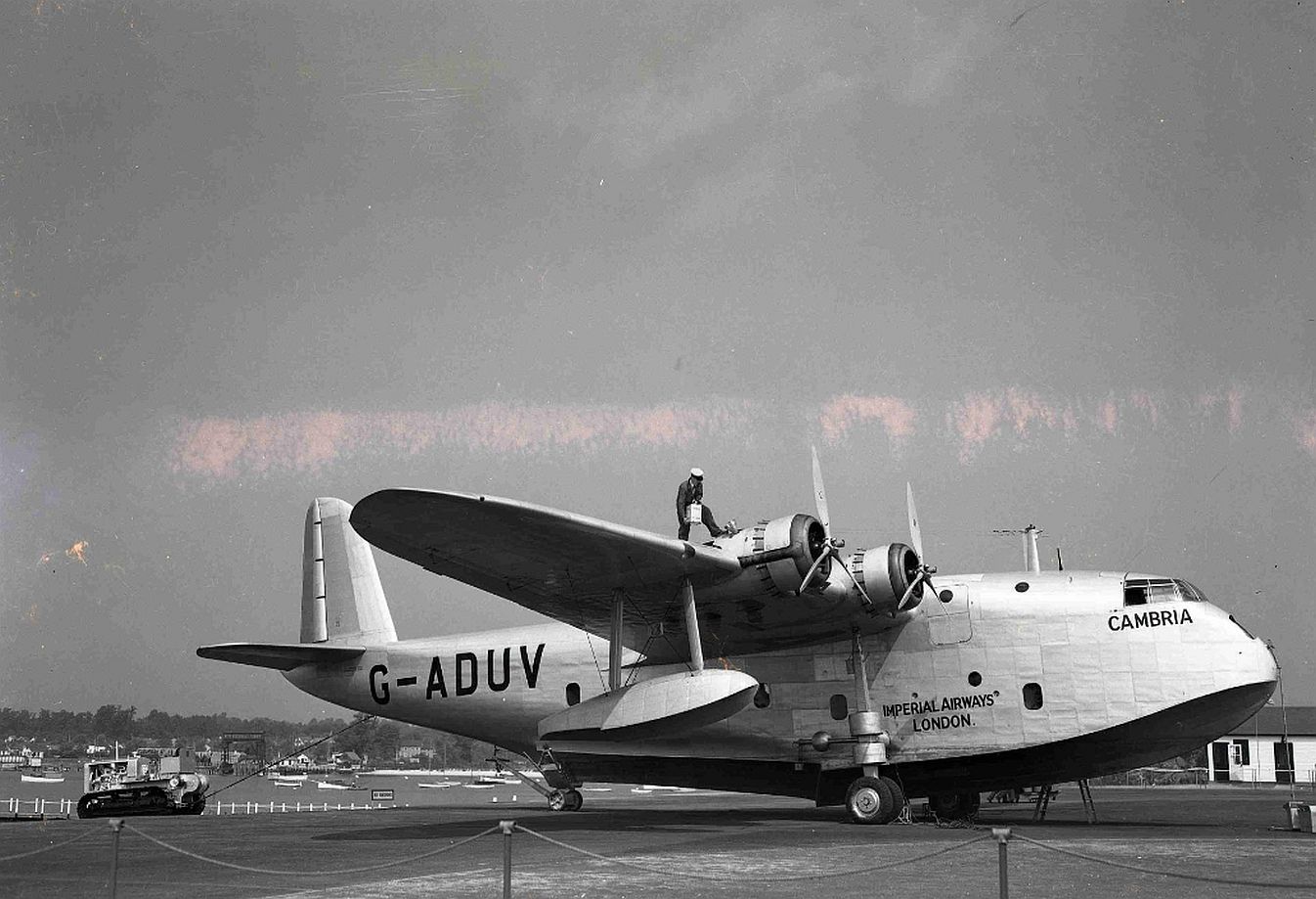
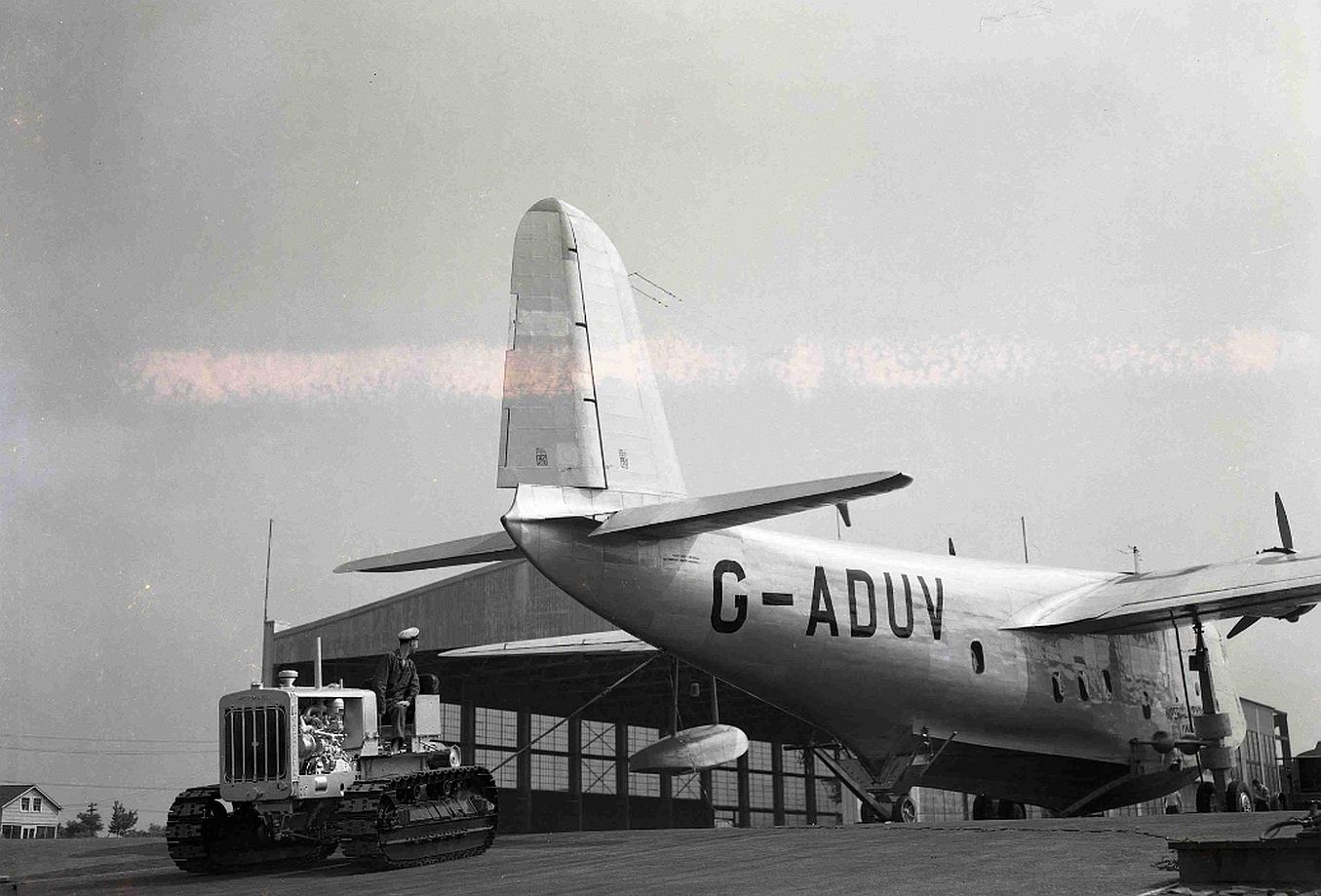
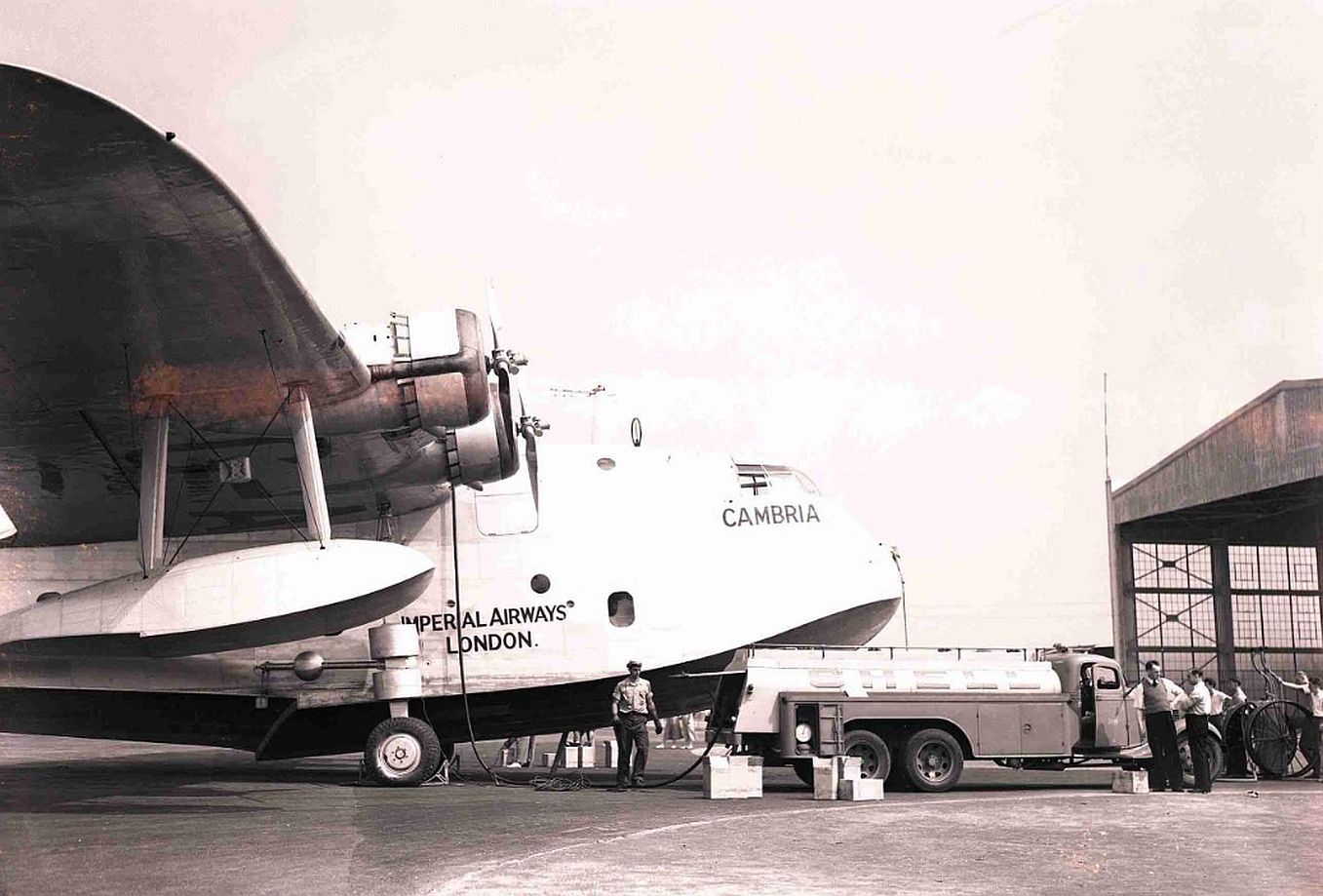
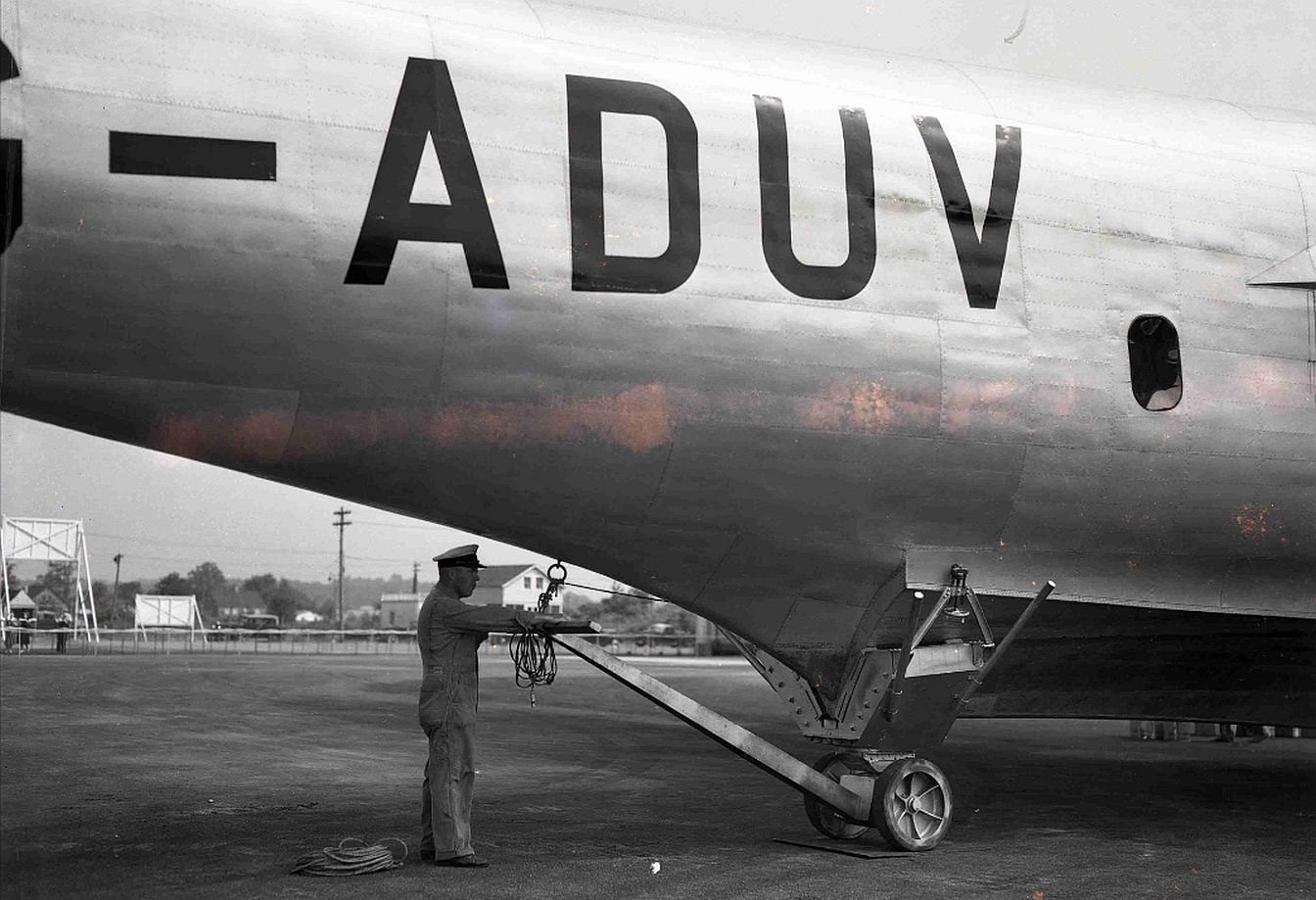
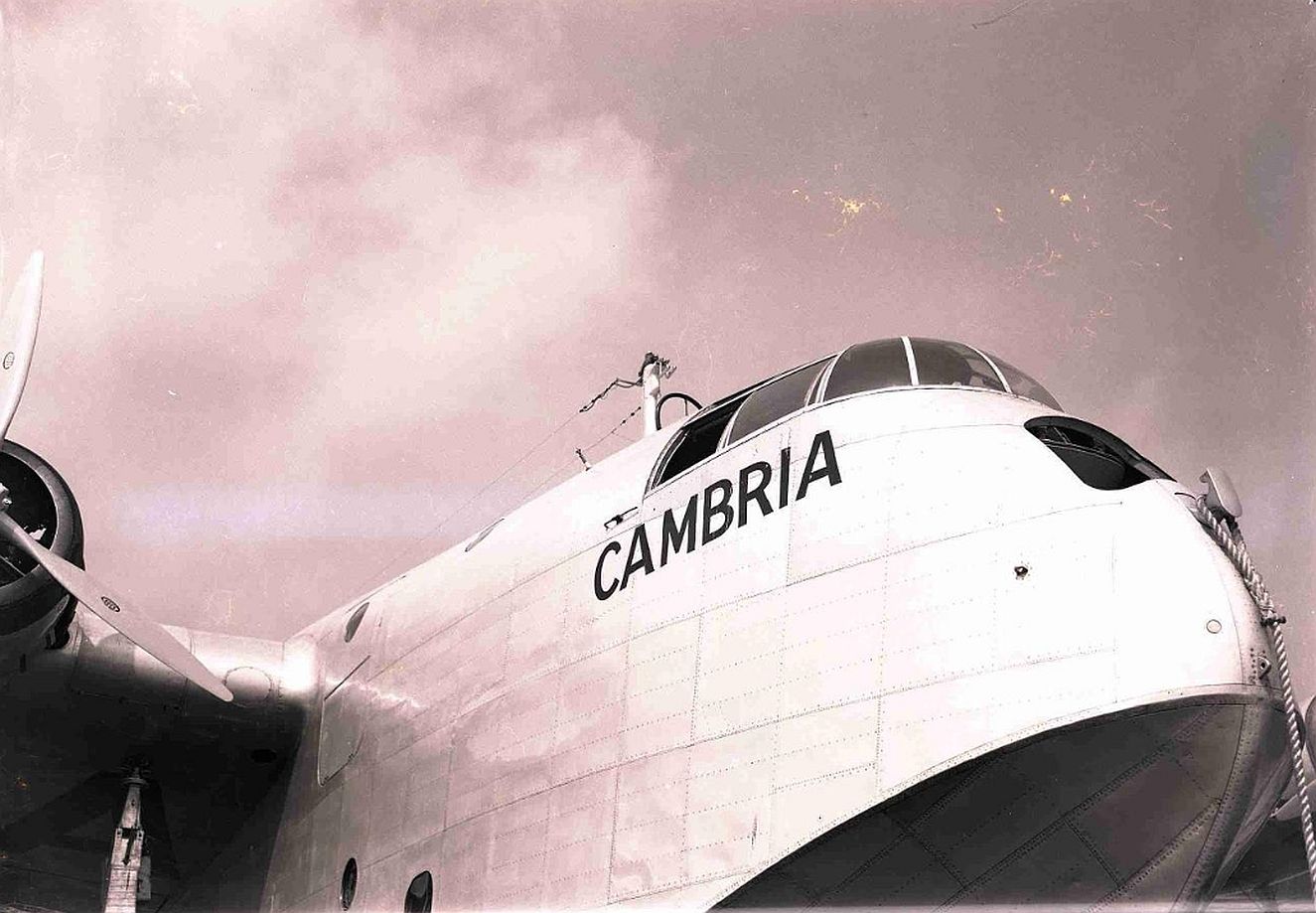
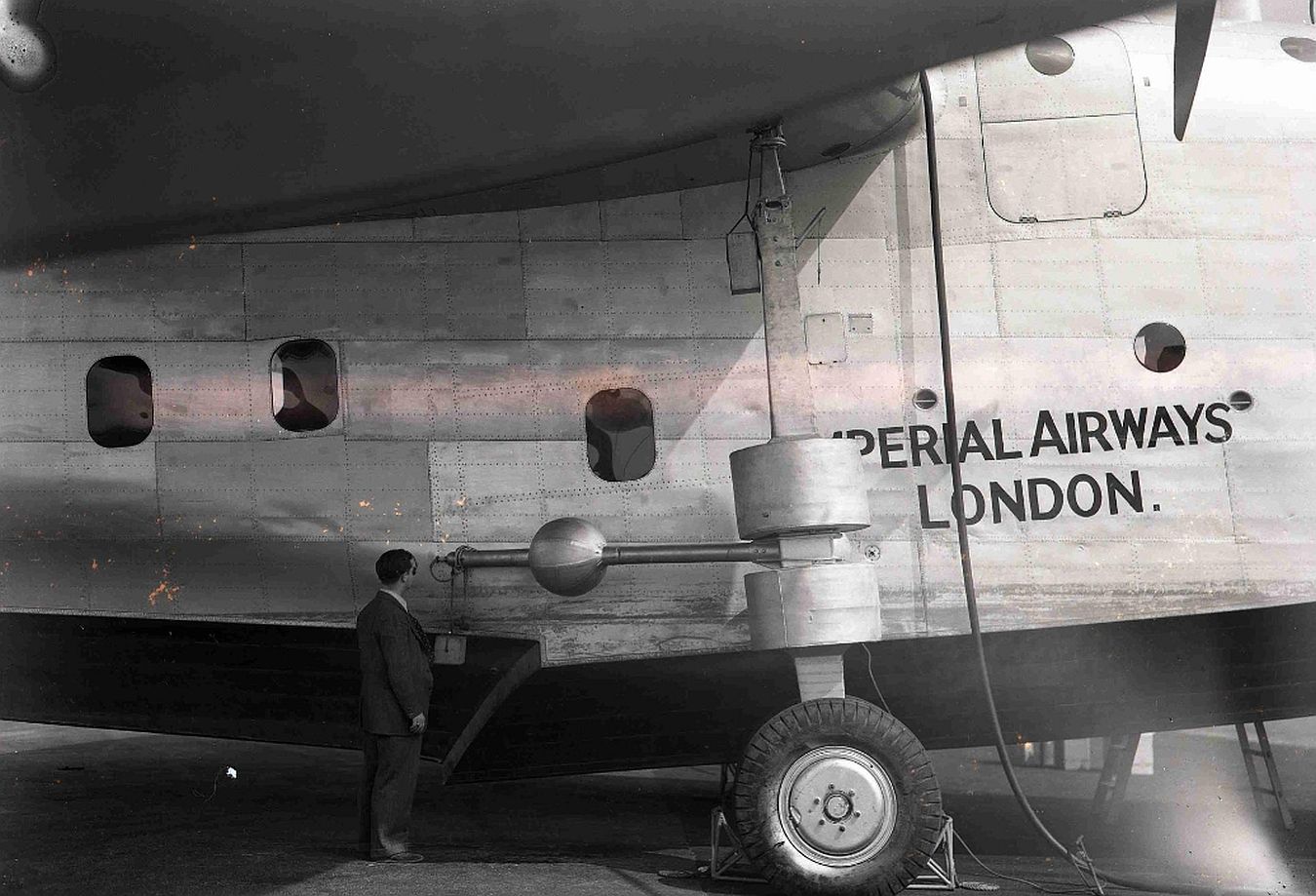
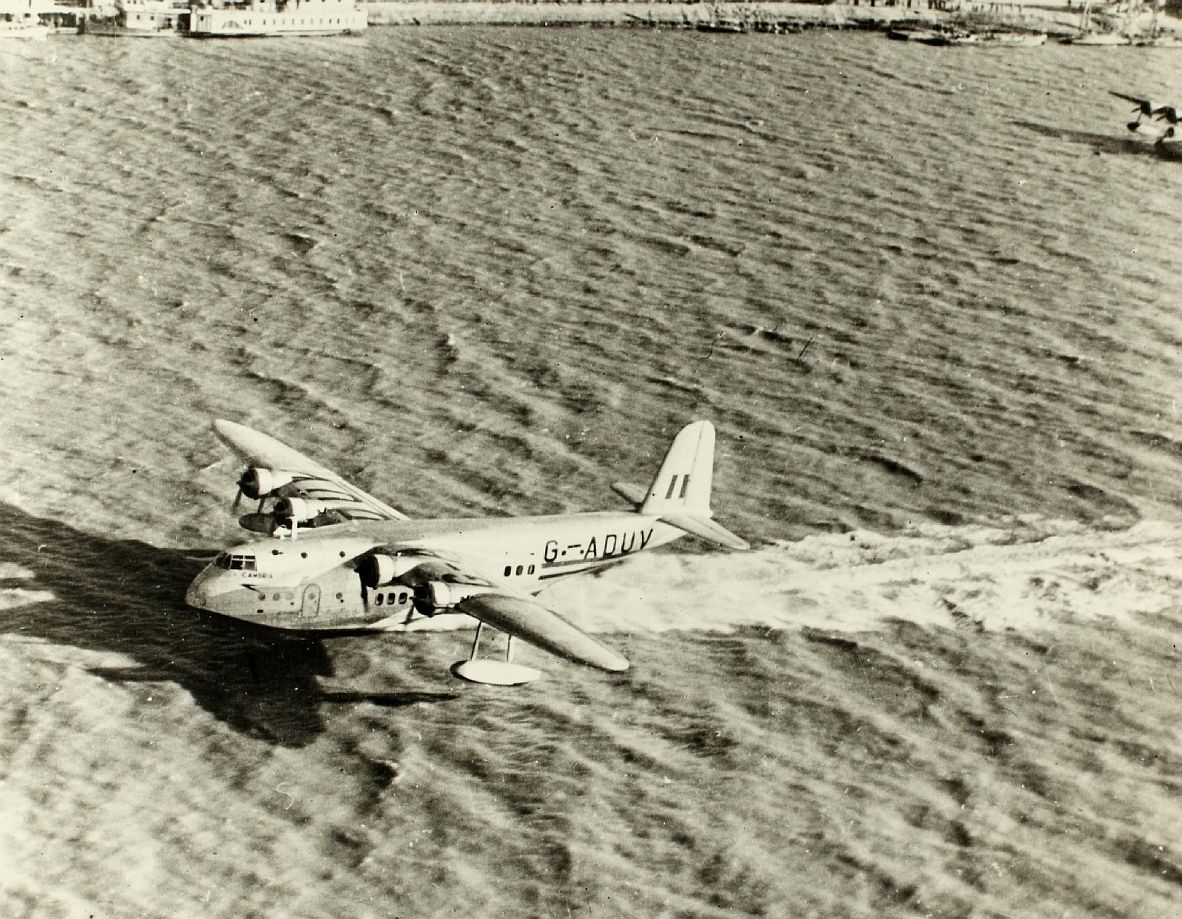
G-ADUW Castor Imperial Airways, later BOAC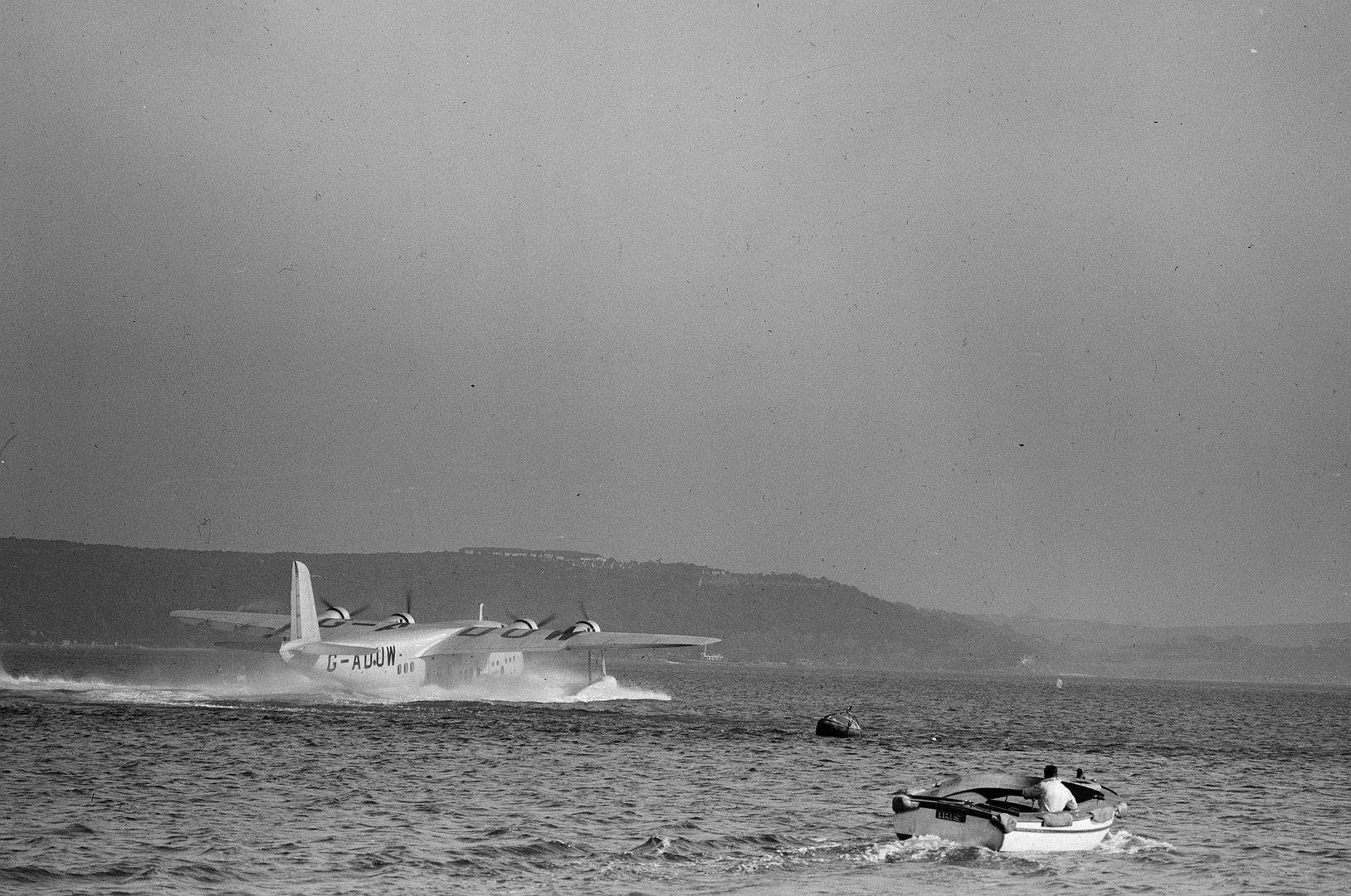
G-ADUX Cassiopeia Imperial Airways, later BOAC
G-ADUY Capella Imperial Airways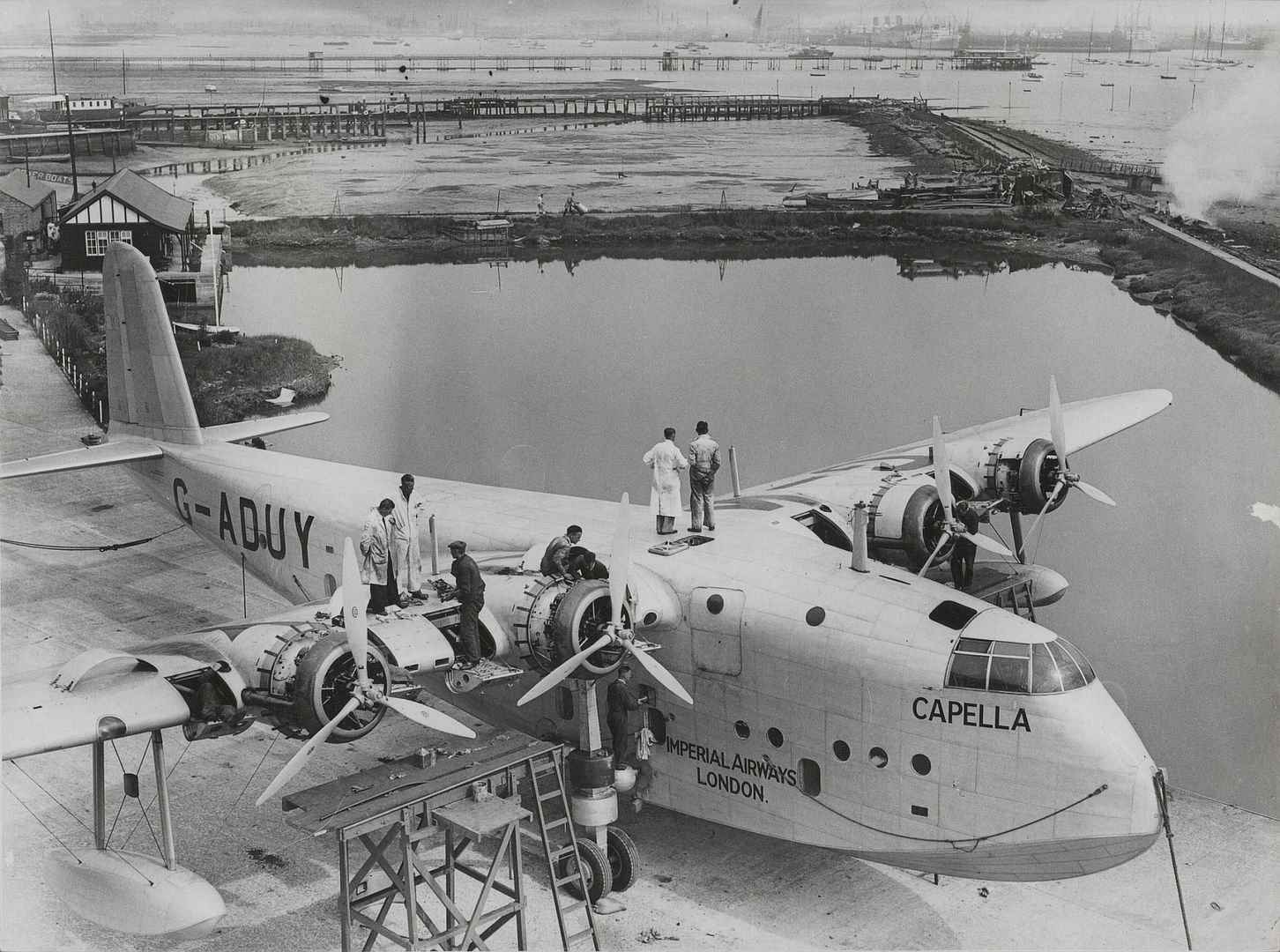
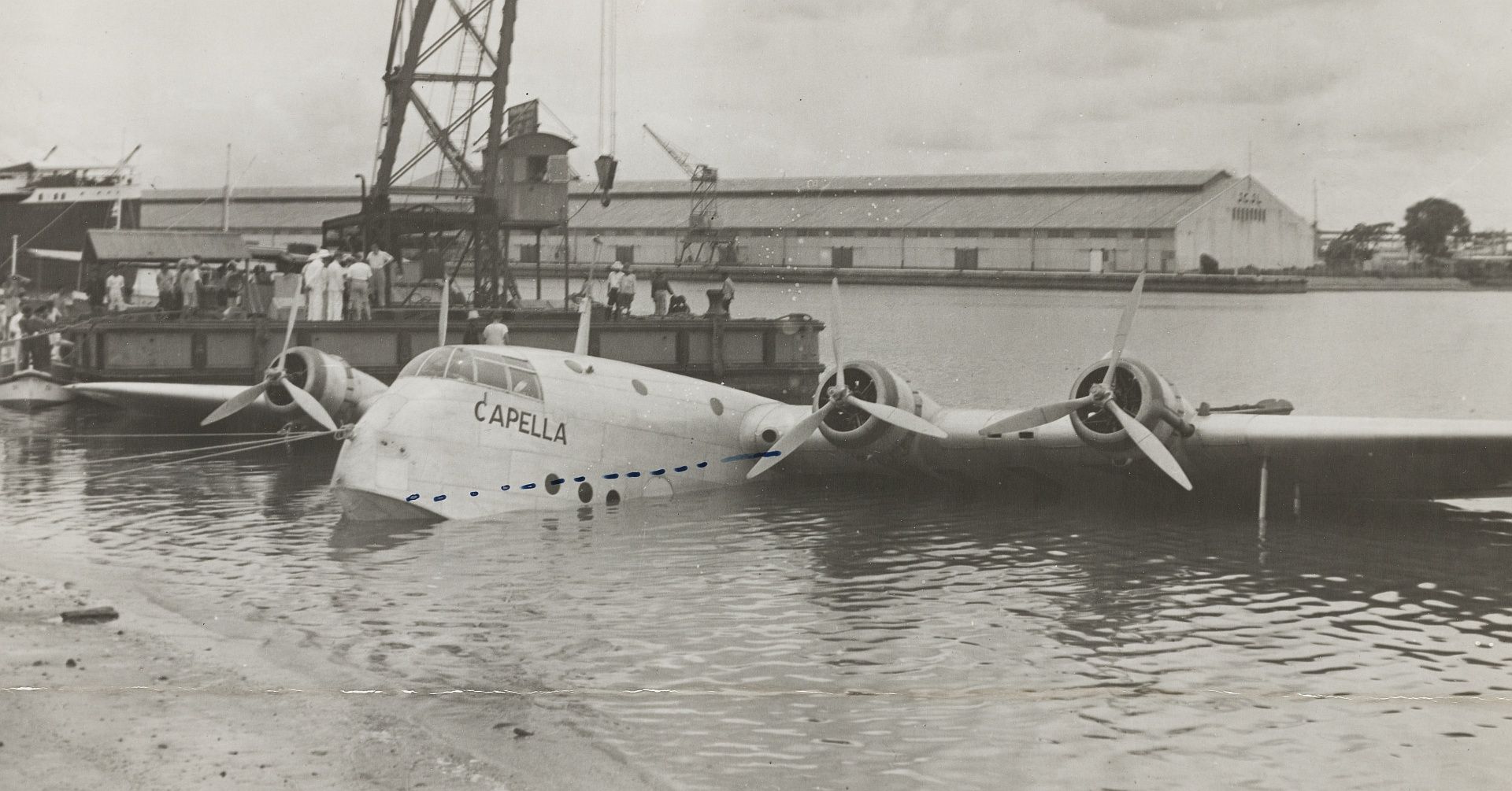
G-ADUZ Cygnus Imperial Airways
G-ADVA Capricornus Imperial Airways
G-ADVB Corsair Imperial Airways, later BOAC
G-ADVC Courtier Imperial Airways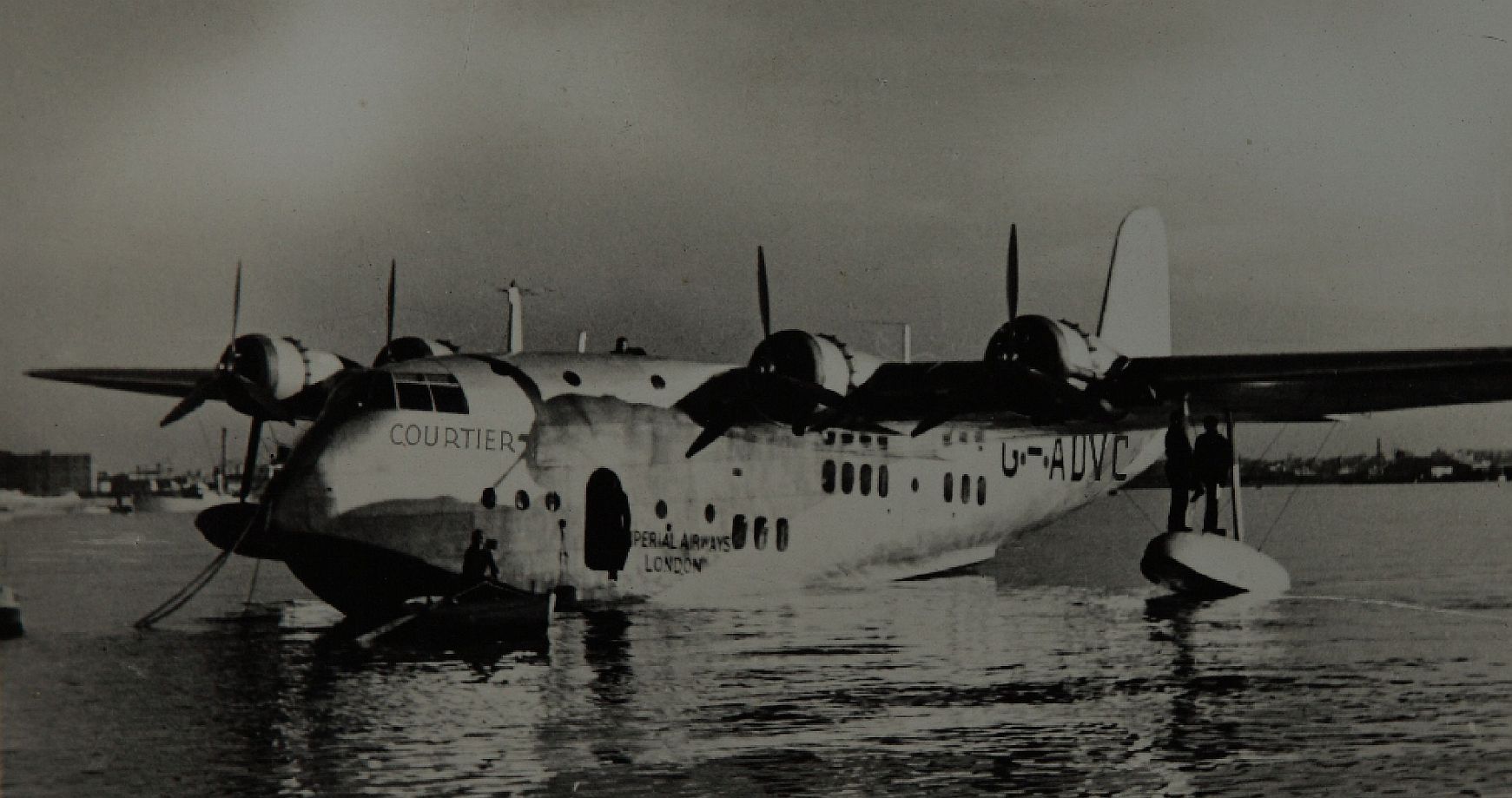
G-ADVD Challenger Imperial Airways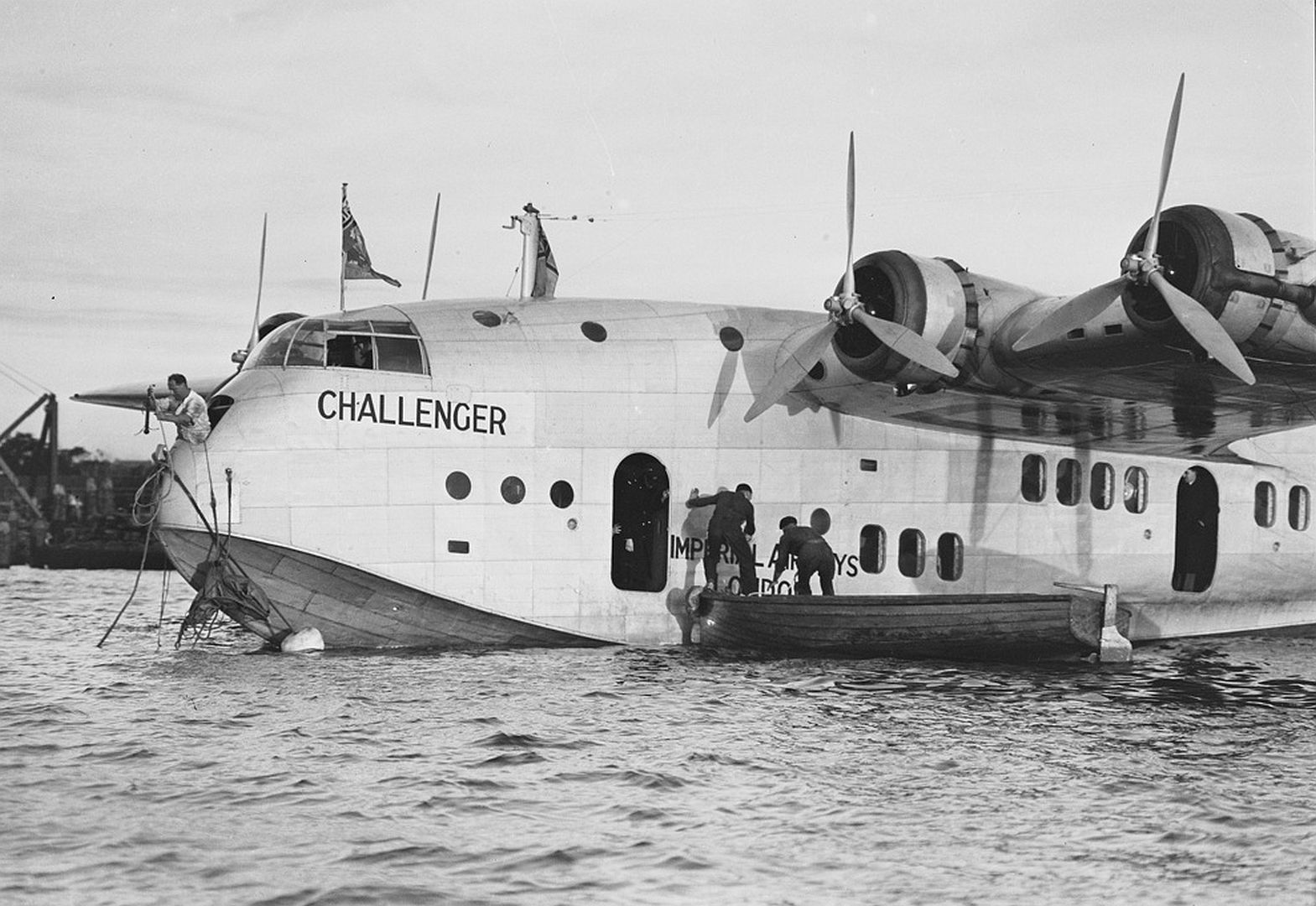
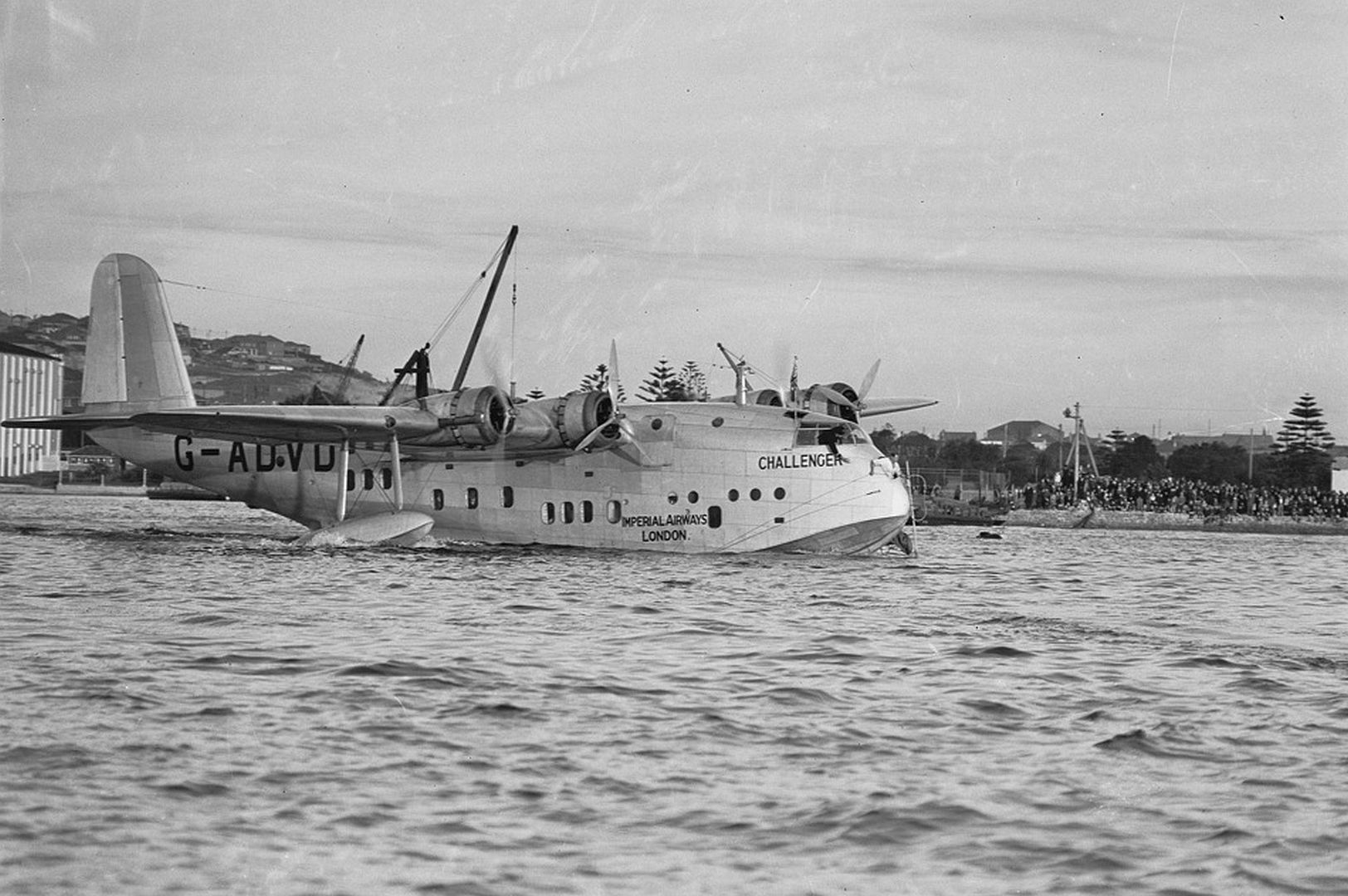
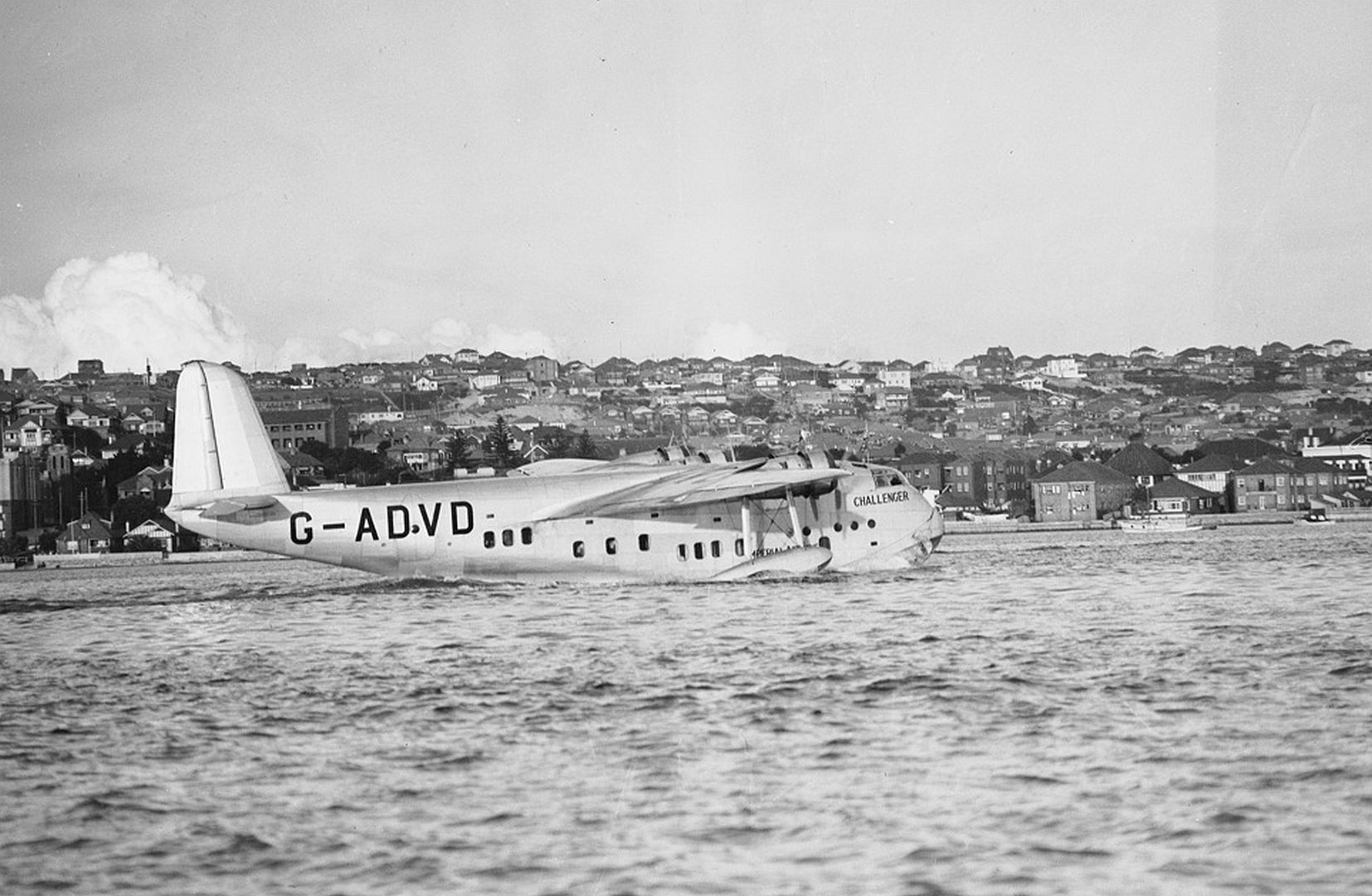
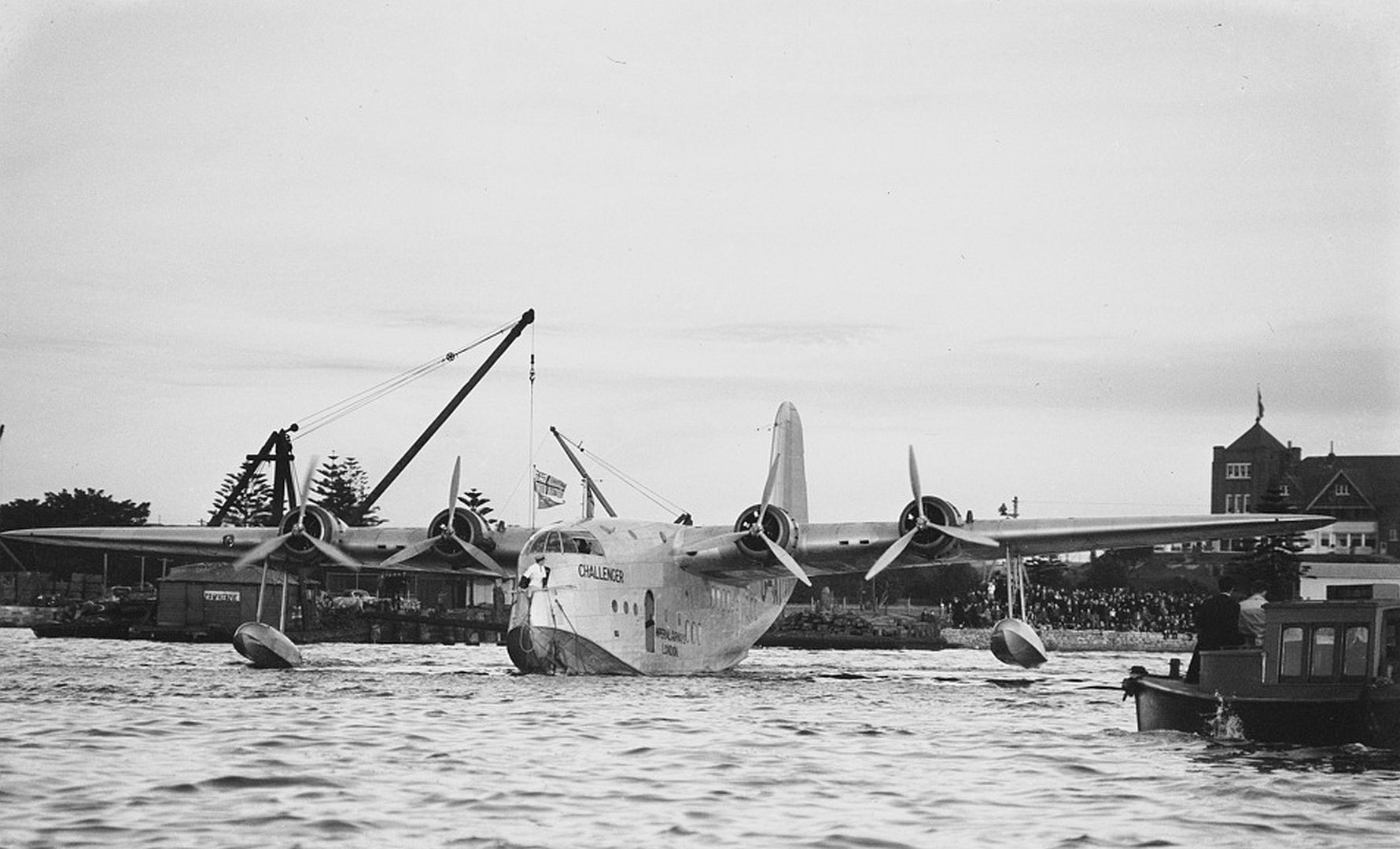
G-ADVE Centurion Imperial Airways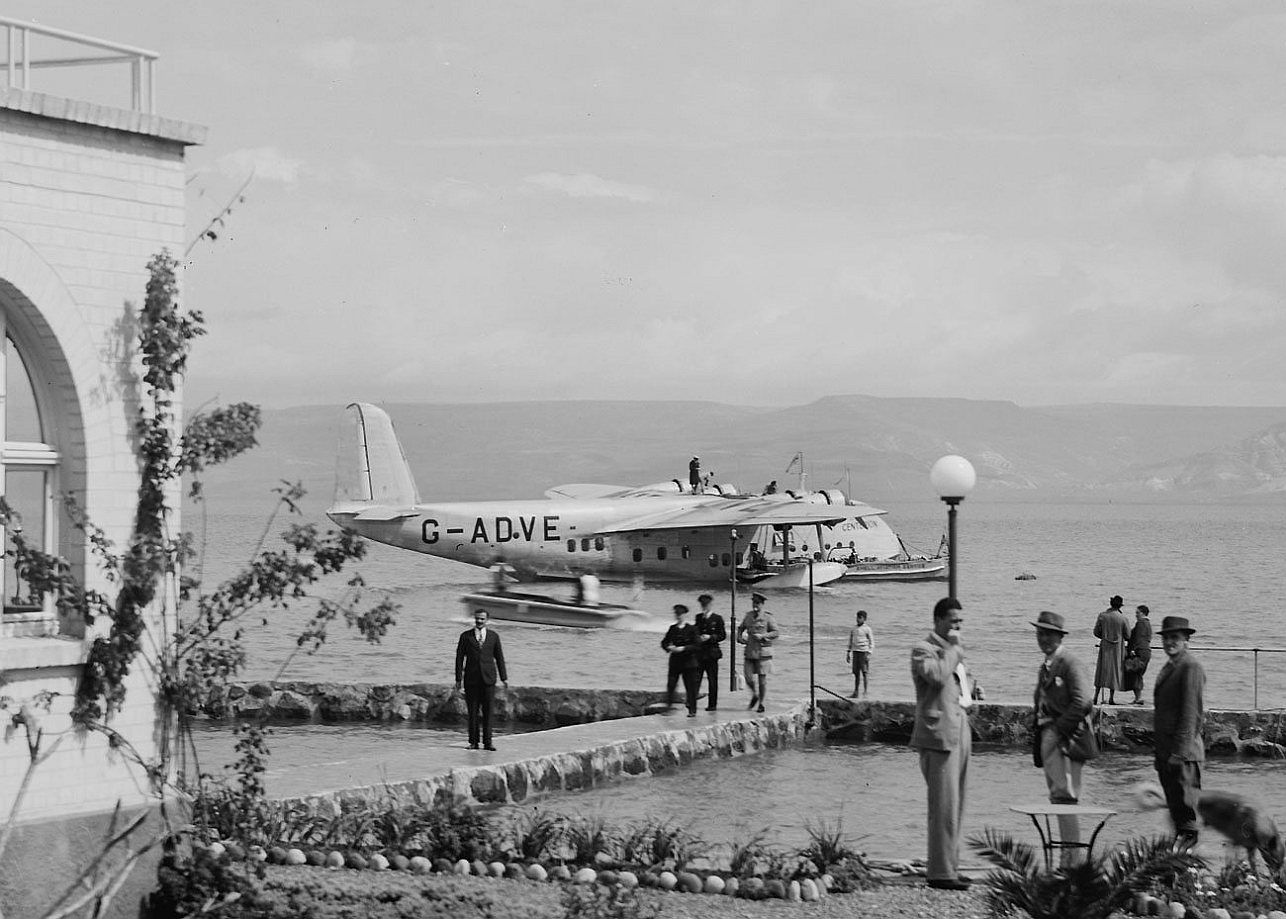
G-AETV Coriolanus Imperial Airways, later BOAC, to QANTAS in 1942 (as registration VH-ABG)
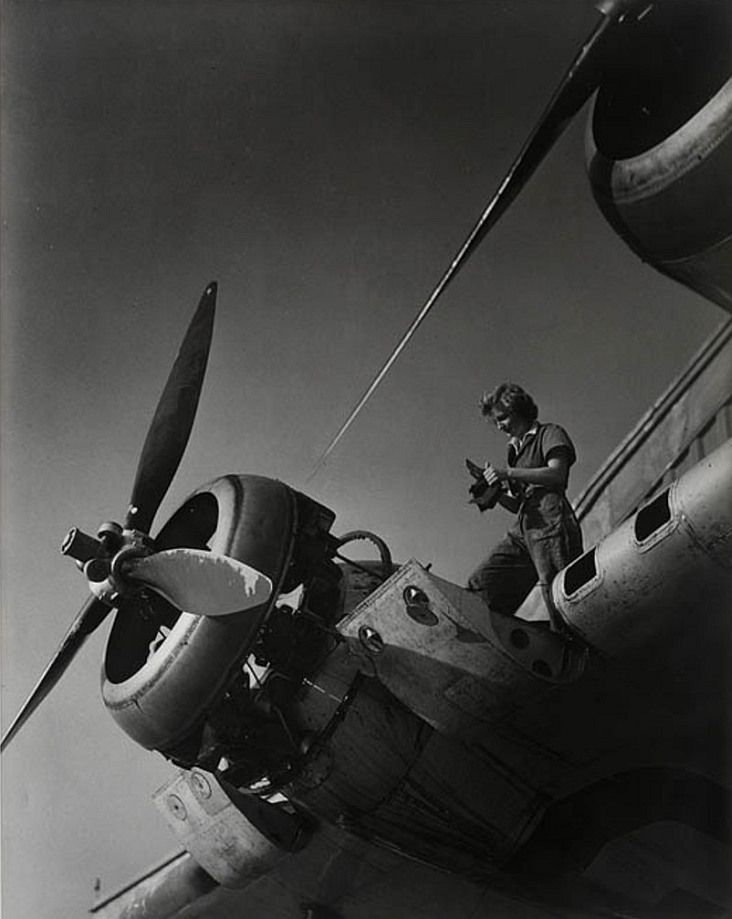
G-AETW Calpurnia Imperial Airways.
G-AETX Ceres Imperial Airways, later BOAC
G-AETY Clio Imperial Airways, later BOAC, to Royal Air Force (RAF) in 1940 (as AX659) Crashed 22 August 1941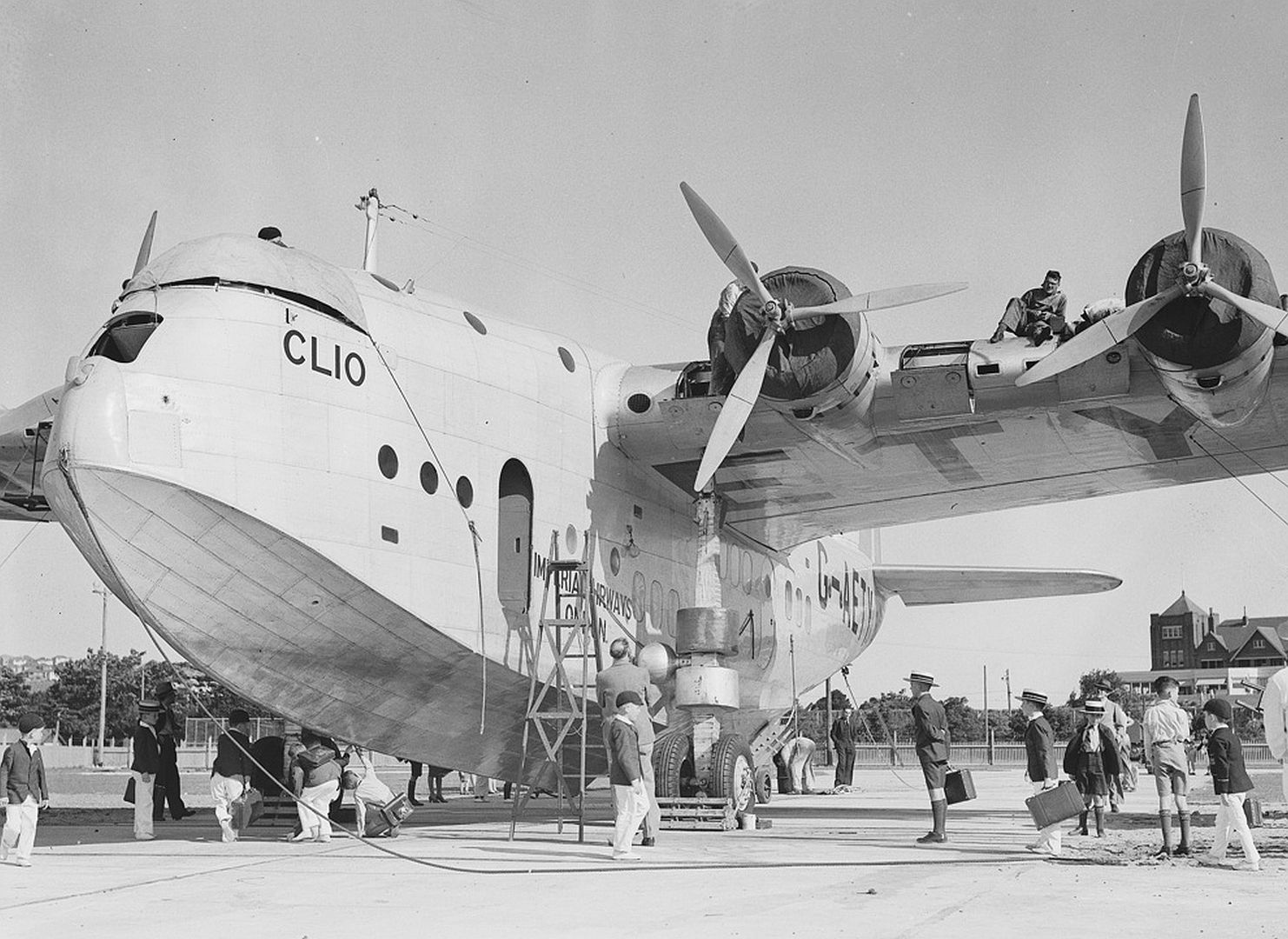
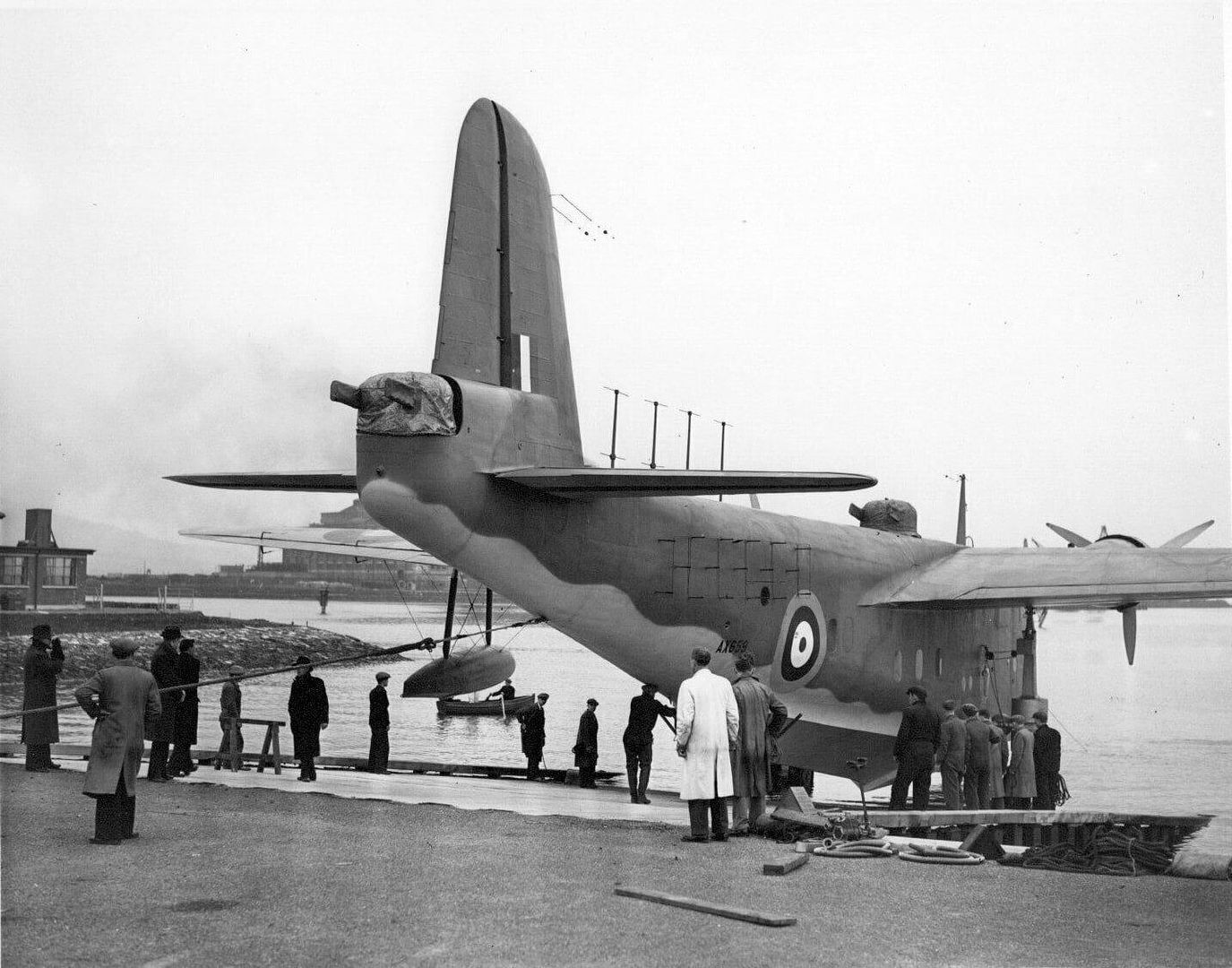
G-AETZ Circe Imperial Airways, later BOAC
G-AEUA Calypso Imperial Airways, to QANTAS in 1939 not used directly, to RAAF (as serial A18-11)
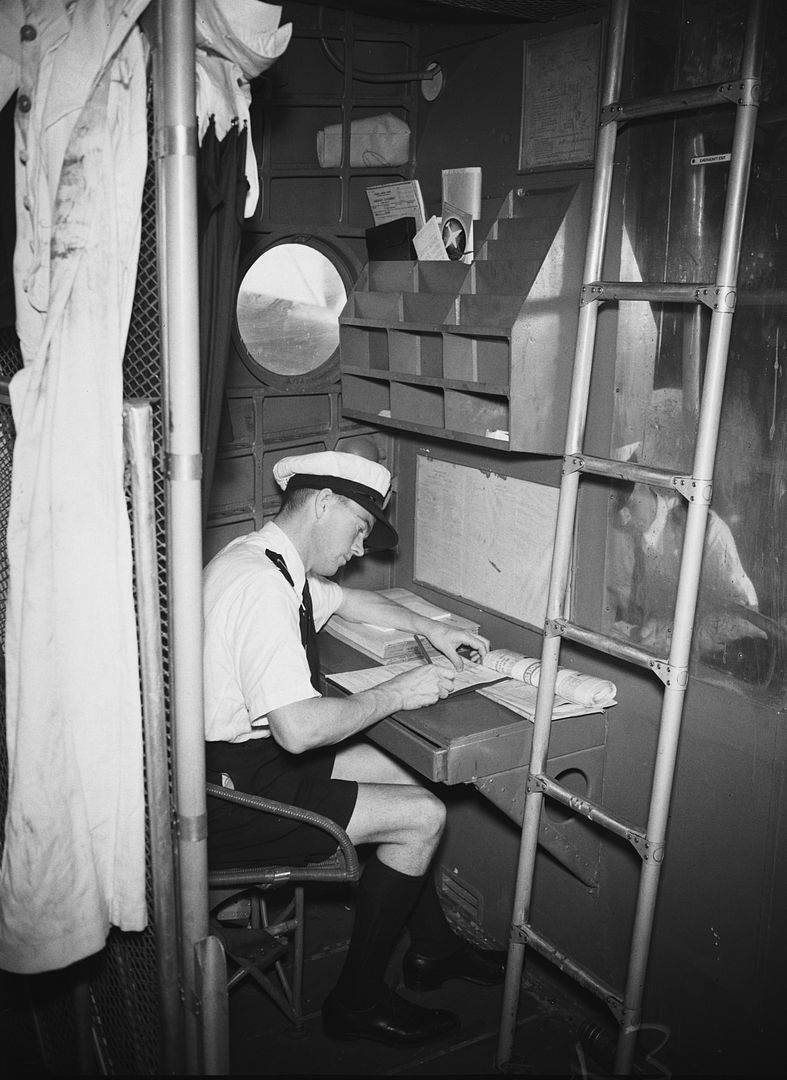
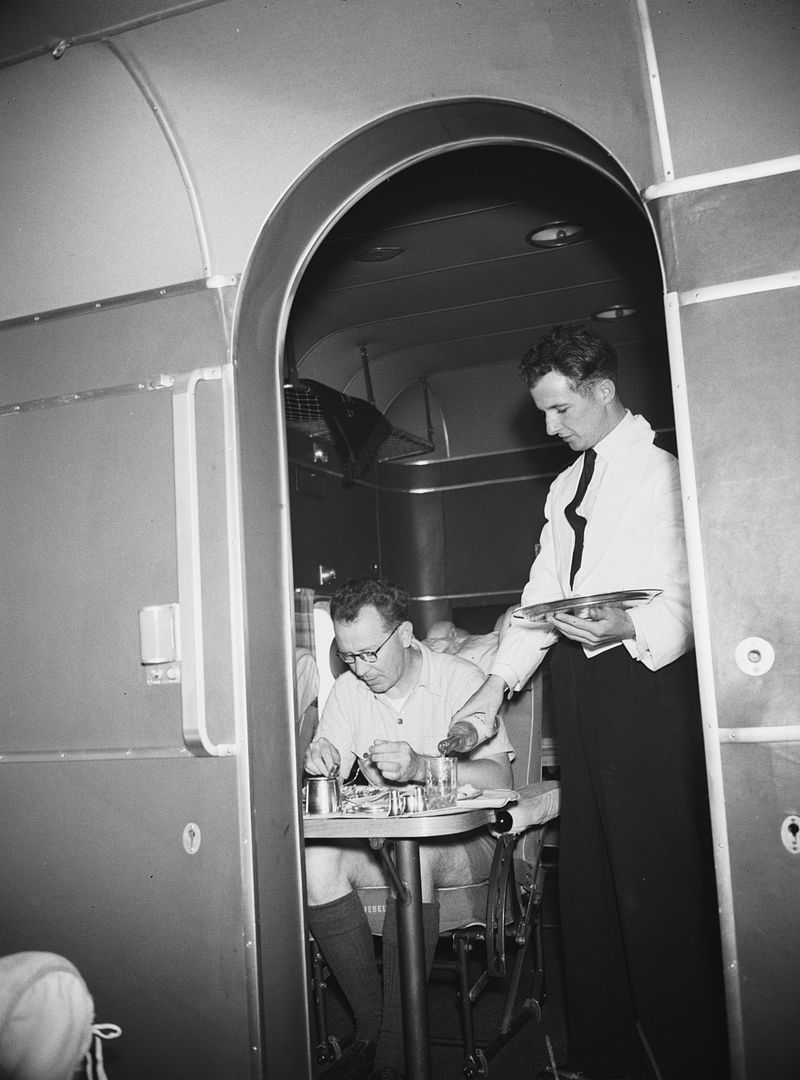
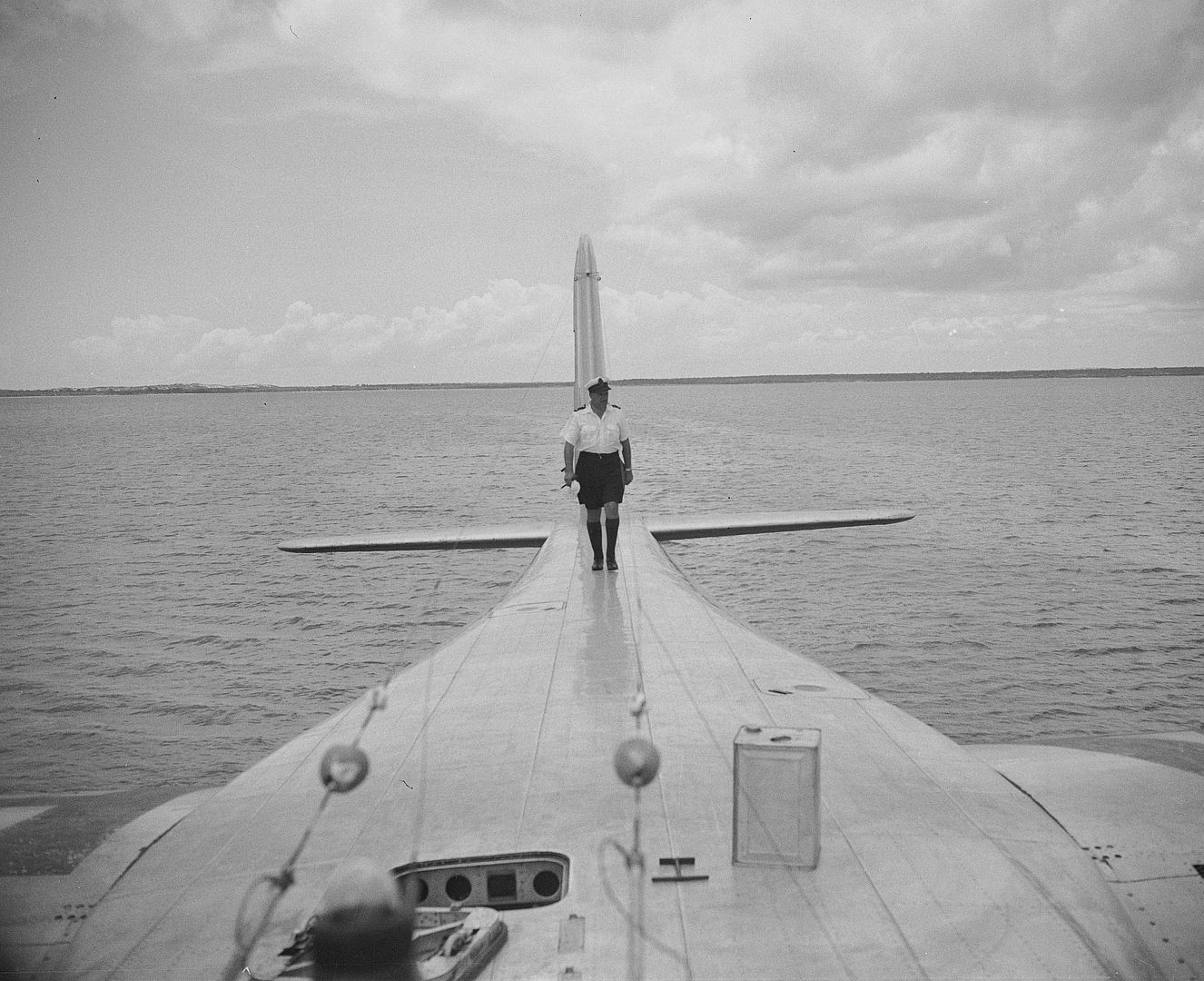

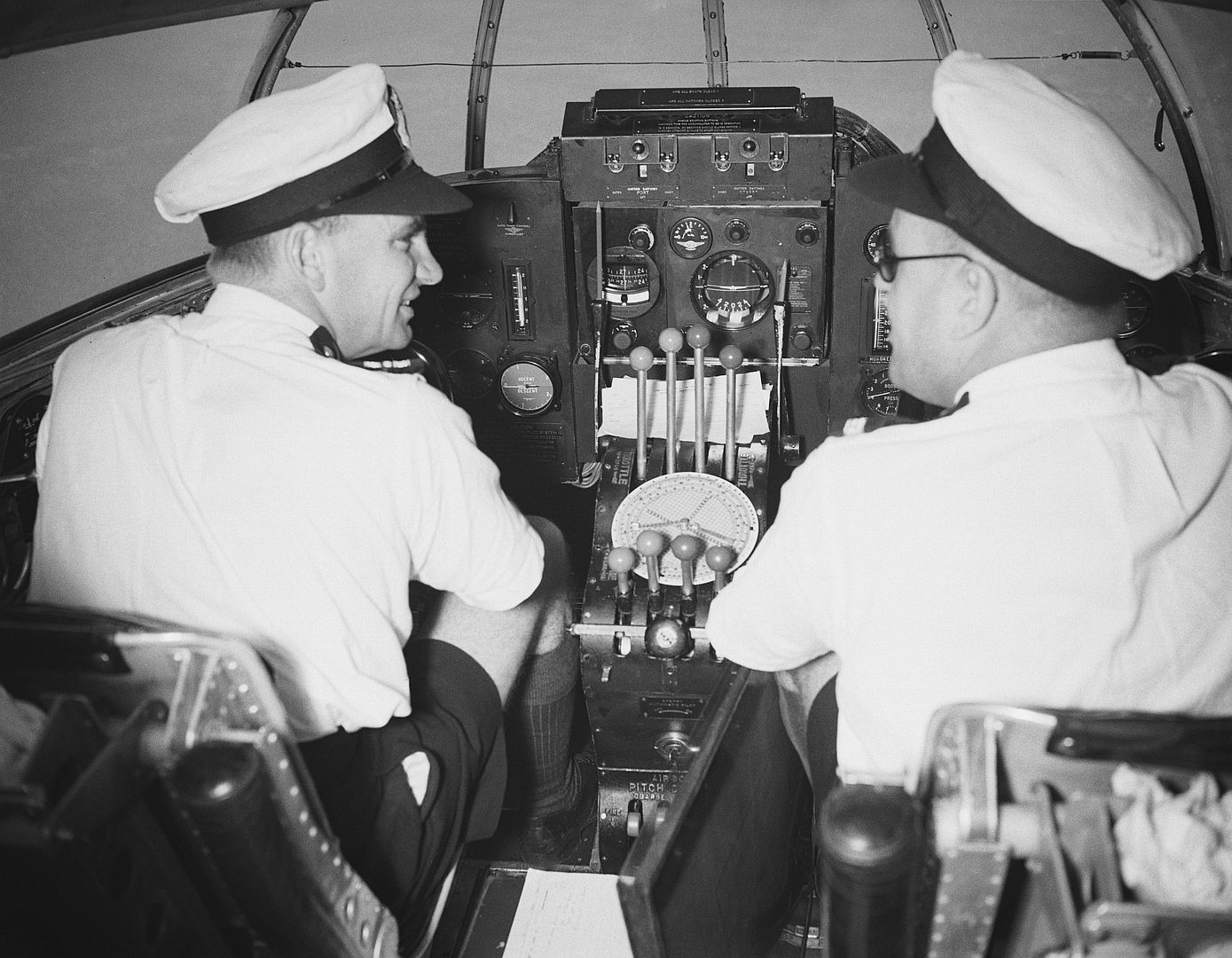

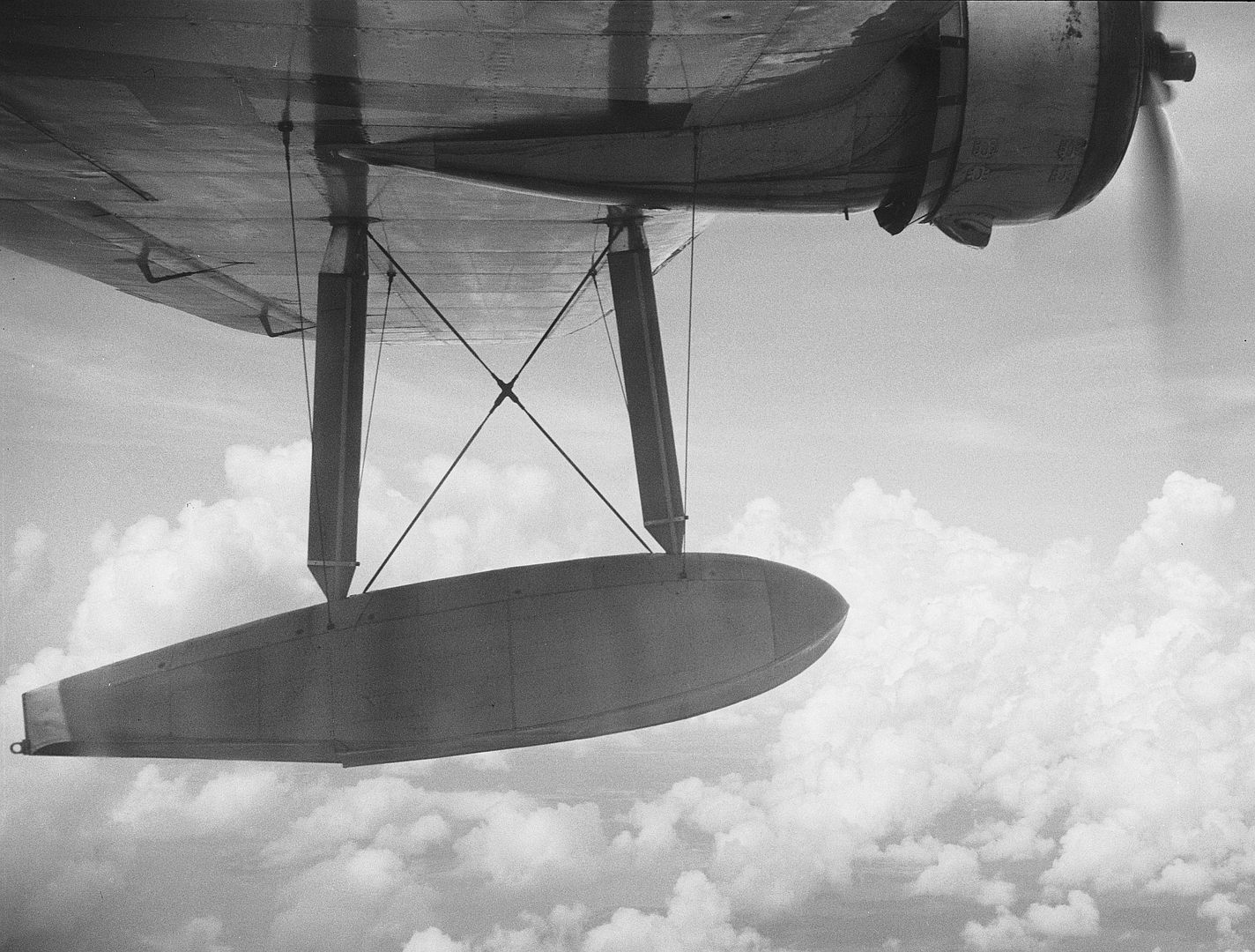
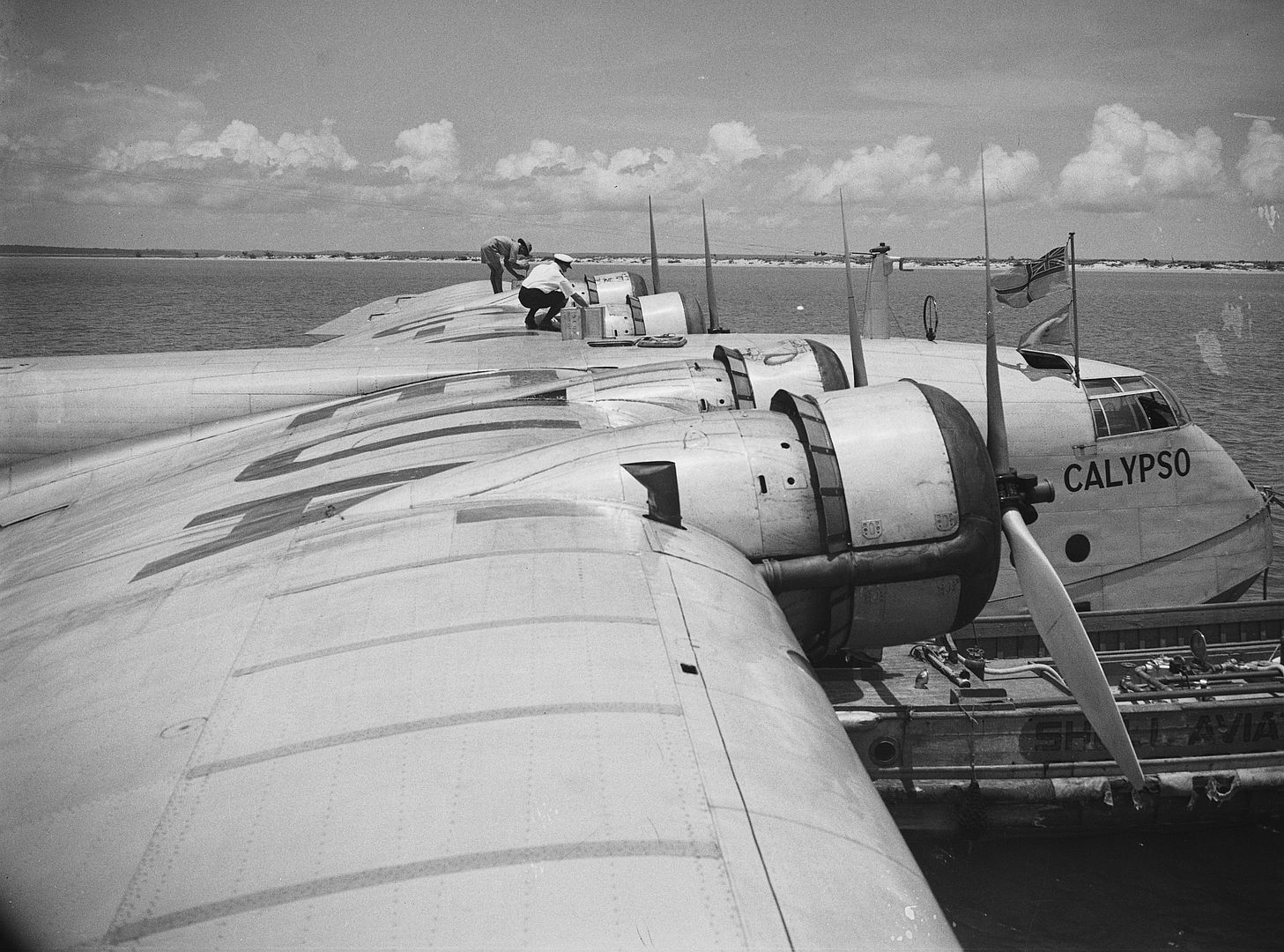
G-AEUB Camilla Imperial Airways, later BOAC, to QANTAS (as VH-ADU)
G-AEUC Corinna Imperial Airways, later BOAC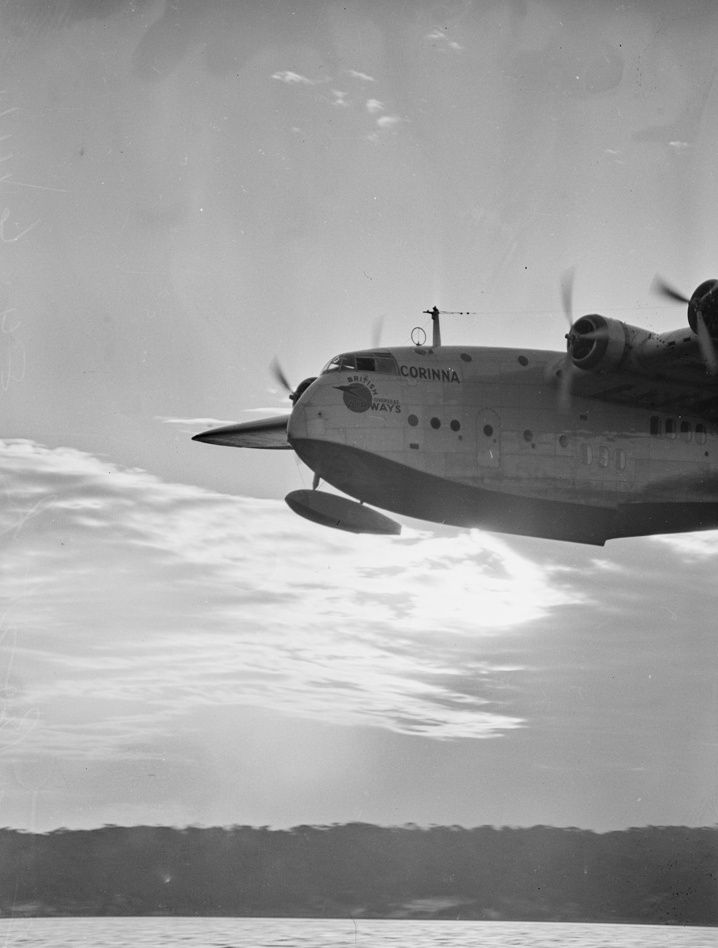
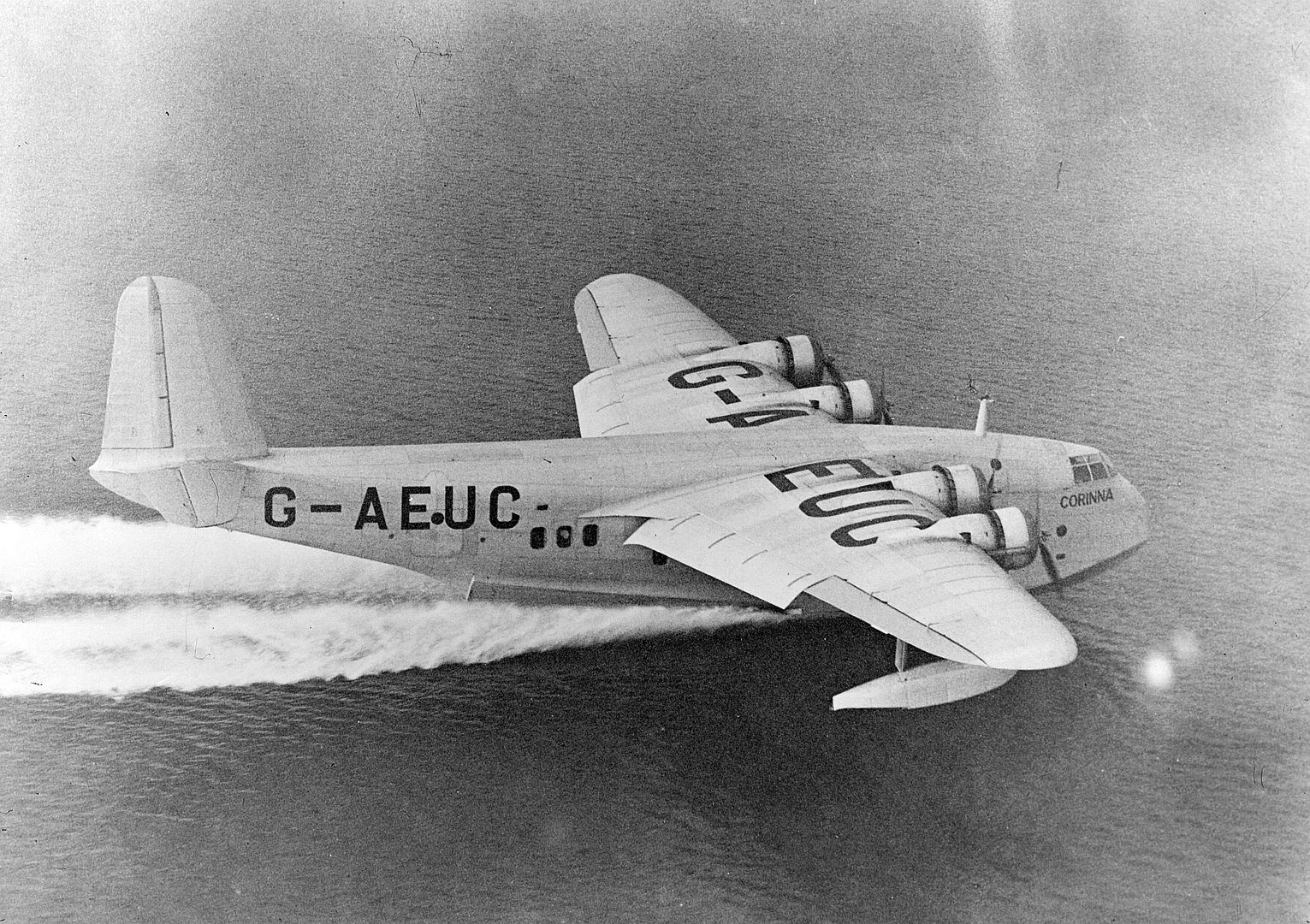
G-AEUD Cordelia Imperial Airways, later BOAC, to RAF in 1940 (as AX660), returned to BOAC in 1941 (as G-AEUD)
G-AEUE Cameronian Imperial Airways, later BOAC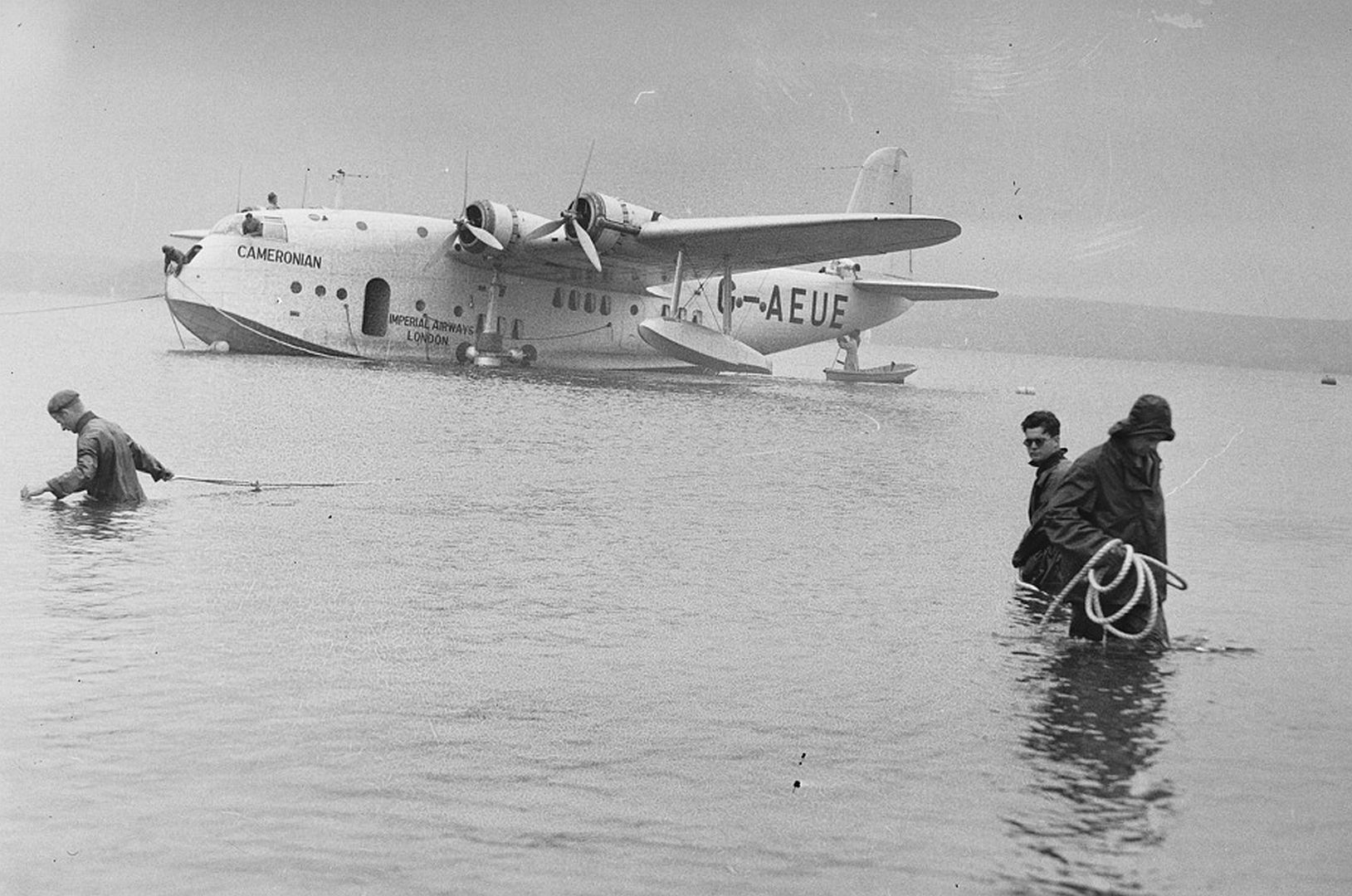

G-AEUF Corinthian Imperial Airways, later BOAC
G-AEUG Coogee Imperial Airways, to QANTAS in 1938 (as VH-ABC), to RAAF in 1939 (as A18-12)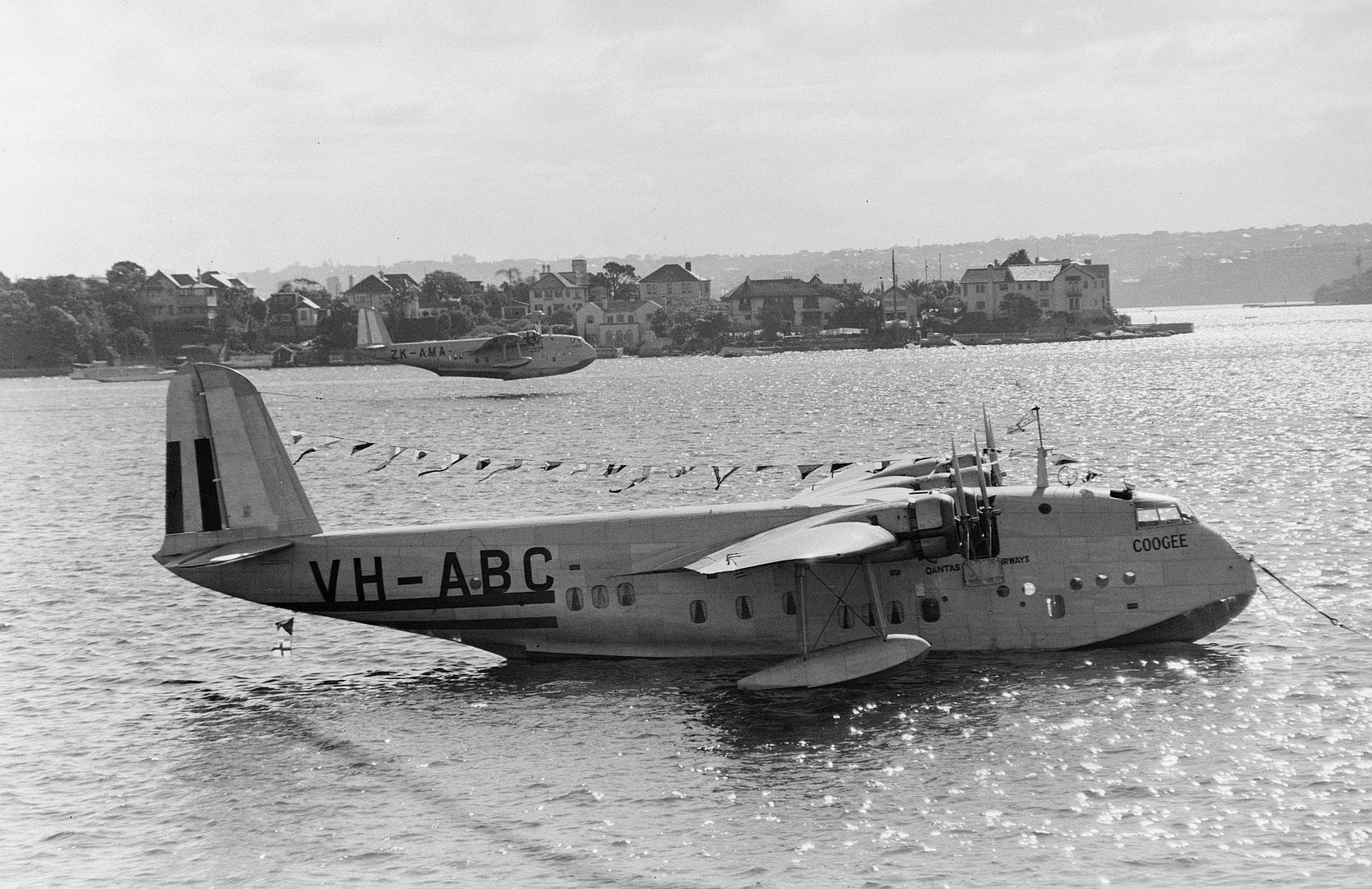
G-AEUH Corio Imperial Airways, to QANTAS in 1938 (as VH-ABD), to Imperial Airways in 1939 (as G-AEUH)
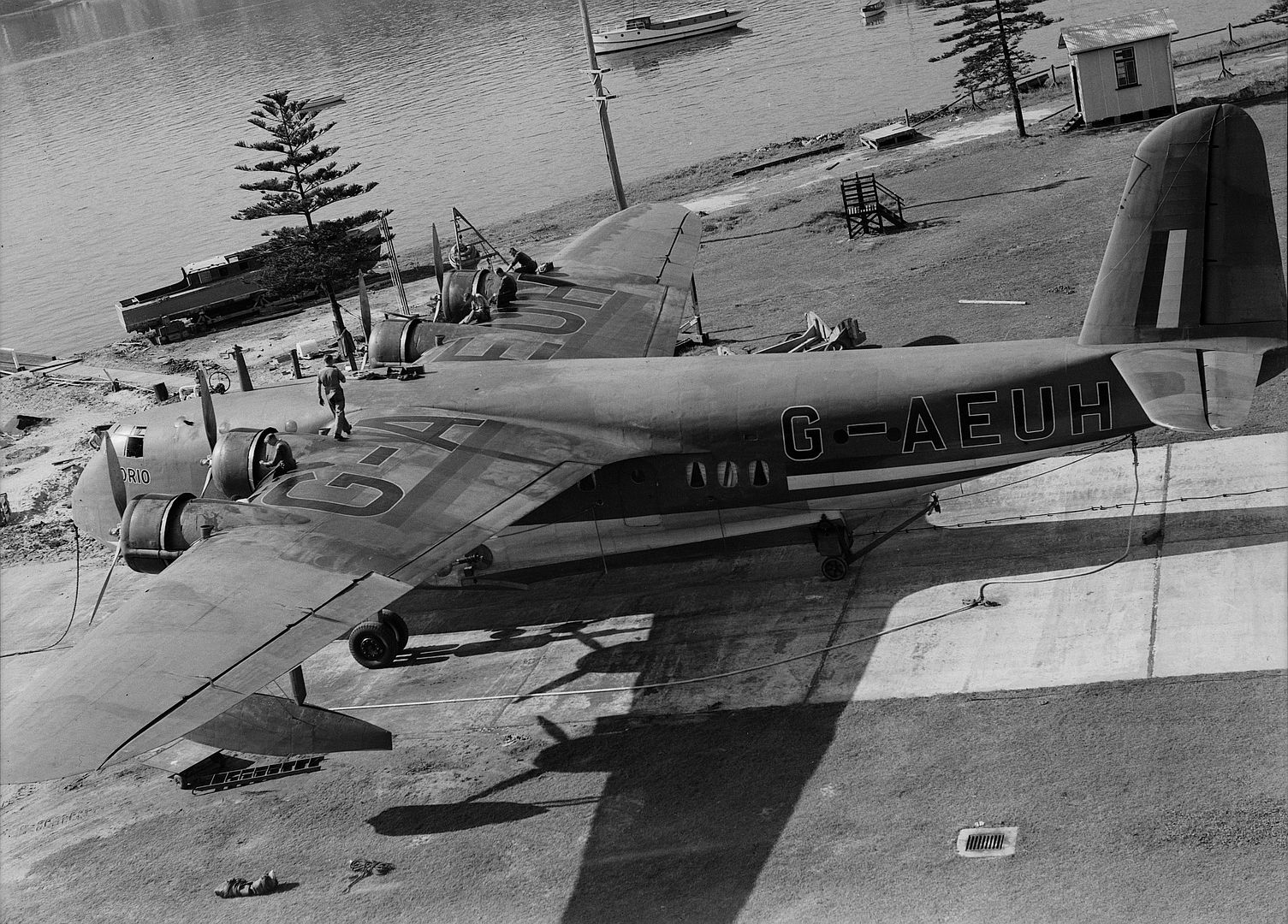


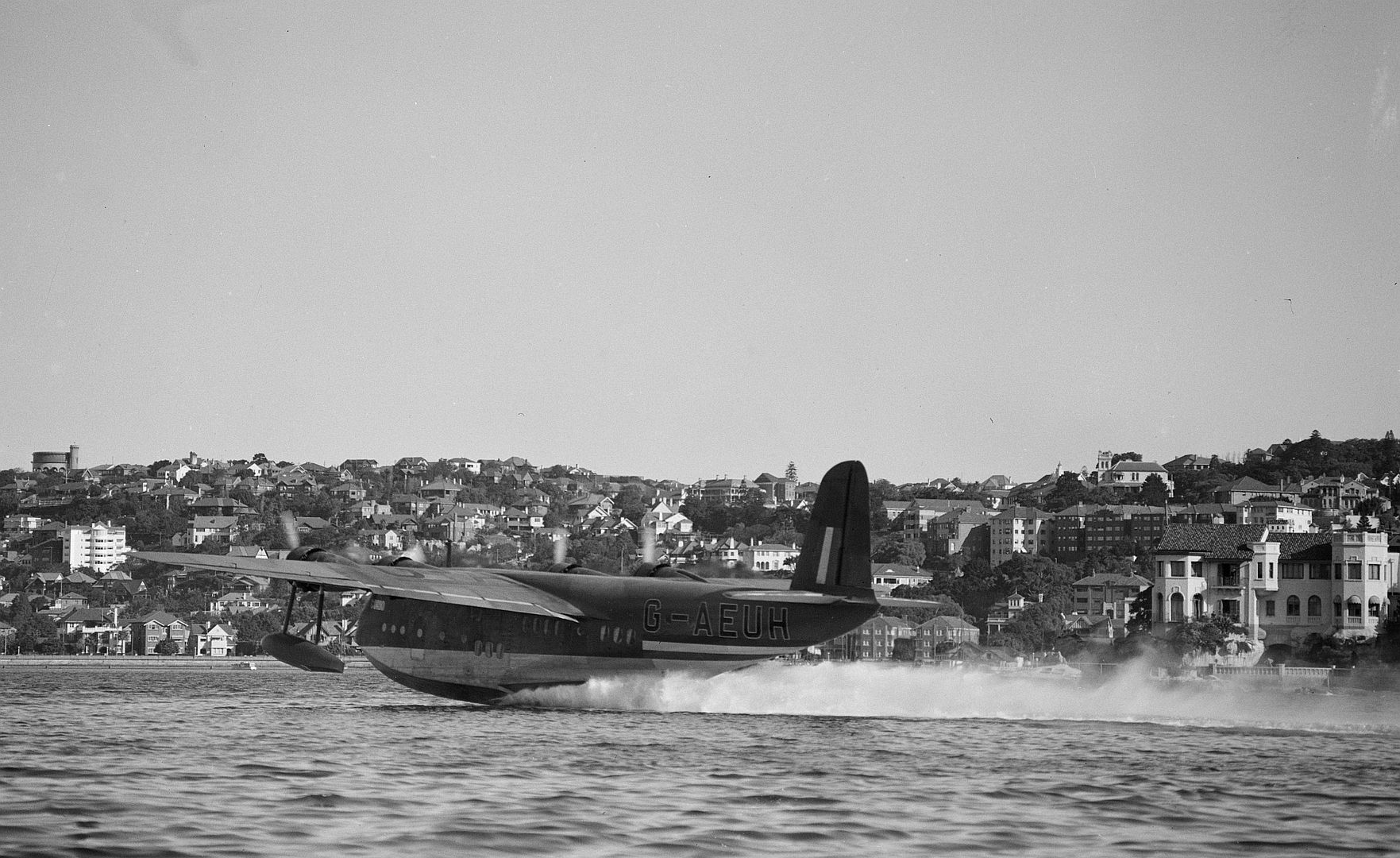
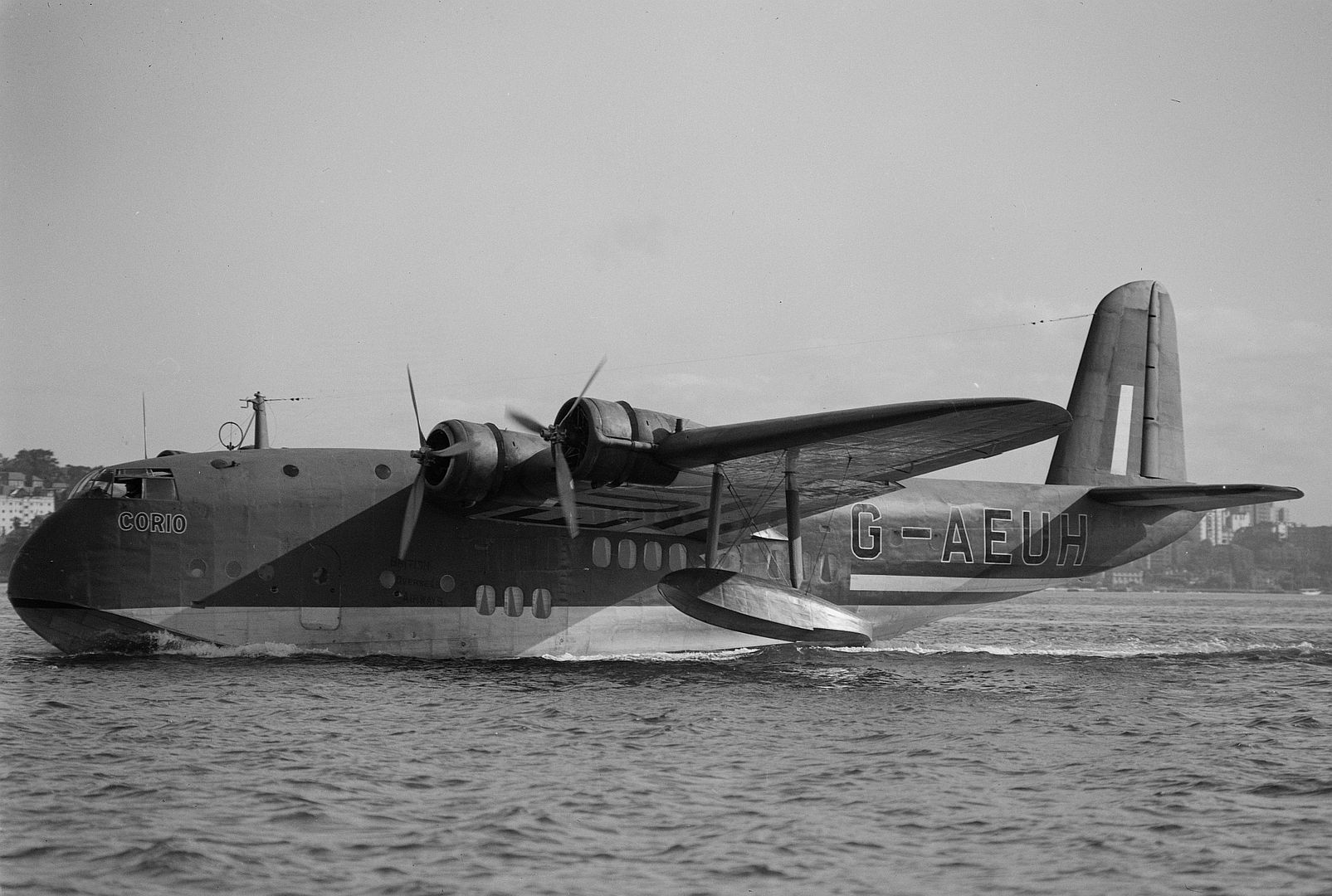
G-AEUI Coorong Imperial Airways, to QANTAS in 1938 (as VH-ABE), to Imperial Airways in 1939 (as G-AEUI)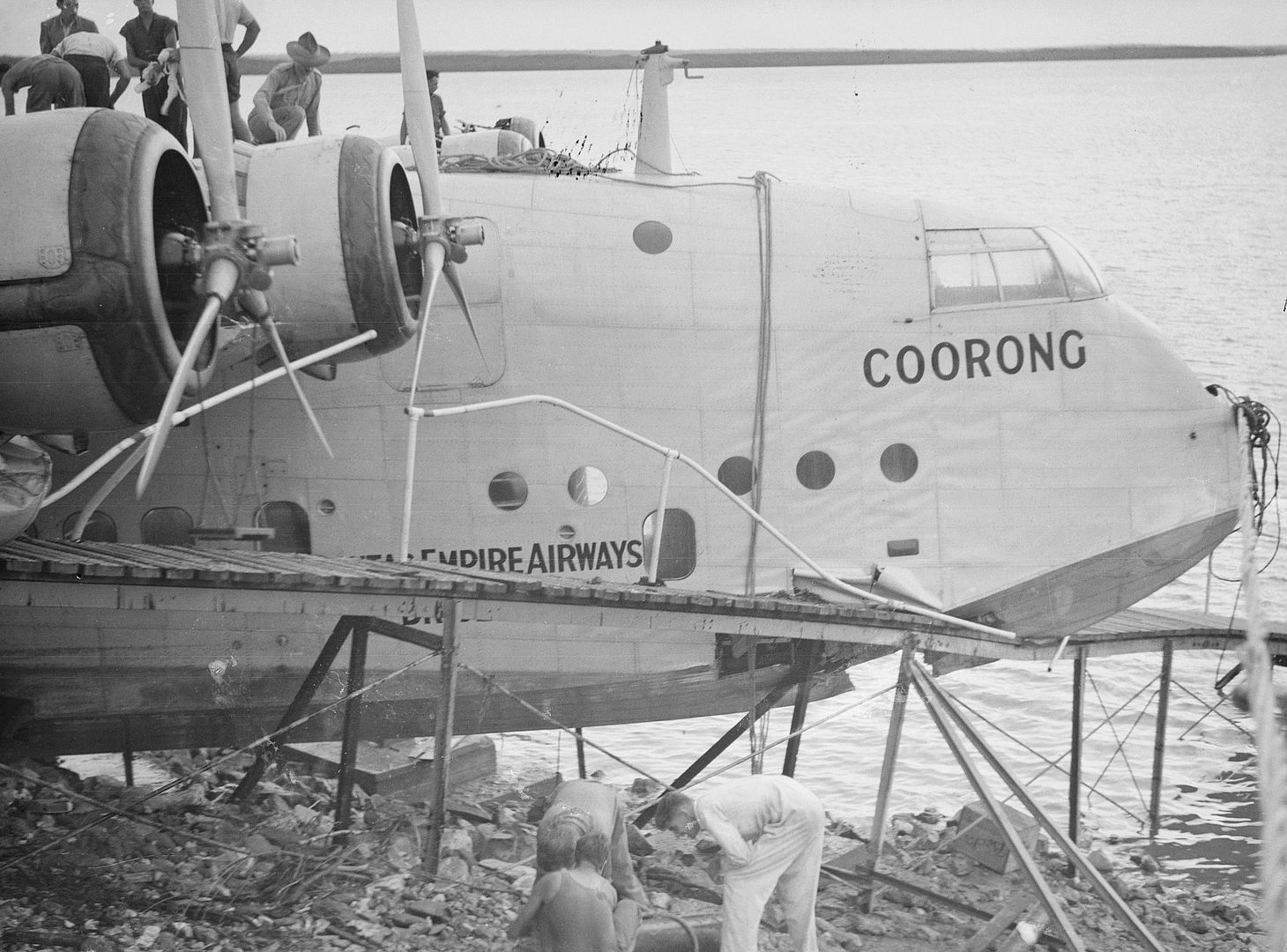
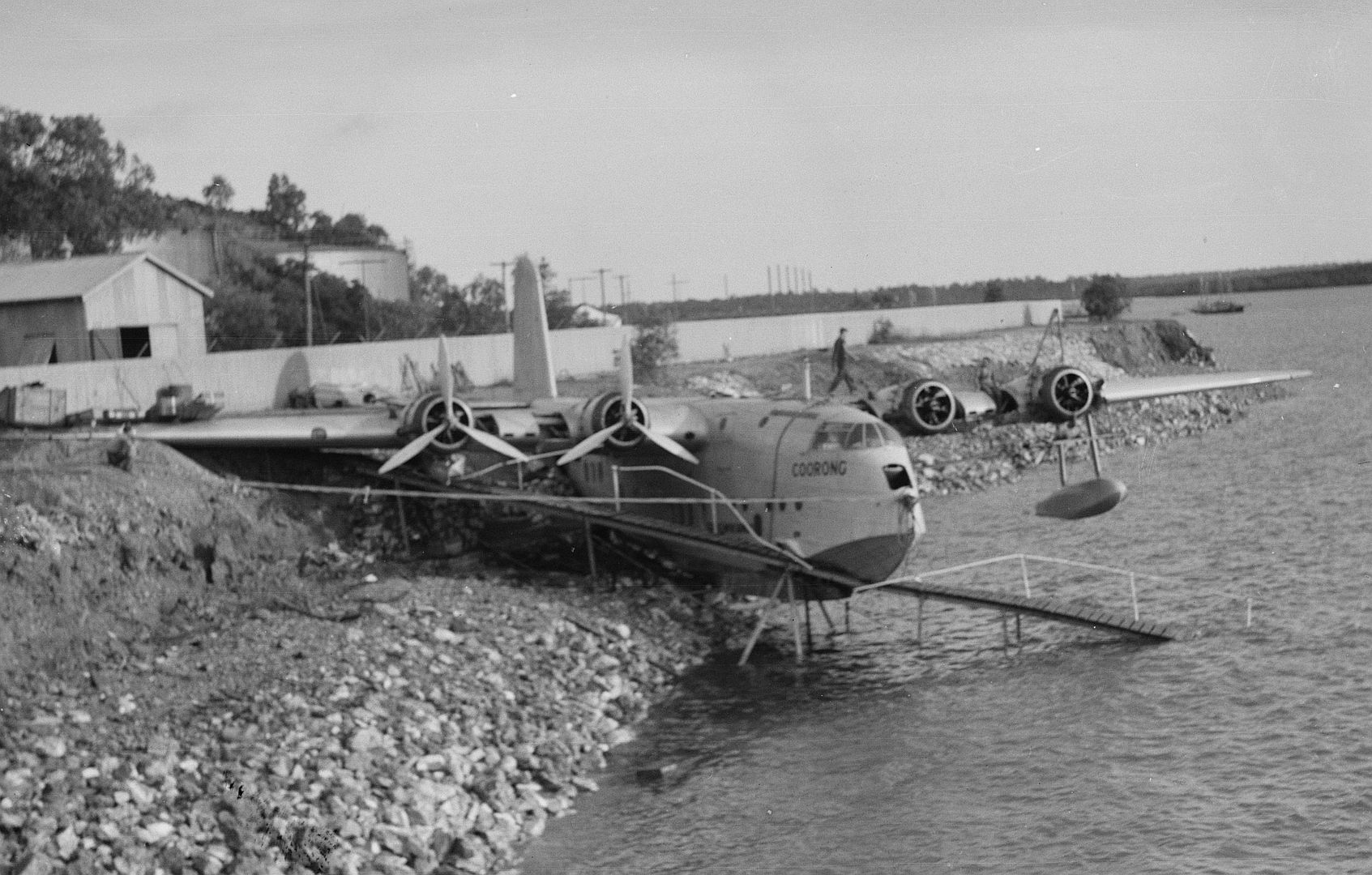
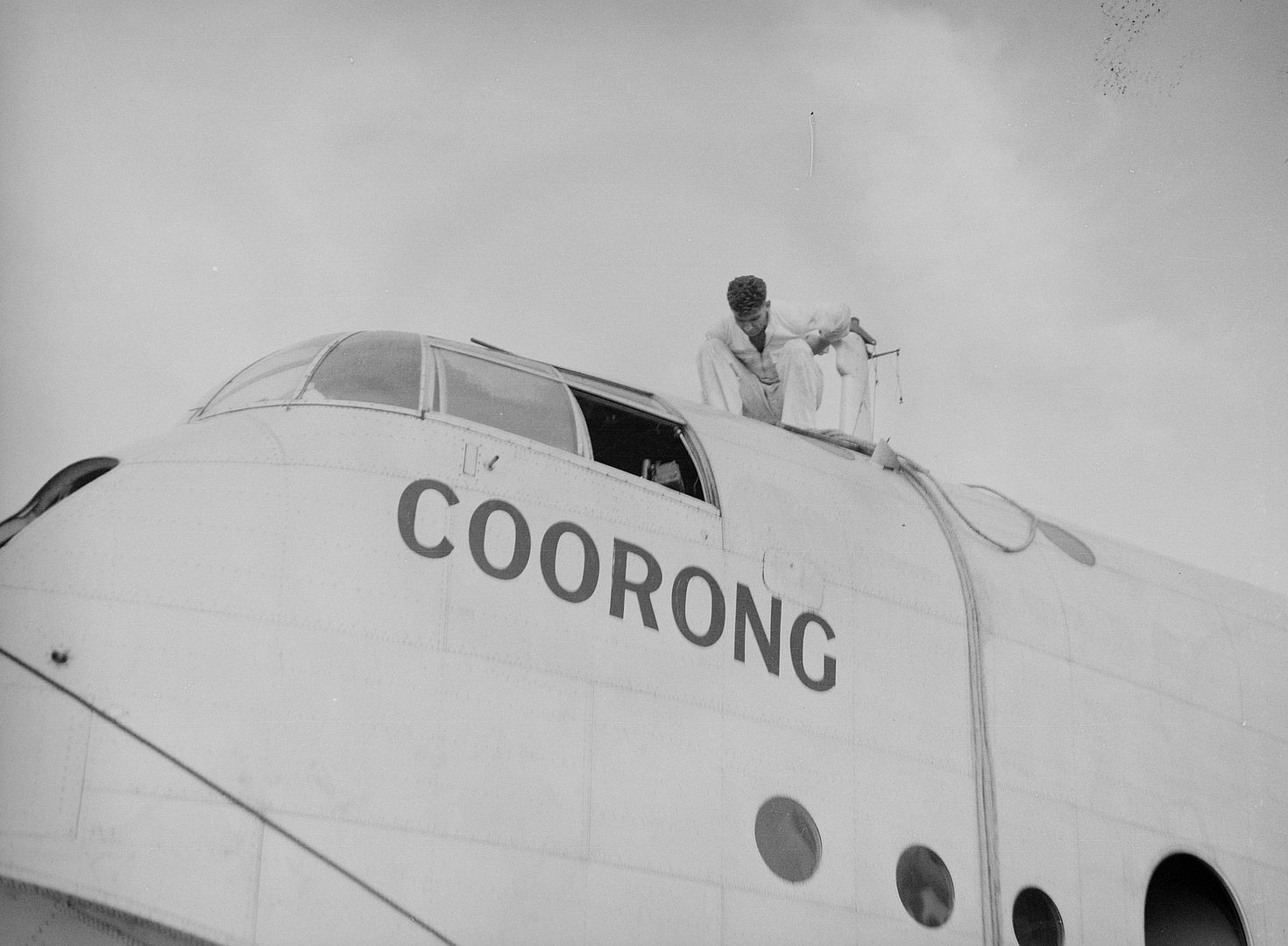
G-AFBJ Carpentaria Imperial Airways not used, to QANTAS in 1937 (as VH-ABA), to BOAC in 1942 (as G-AFBJ)
G-AFBK Coolangatta Imperial Airways not used, to QANTAS in 1937 (as VH-ABB), to RAAF in 1939 (as A18-13)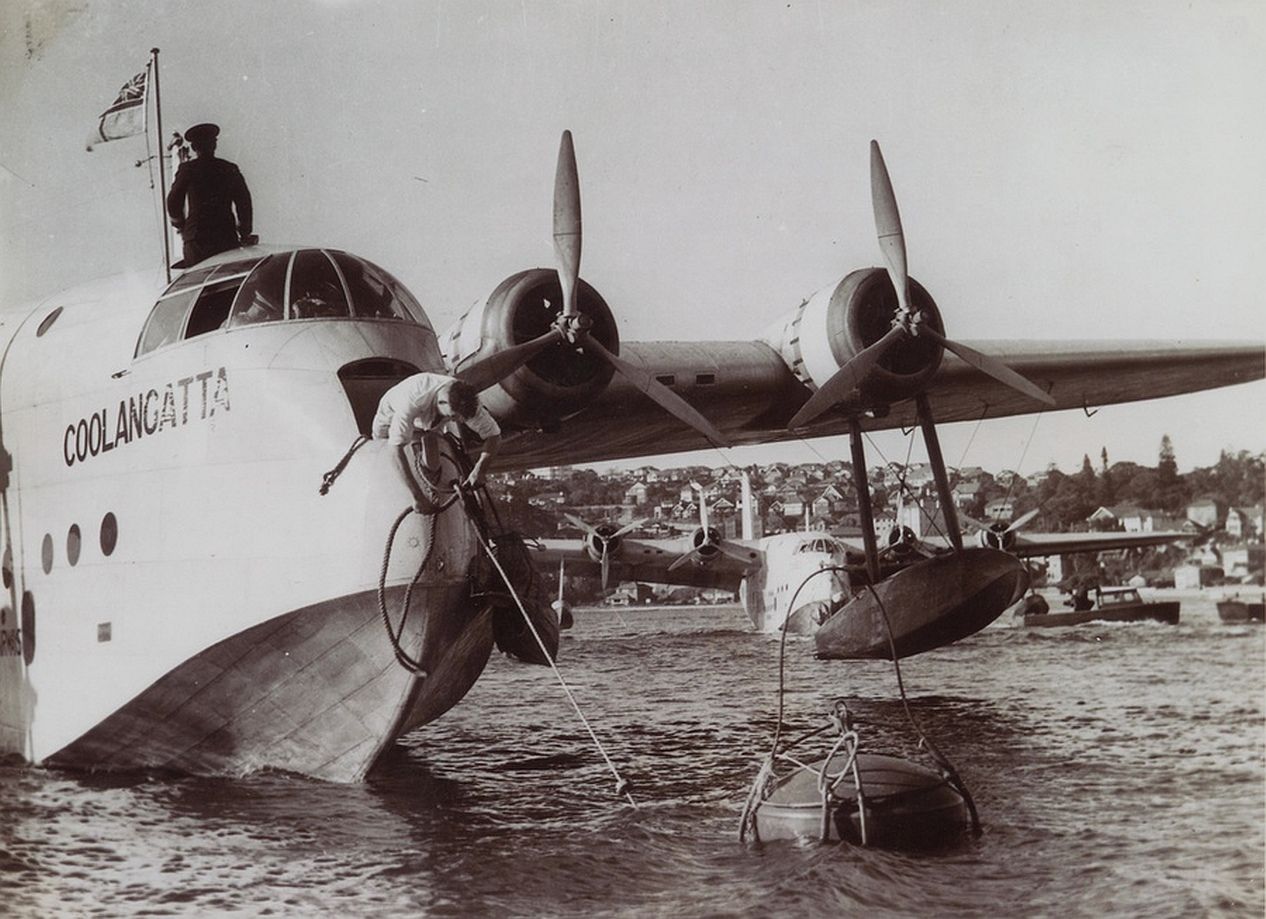
G-AFBL Cooee Imperial Airways not used, to QANTAS in 1937 (as VH-ABF) to BOAC in 1942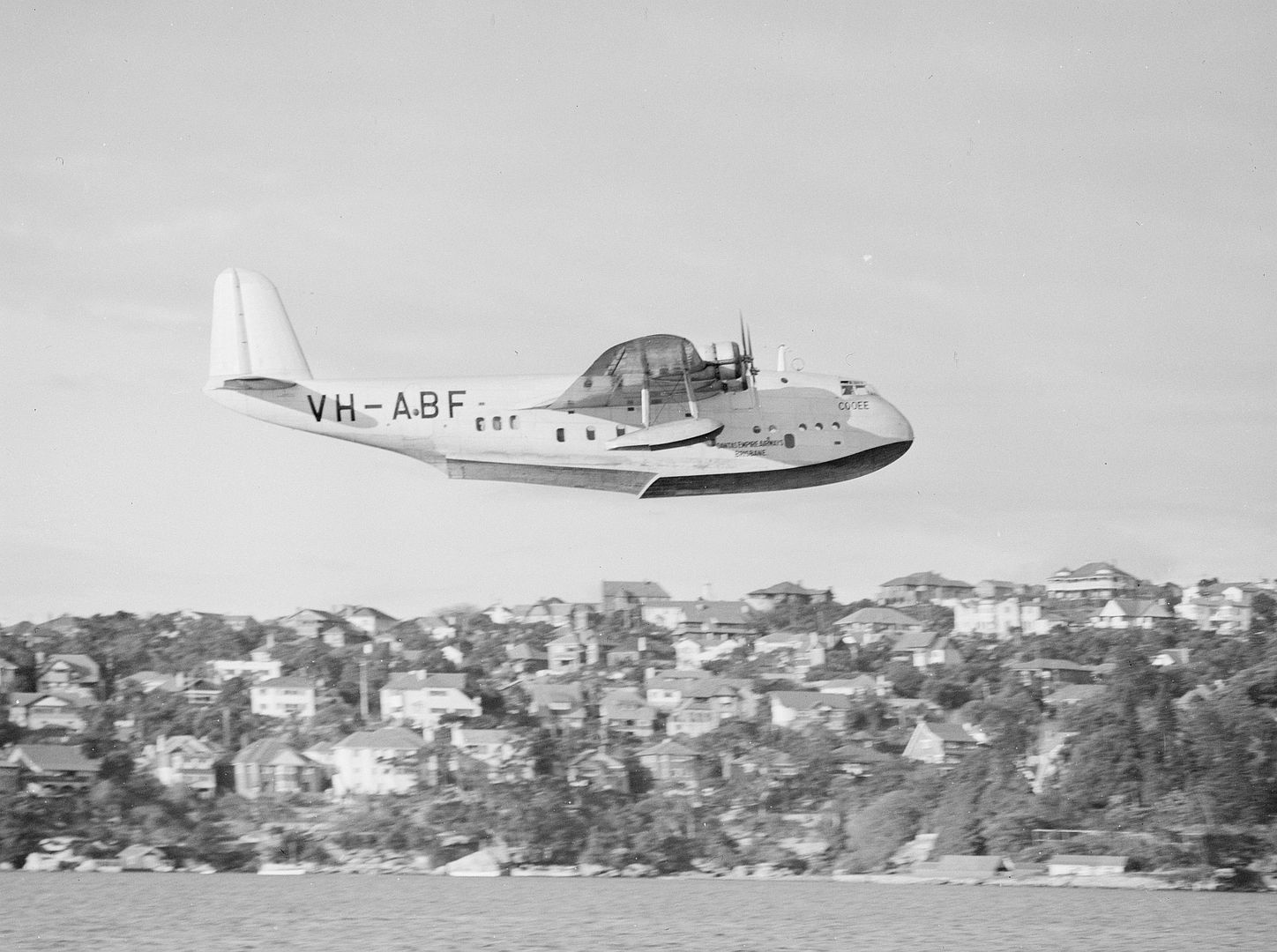

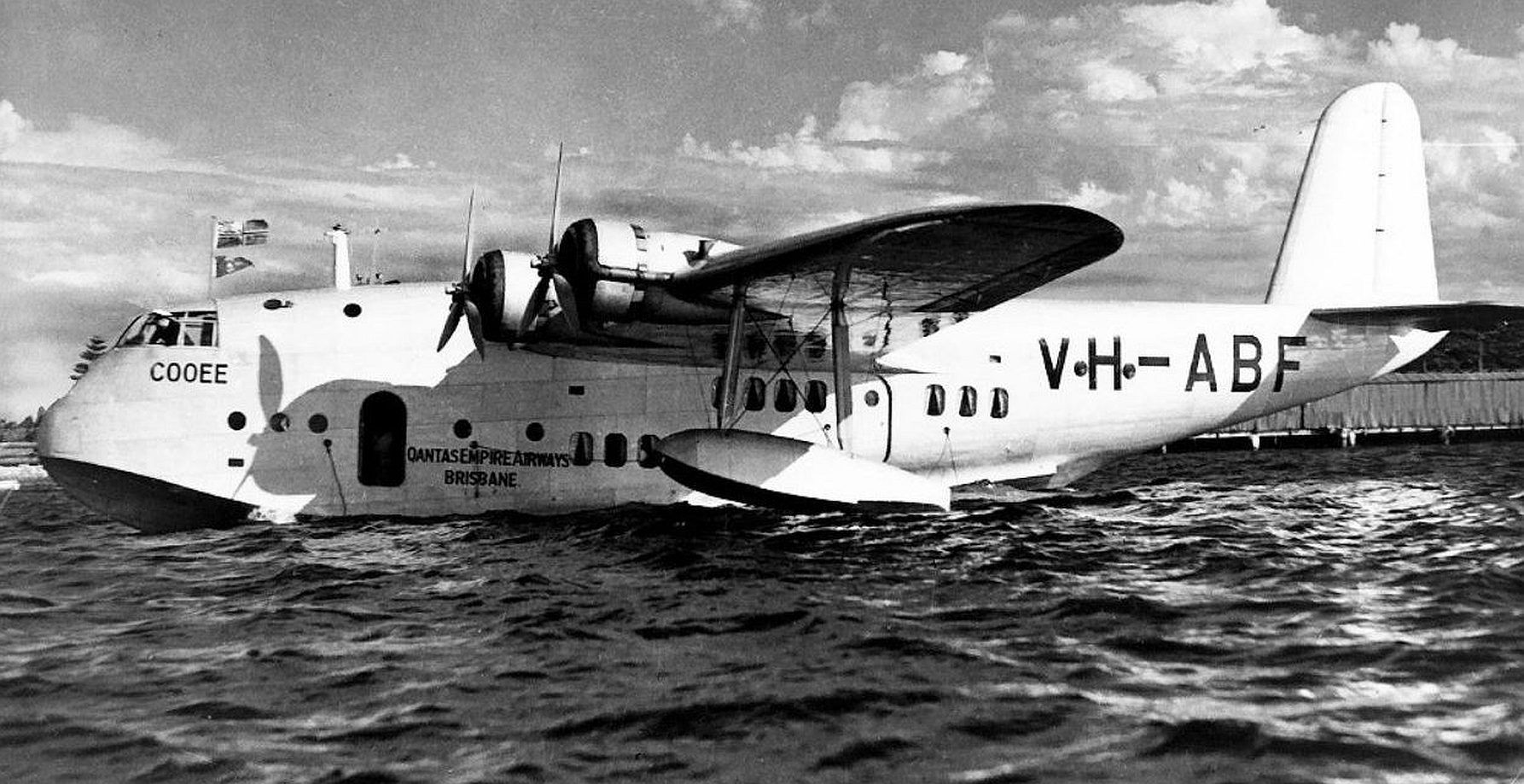
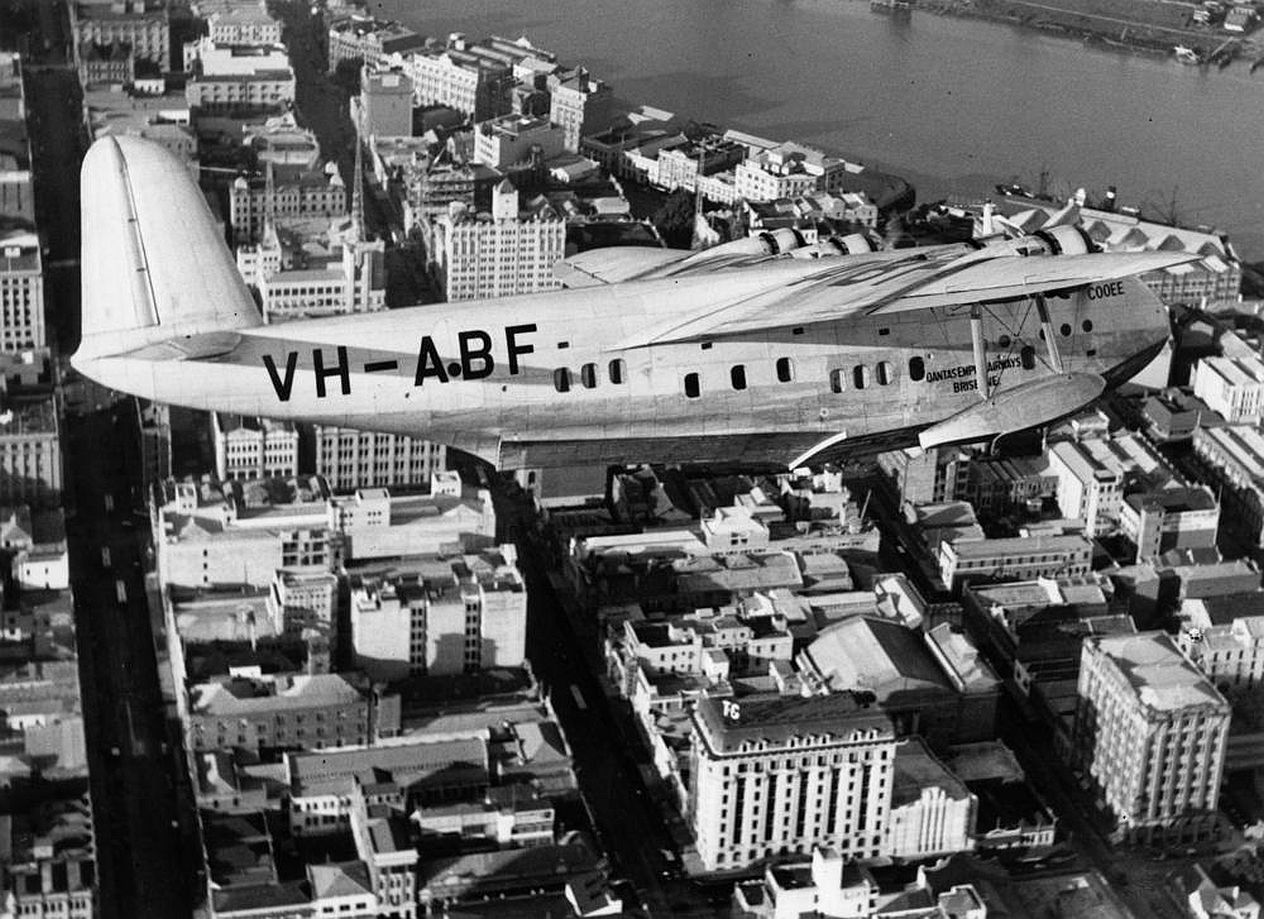
S.30
G-AFCT Champion Imperial Airways, later BOAC
G-AFCU Cabot Imperial Airways, to RAF in 1939 (as V3137). Destroyed 5 May 1940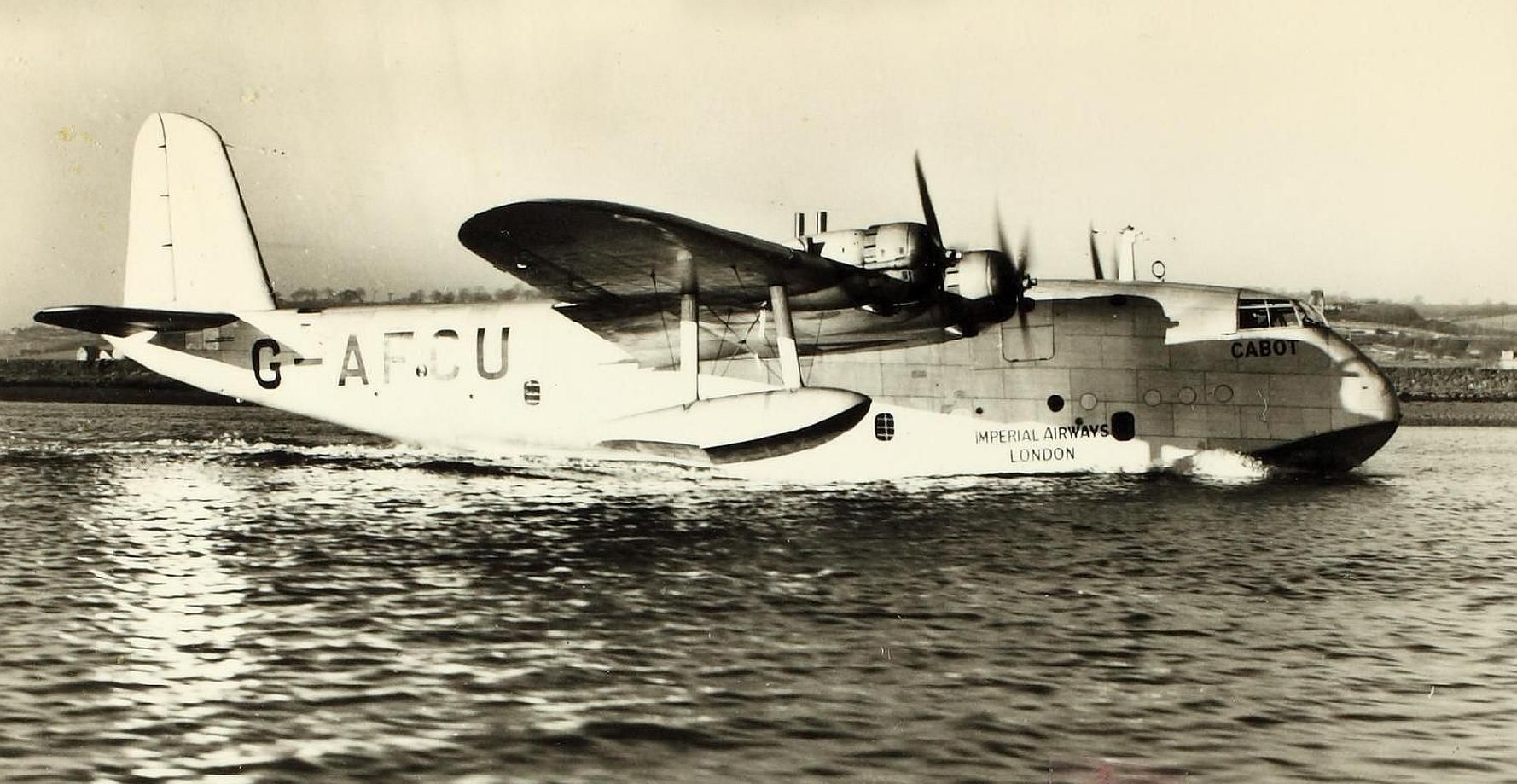
G-AFCV Caribou Imperial Airways, to RAF in 1939 (as V3138) Destroyed 6 May 1940

G-AFCW Connemara Imperial Airways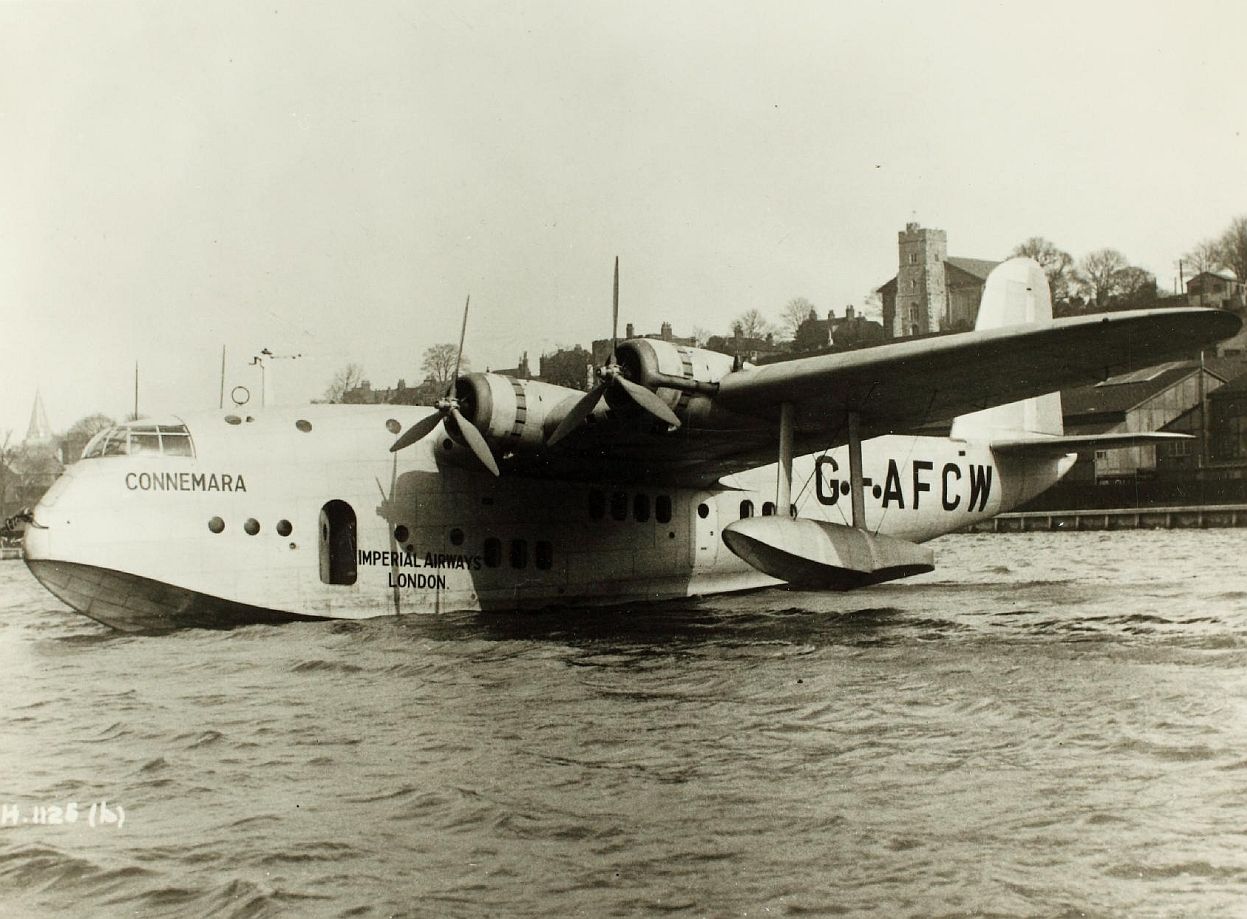
G-AFCX Clyde Imperial Airways, later BOAC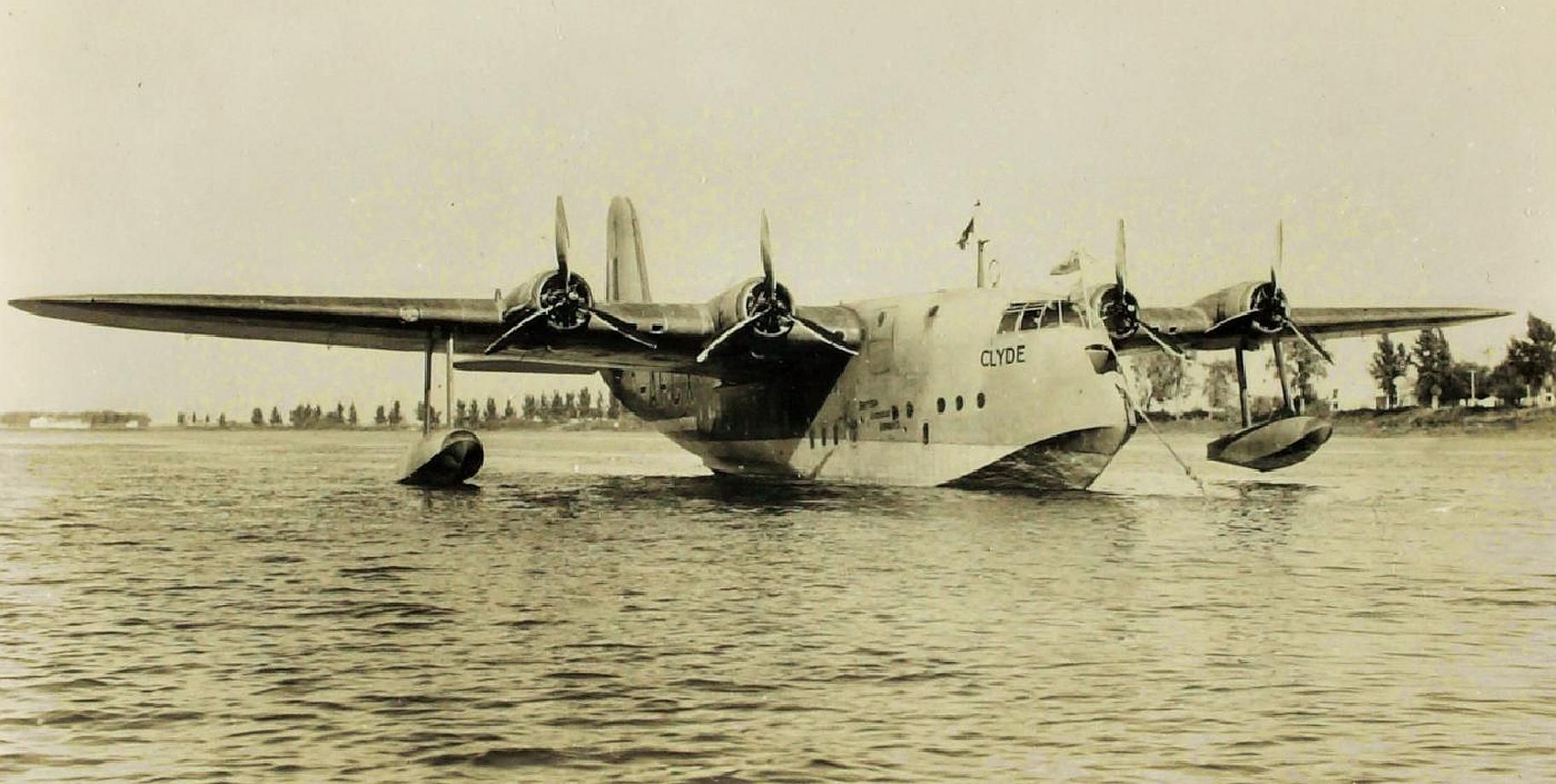
G-AFCY Captain Cook Imperial Airways, to TEAL in 1940 (as ZK-AMC Awarua)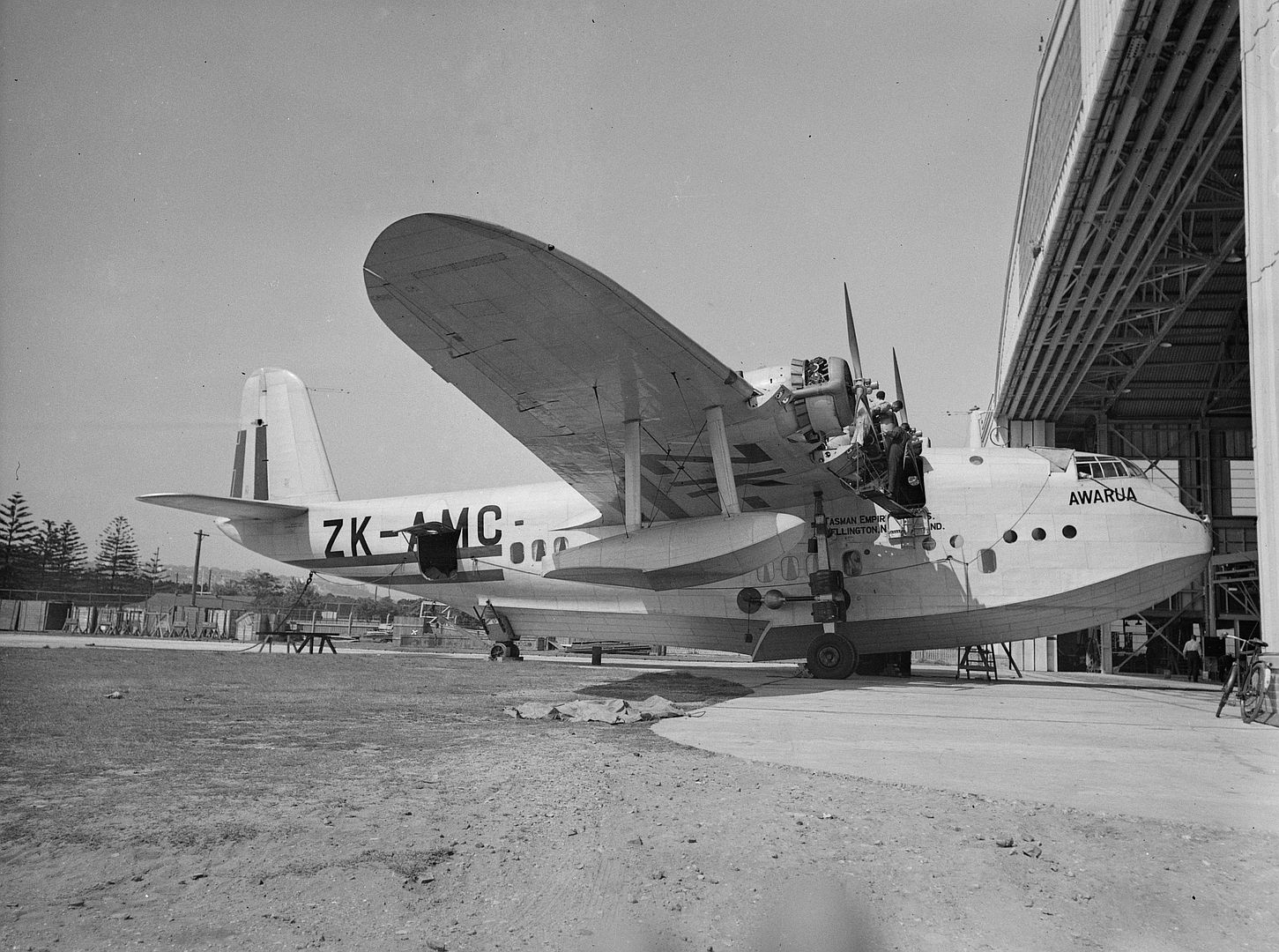

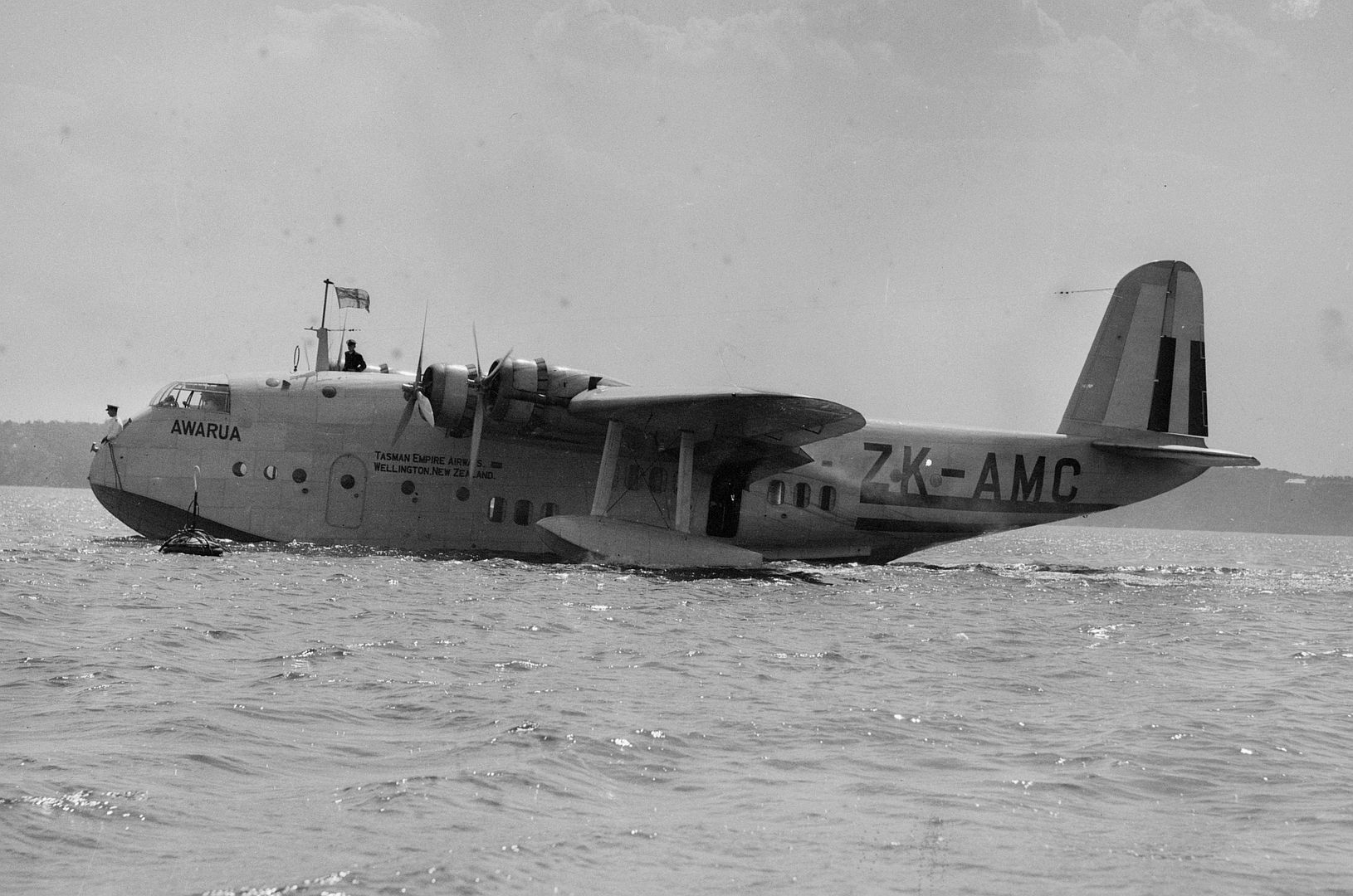
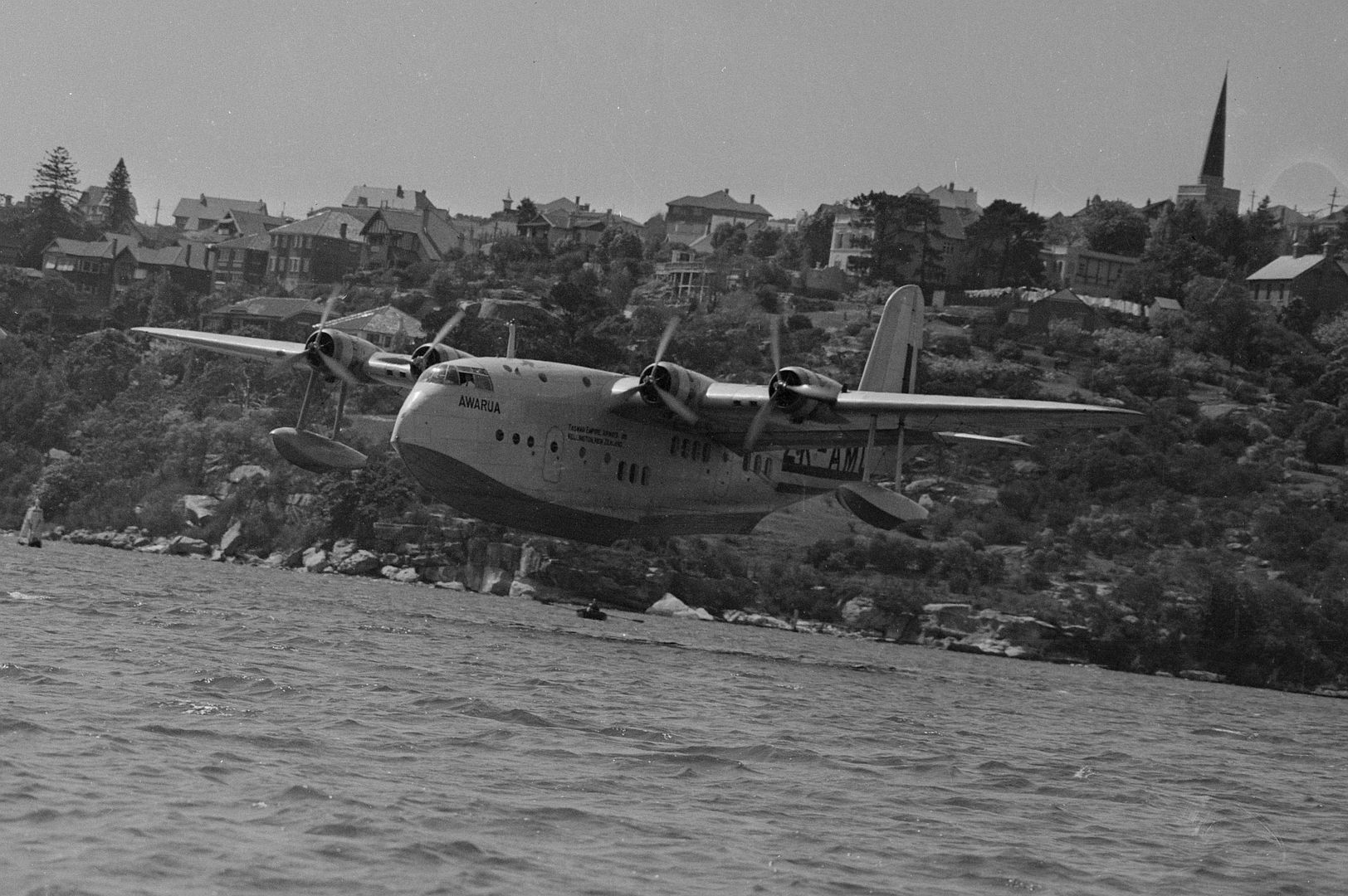
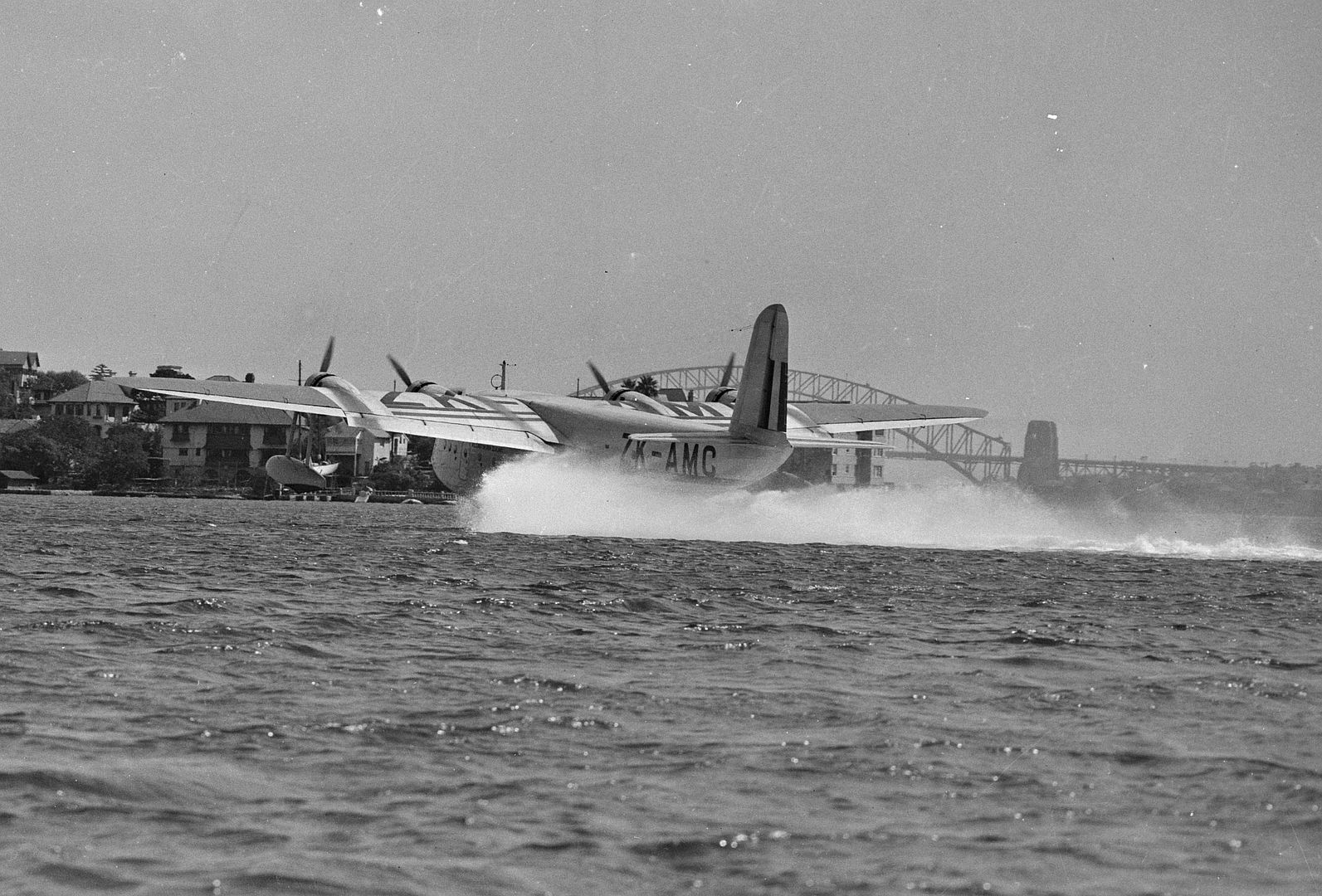
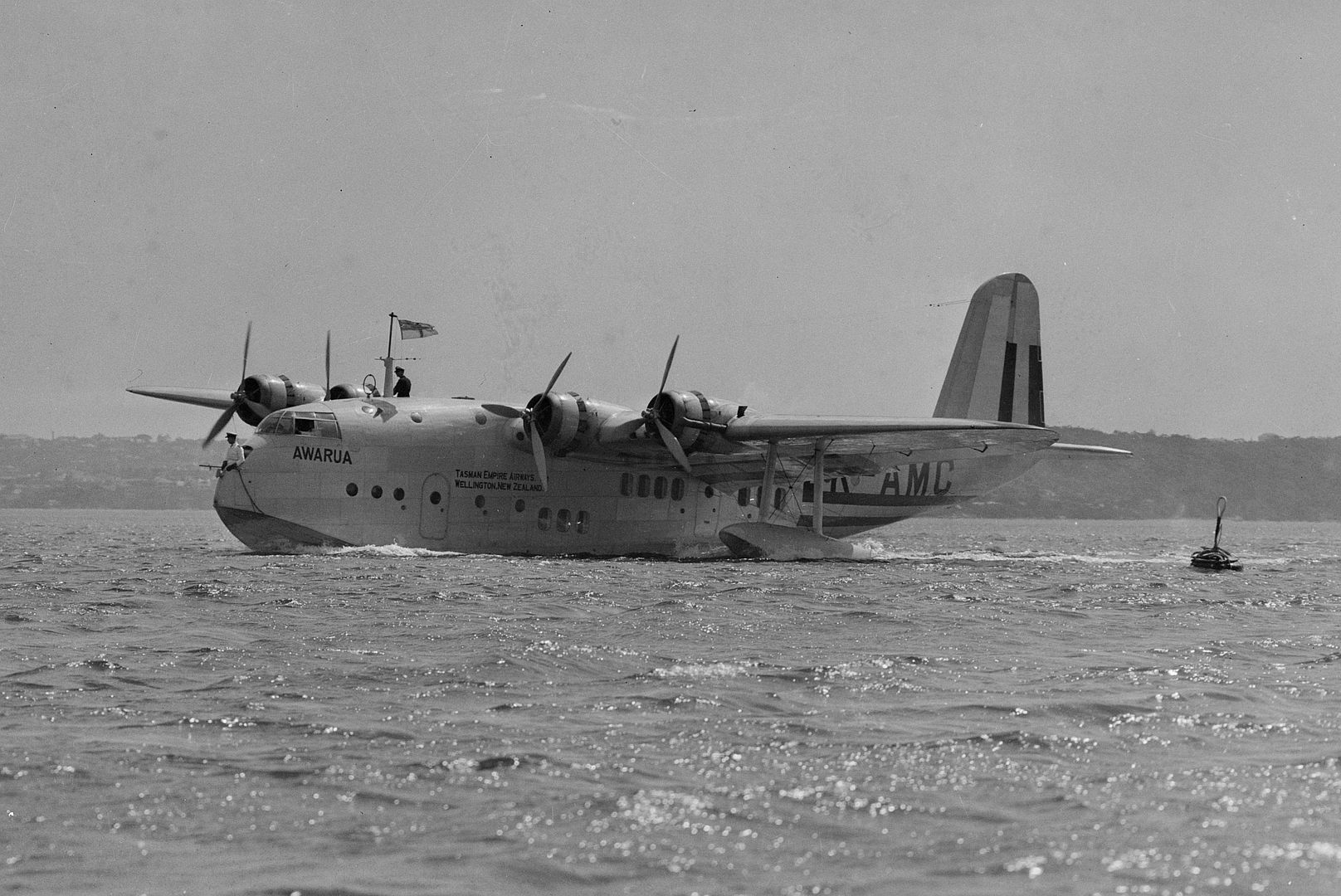

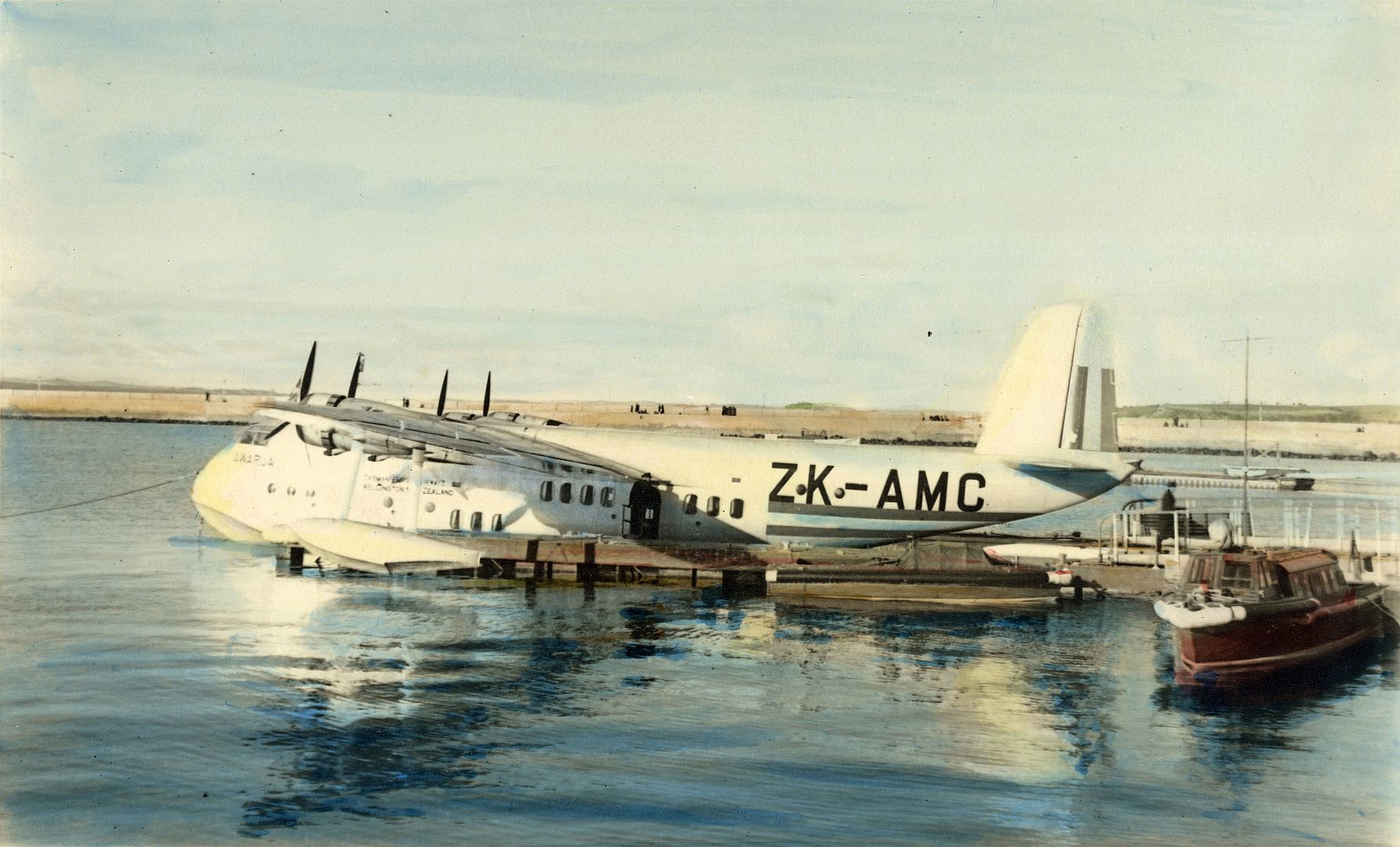
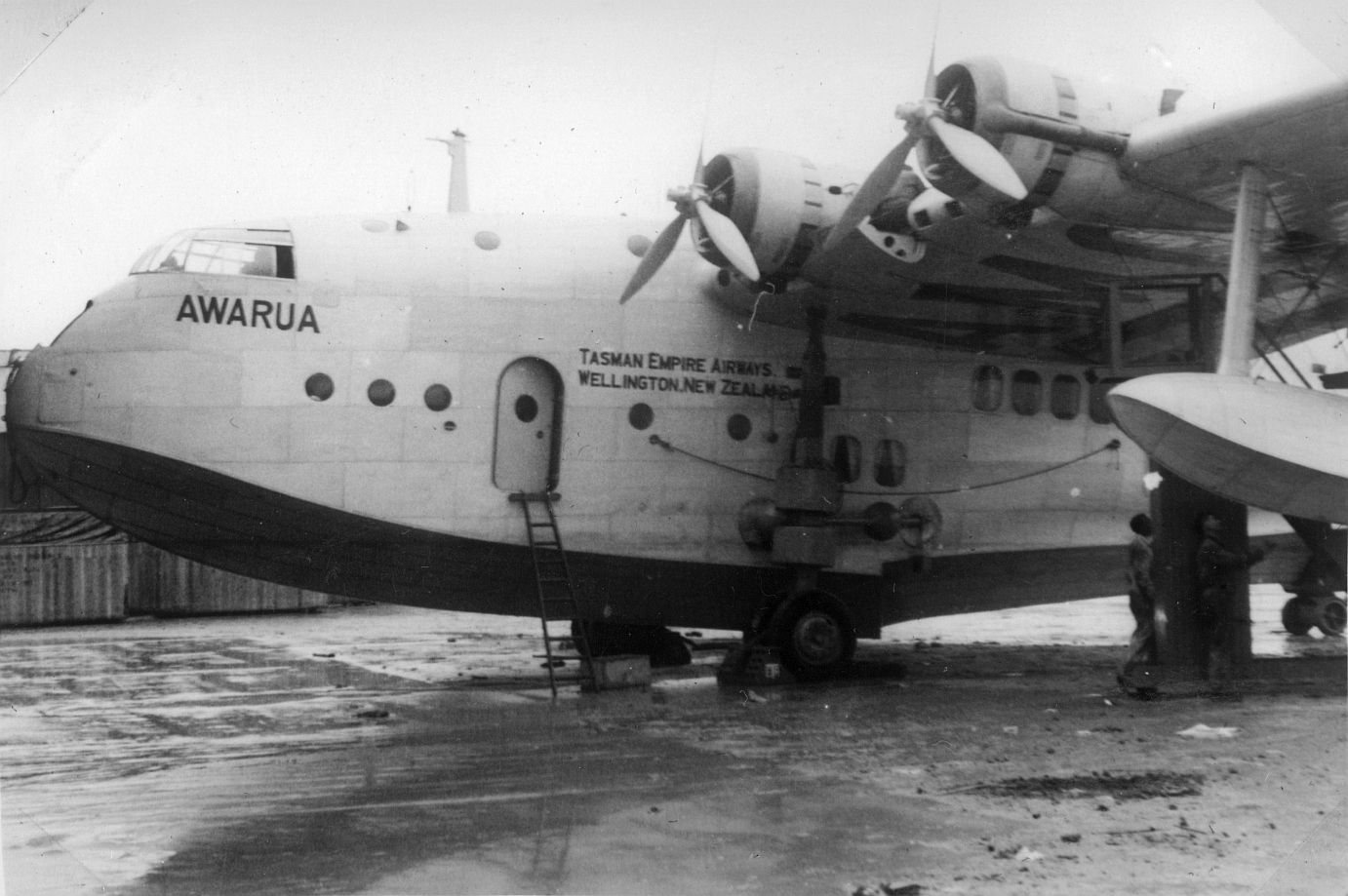
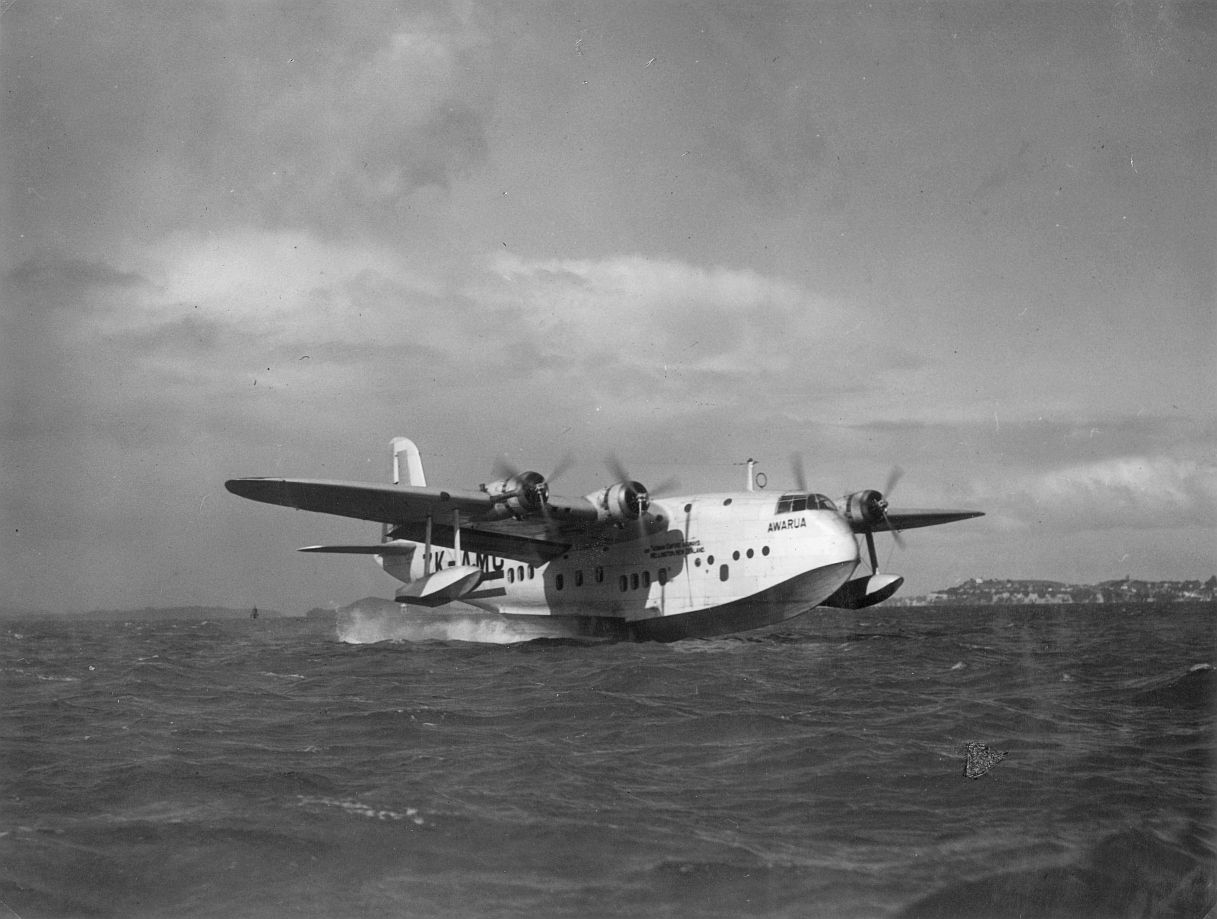
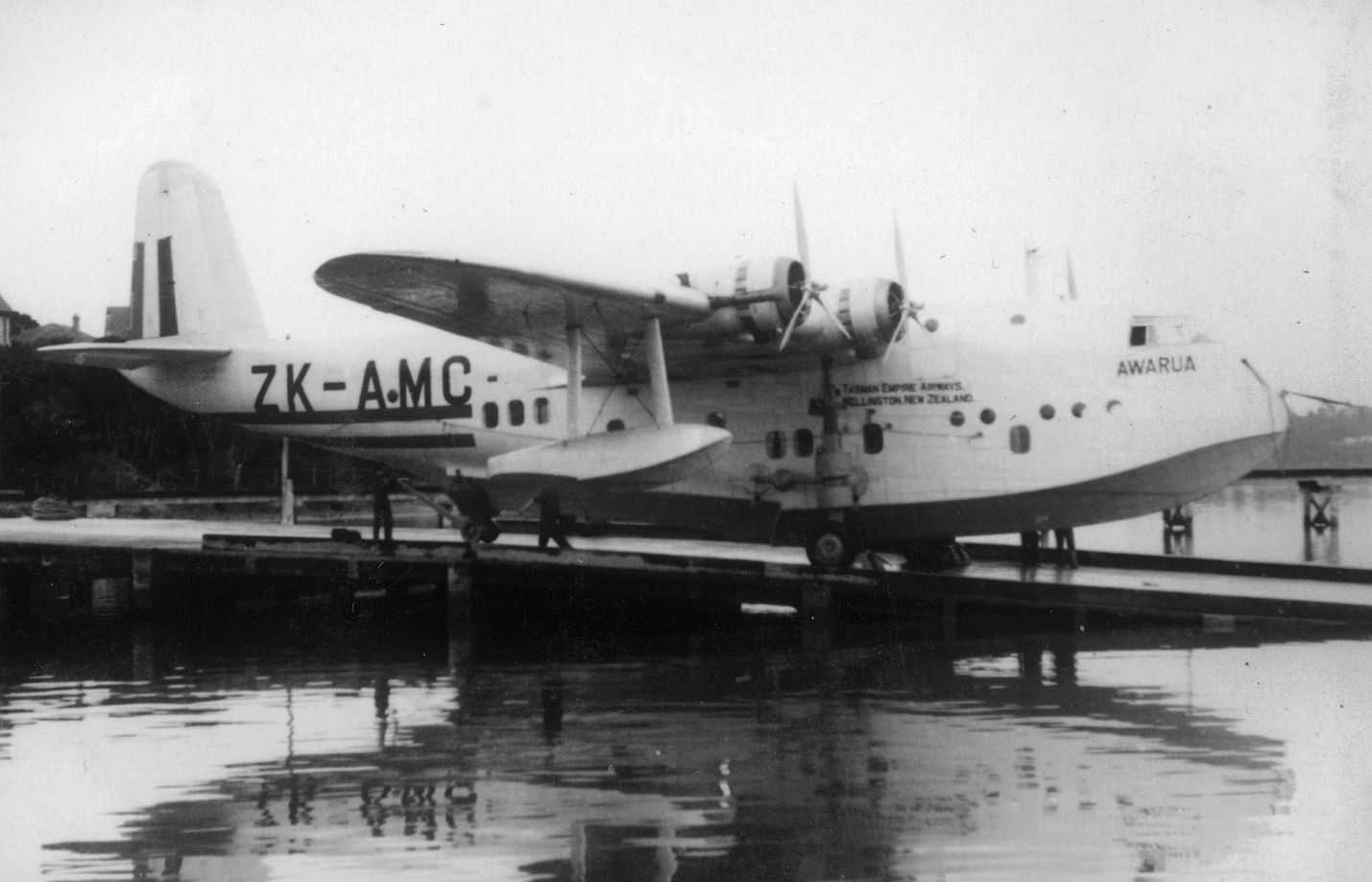
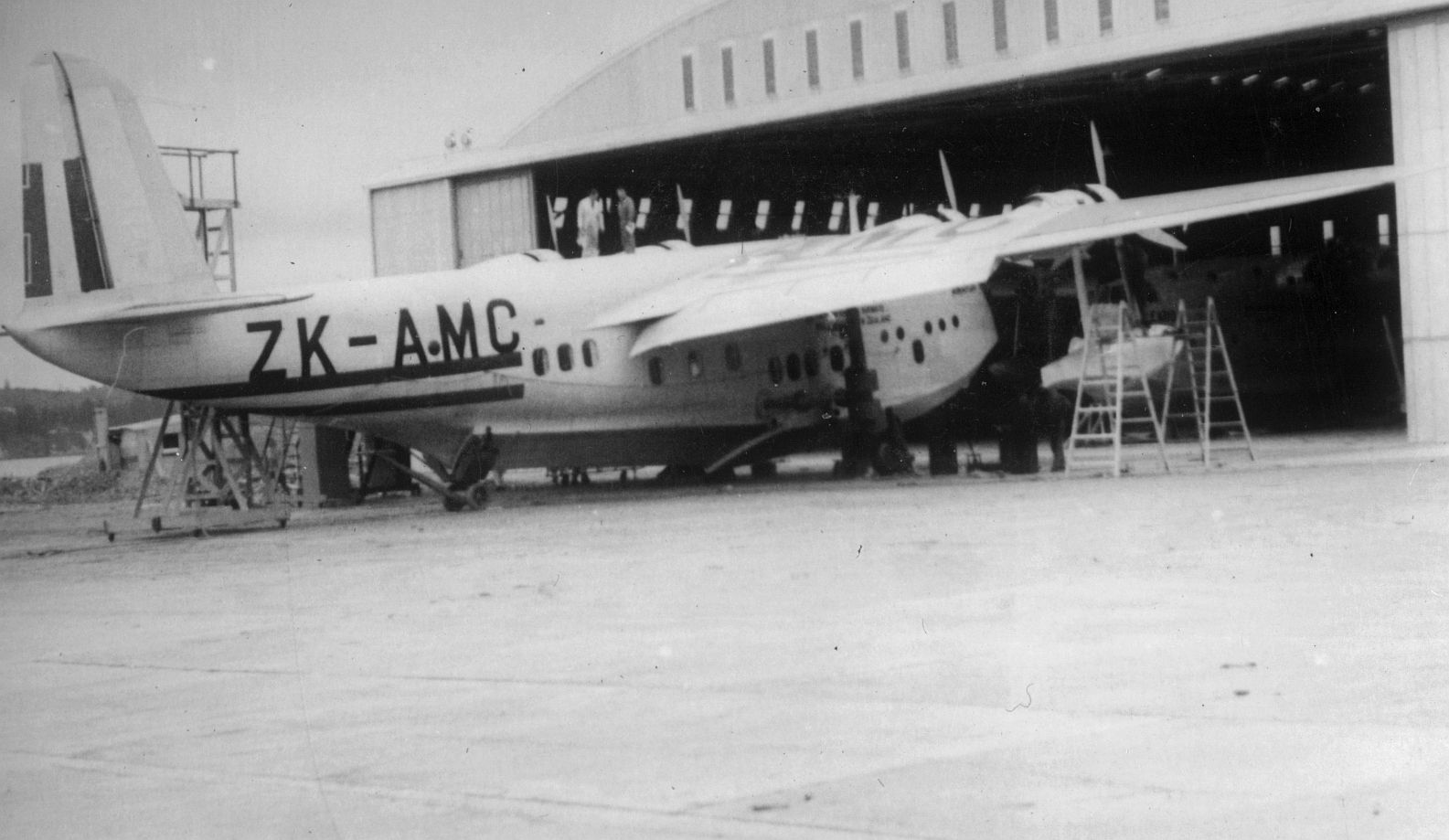
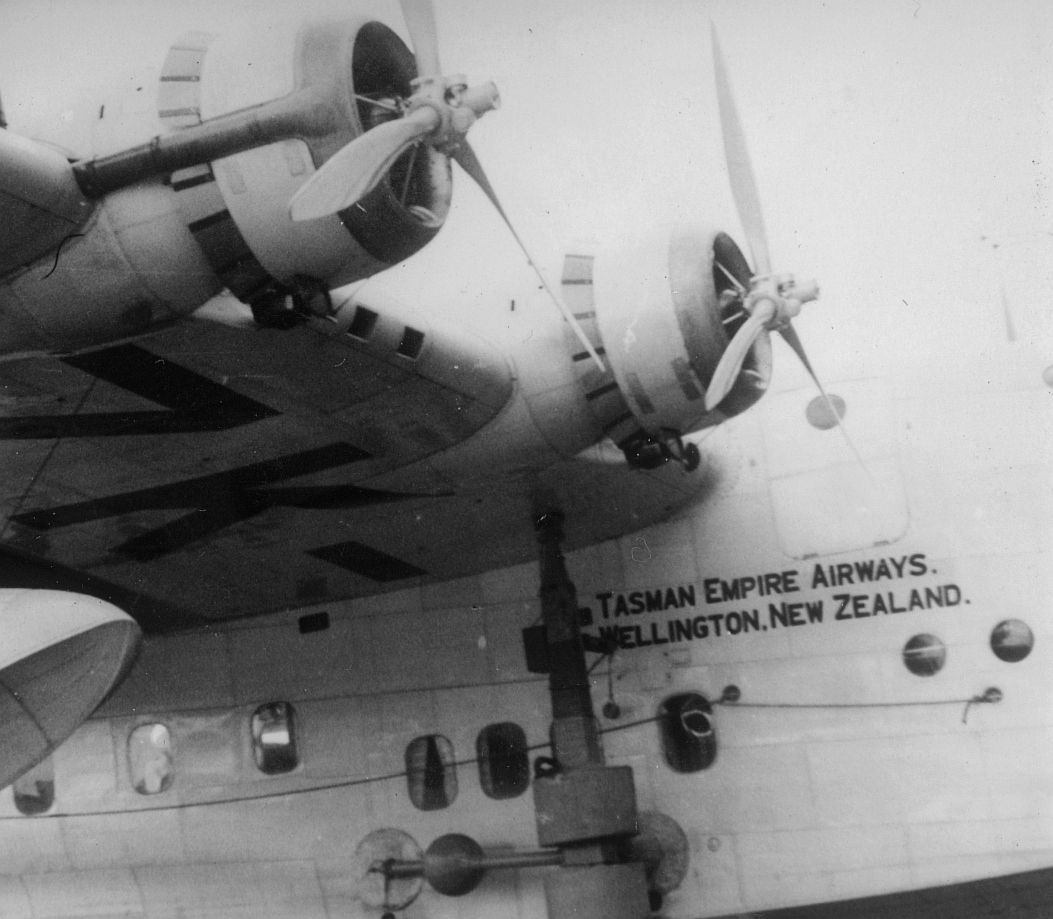
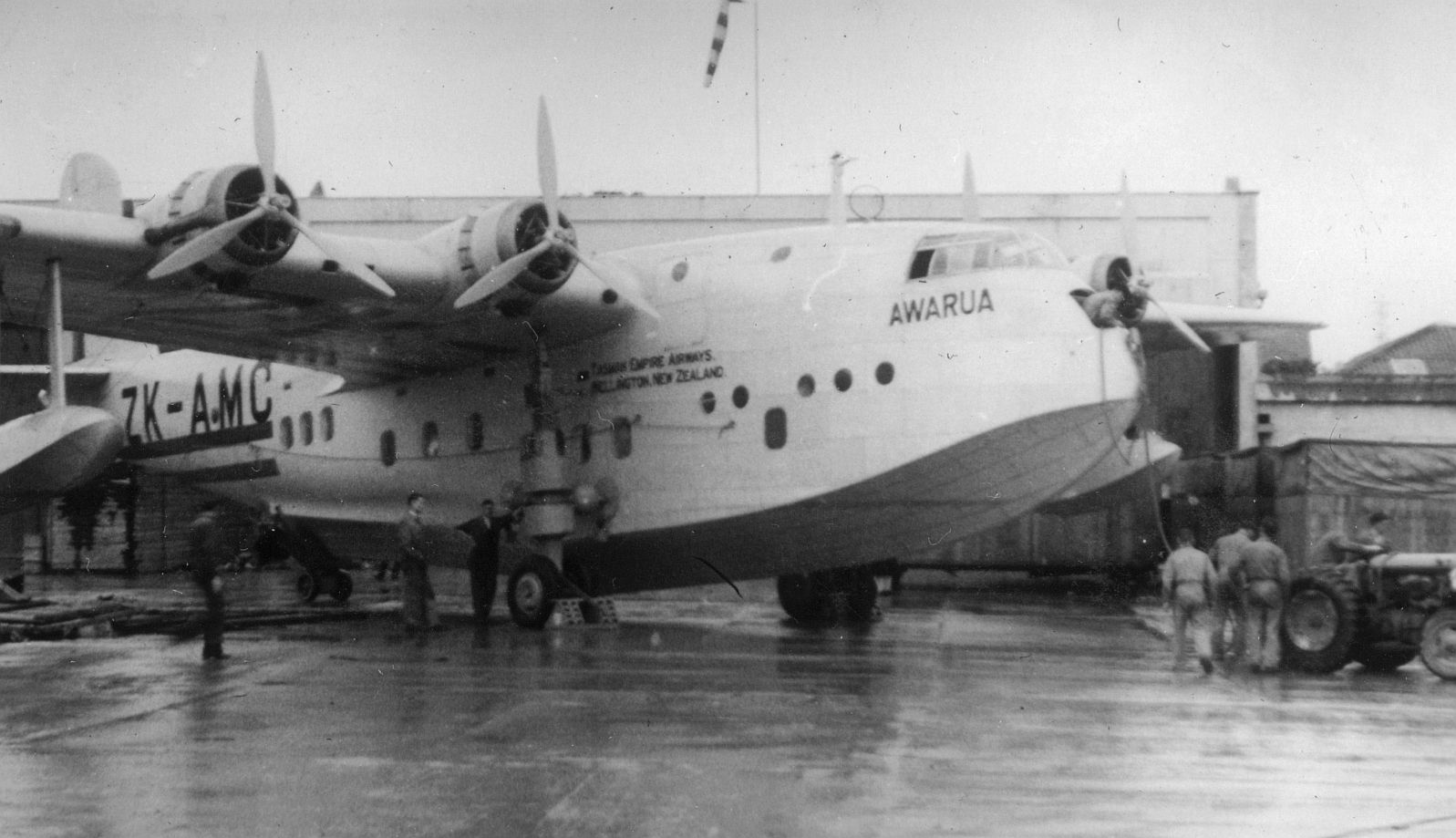
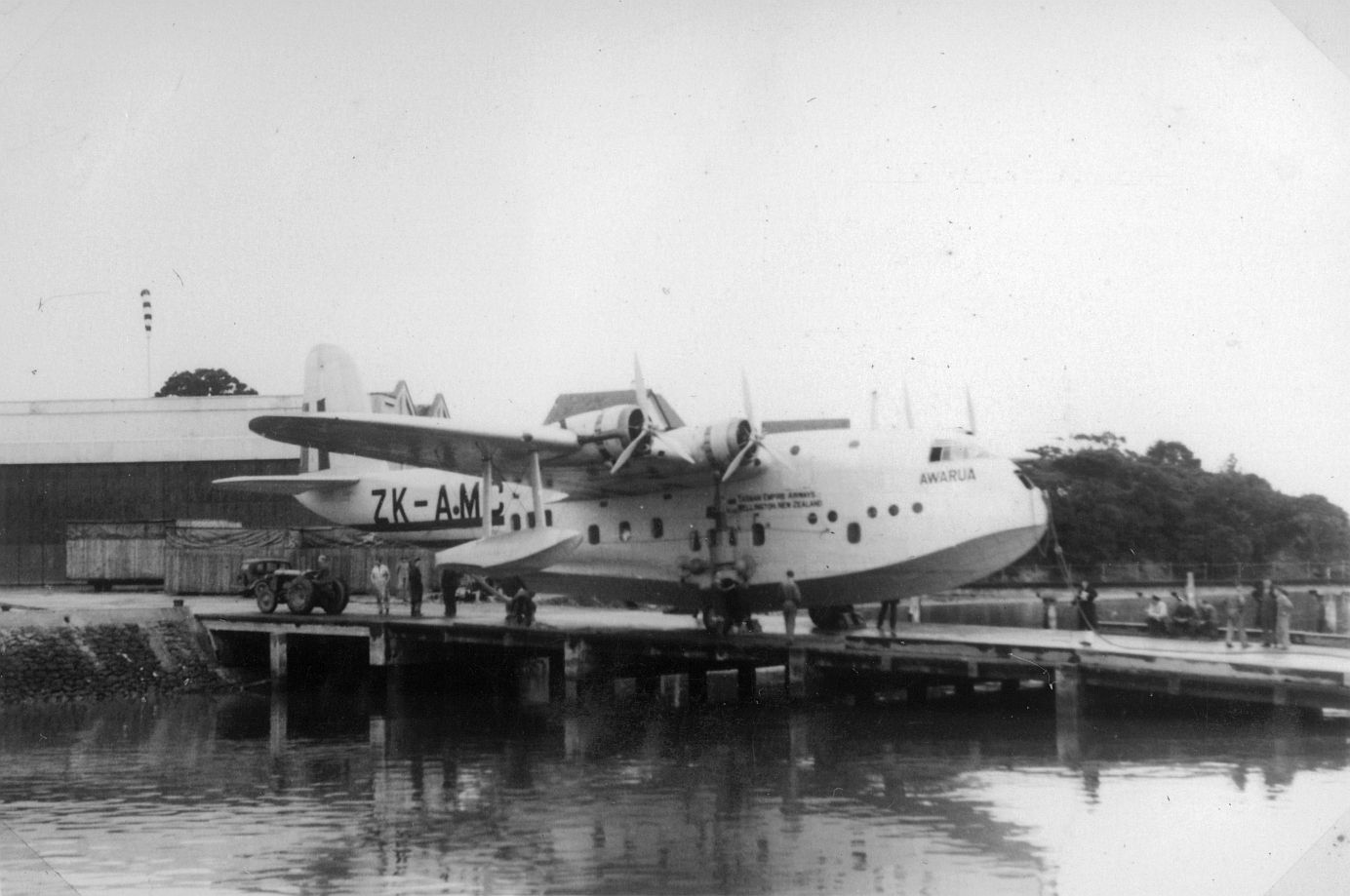
G-AFCZ Australia then Clare Imperial Airways, to TEAL in 1940 (as ZK-AMB), later to BOAC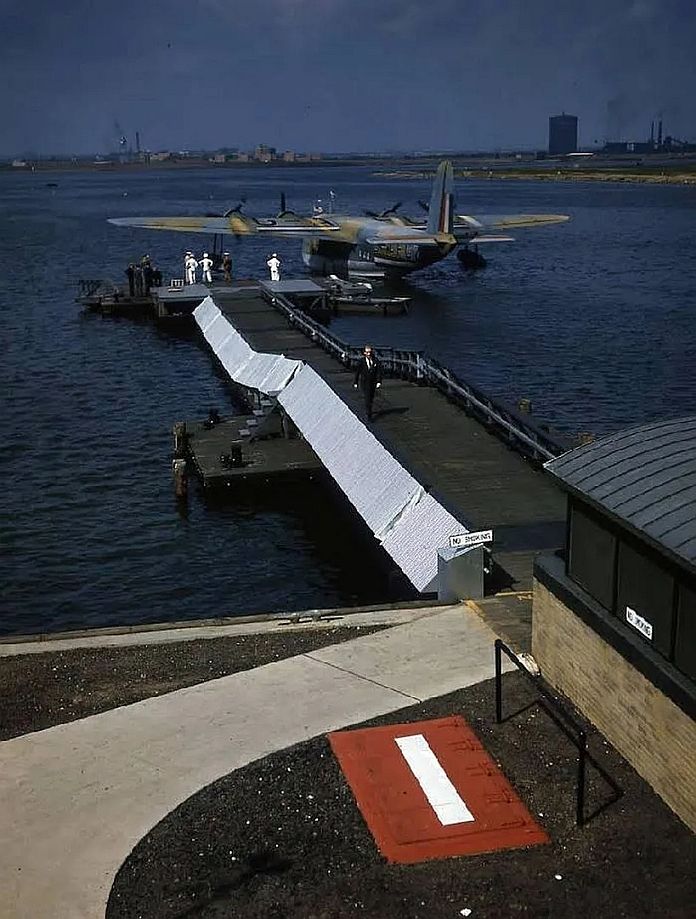

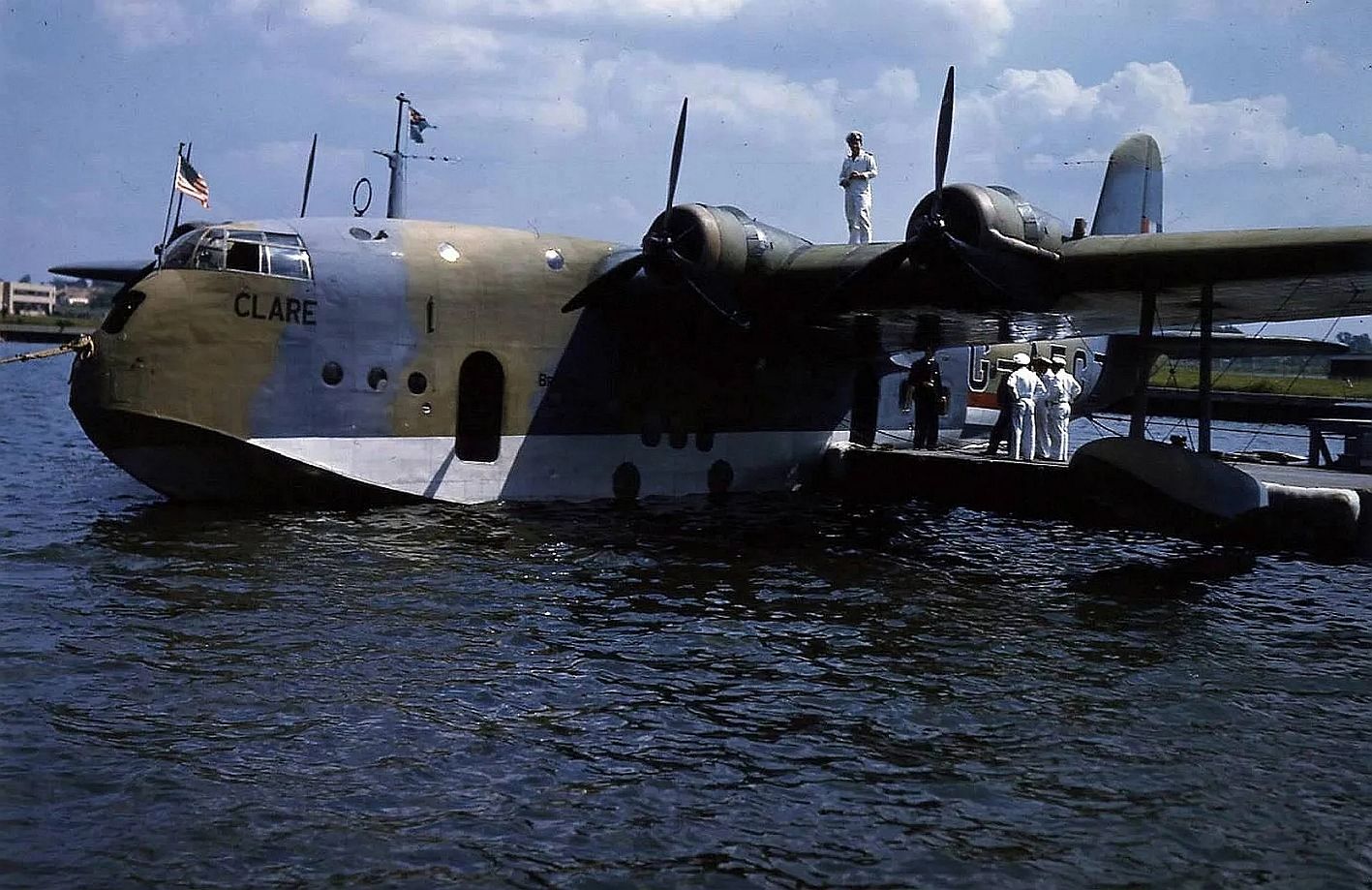
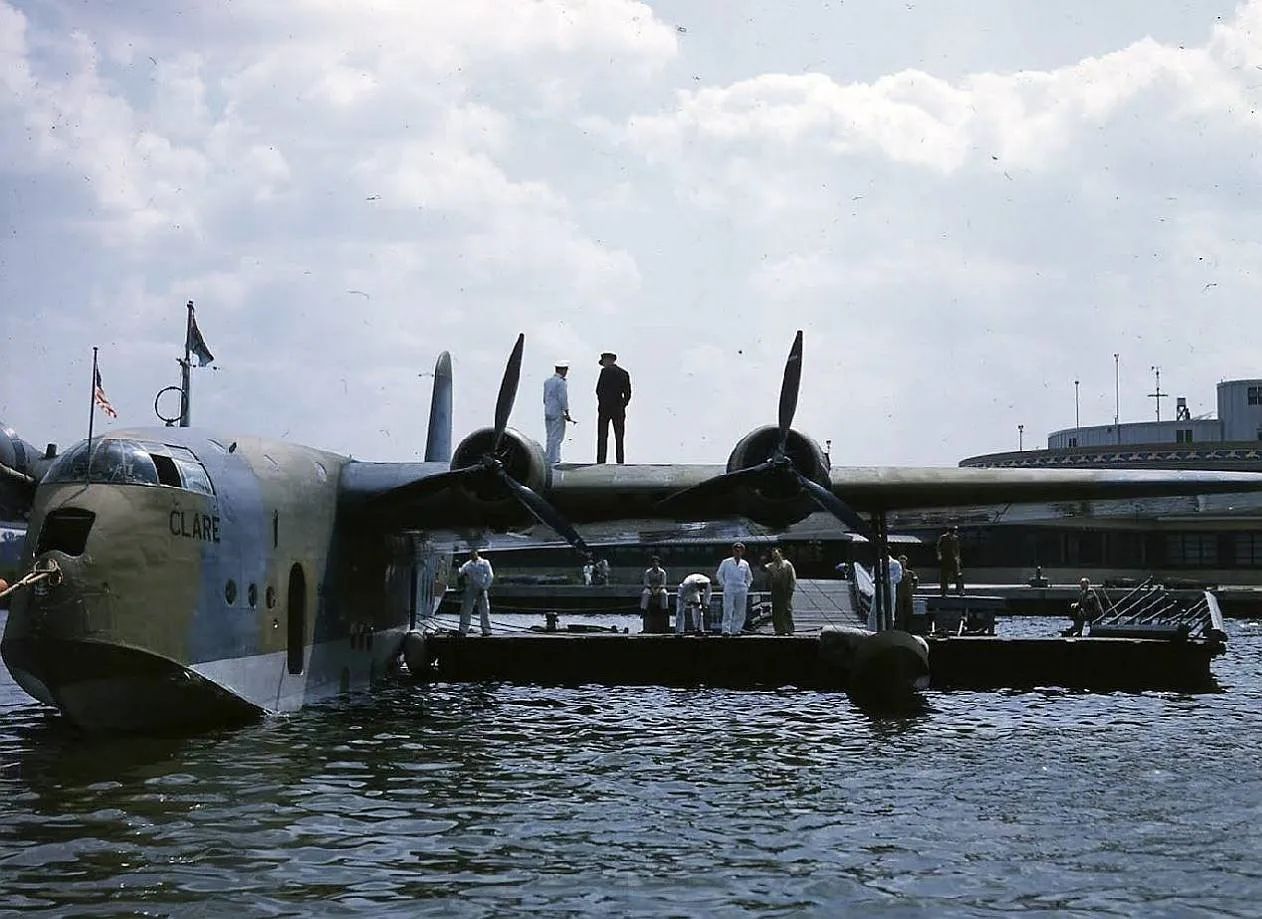
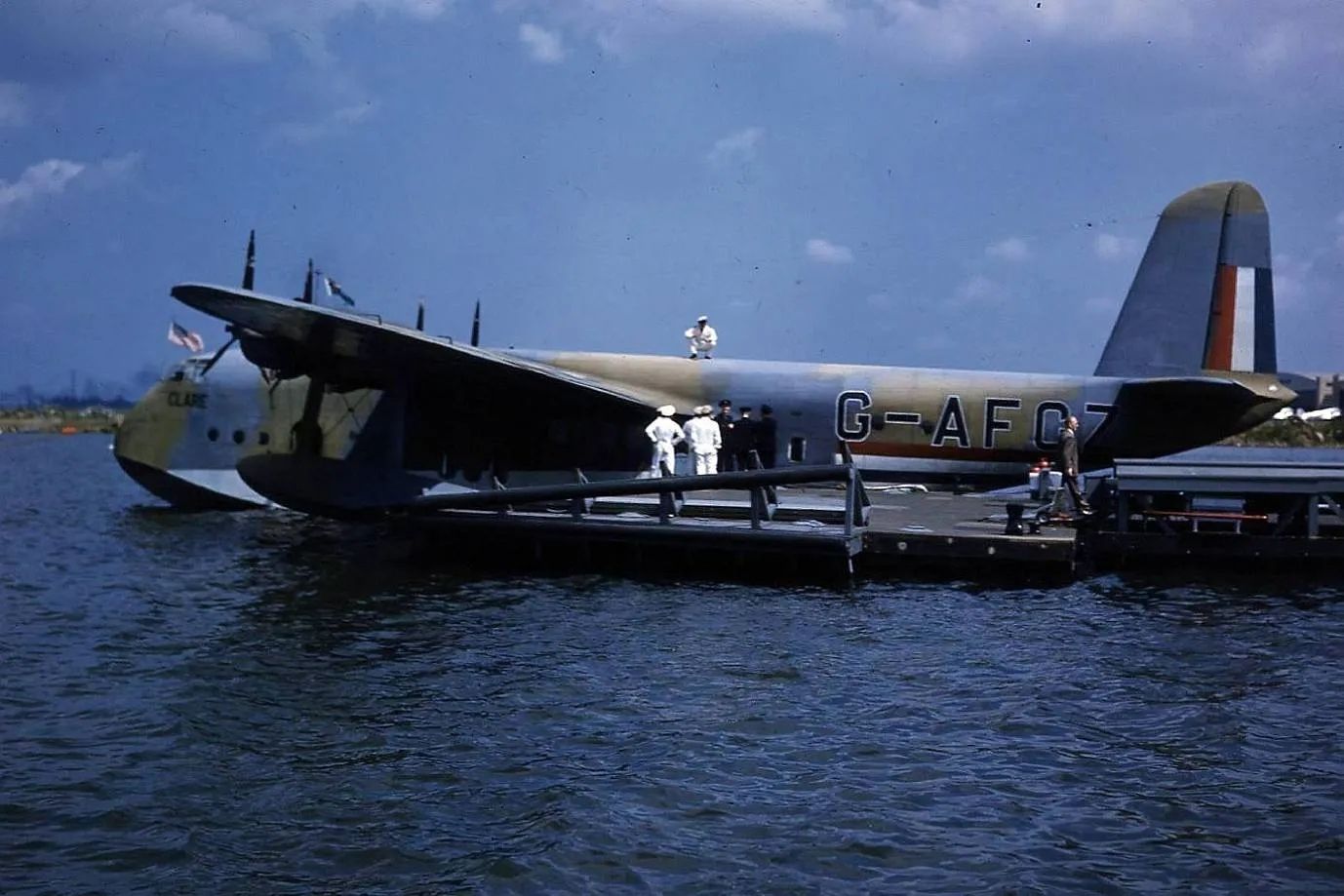

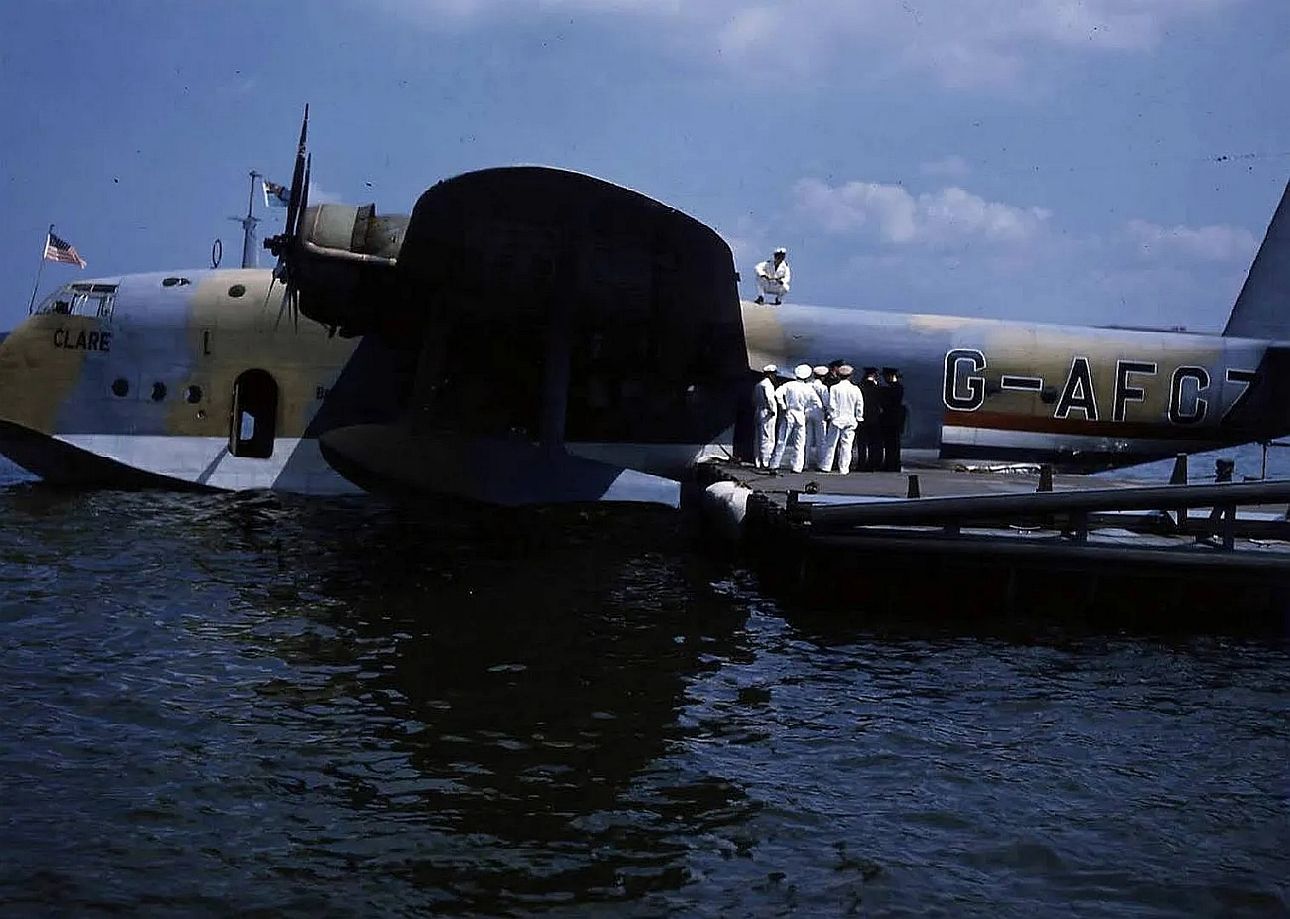
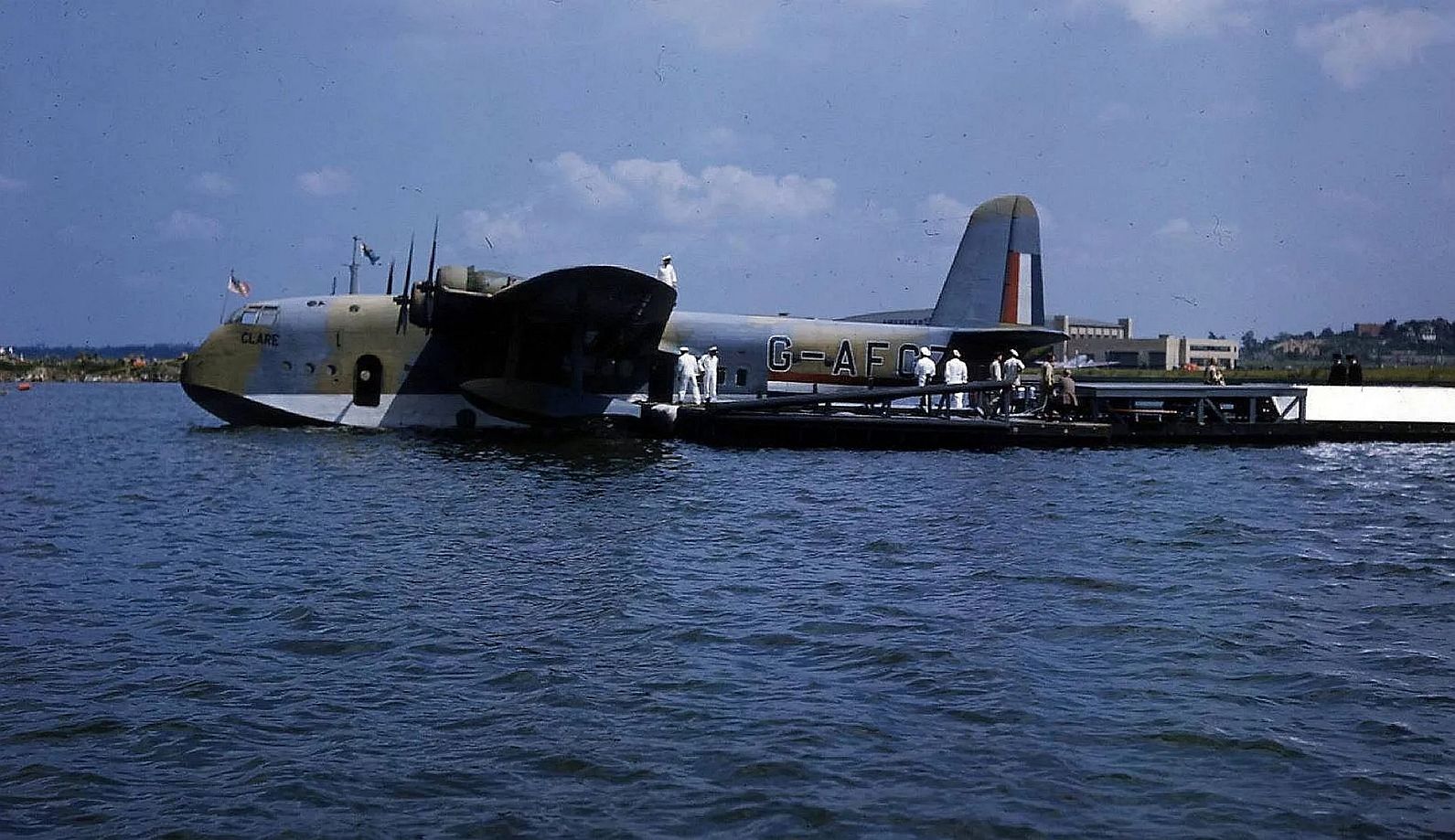
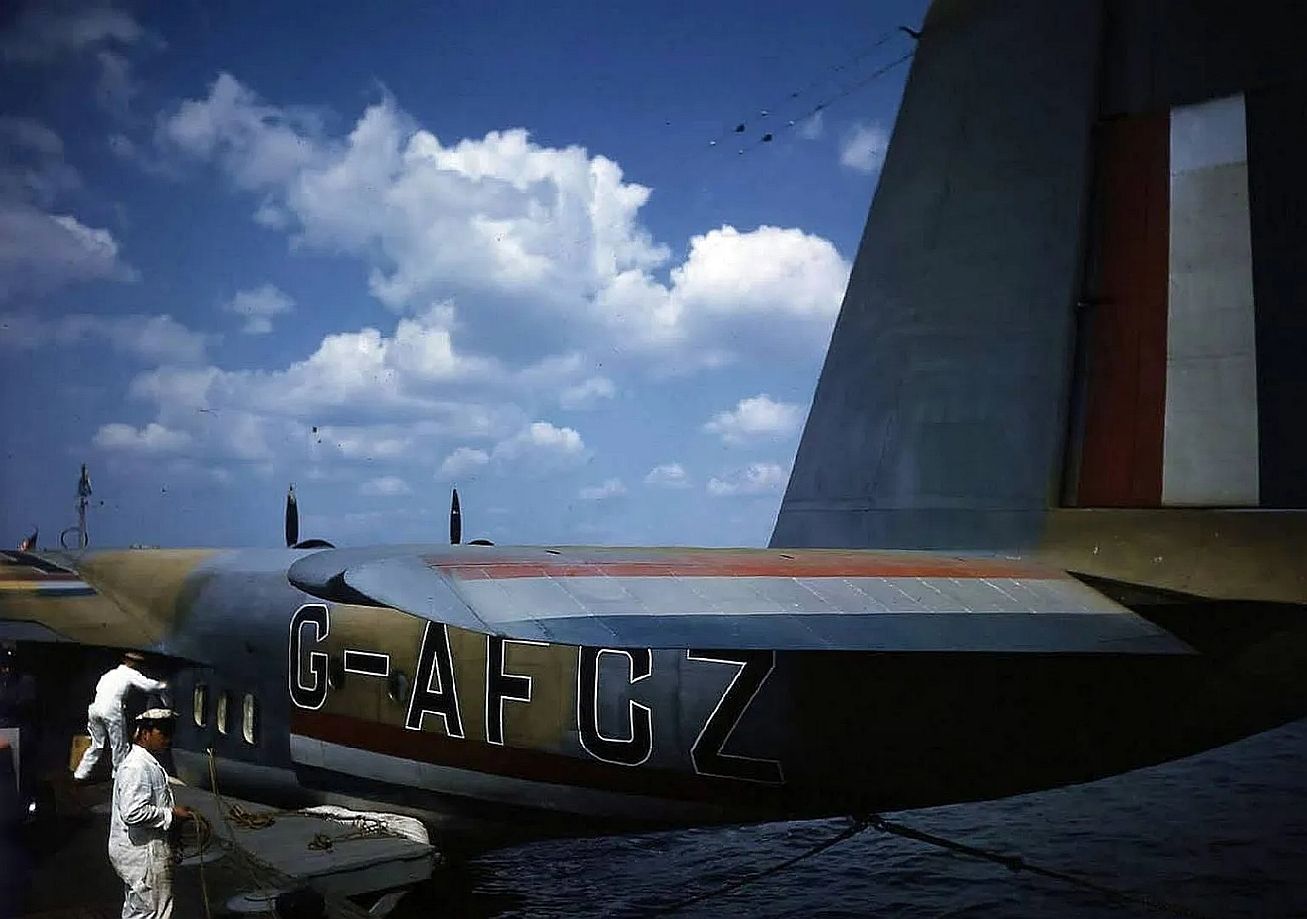
G-AFDA Aotearoa Imperial Airways, to TEAL in 1940 (as ZK-AMA)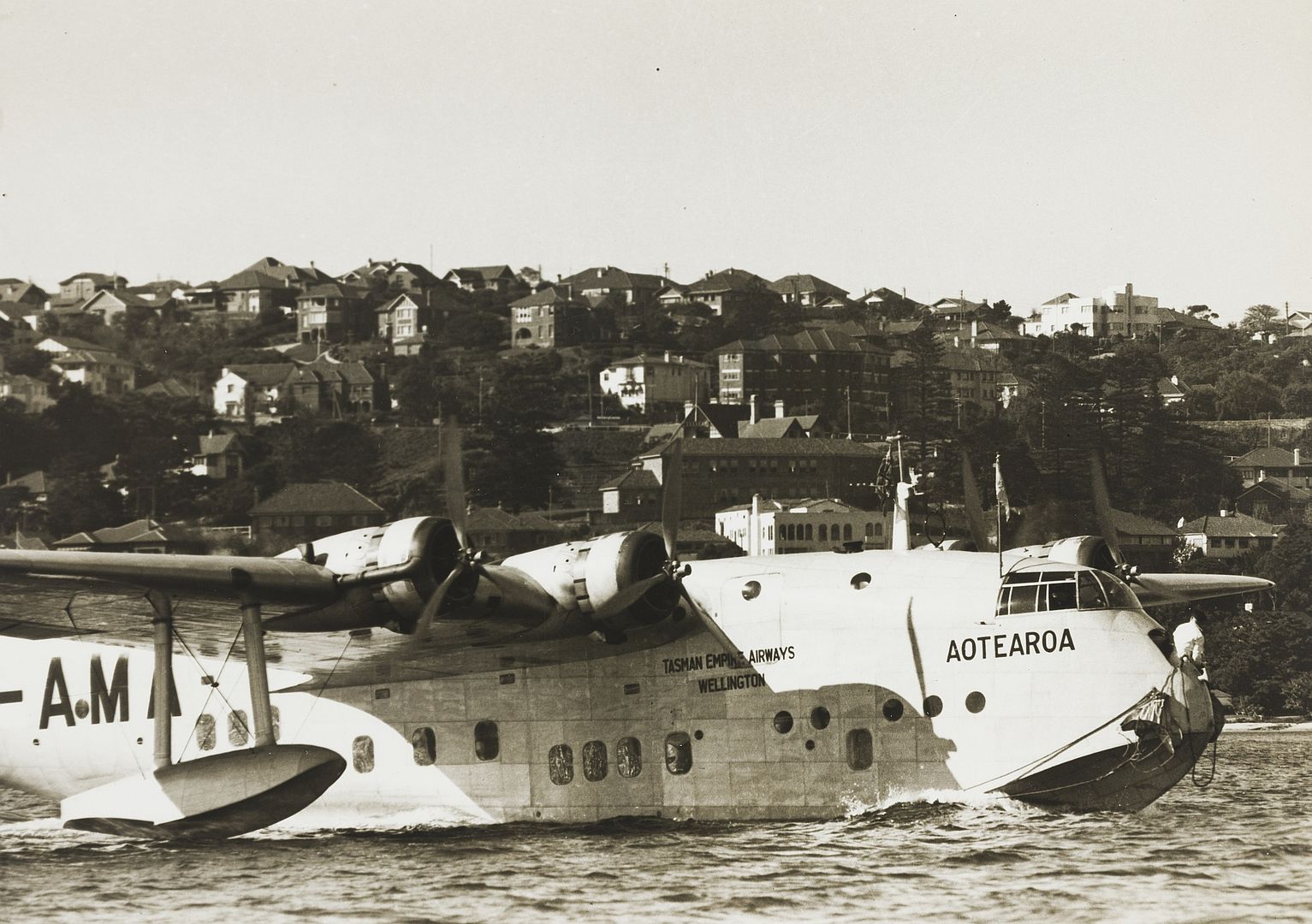
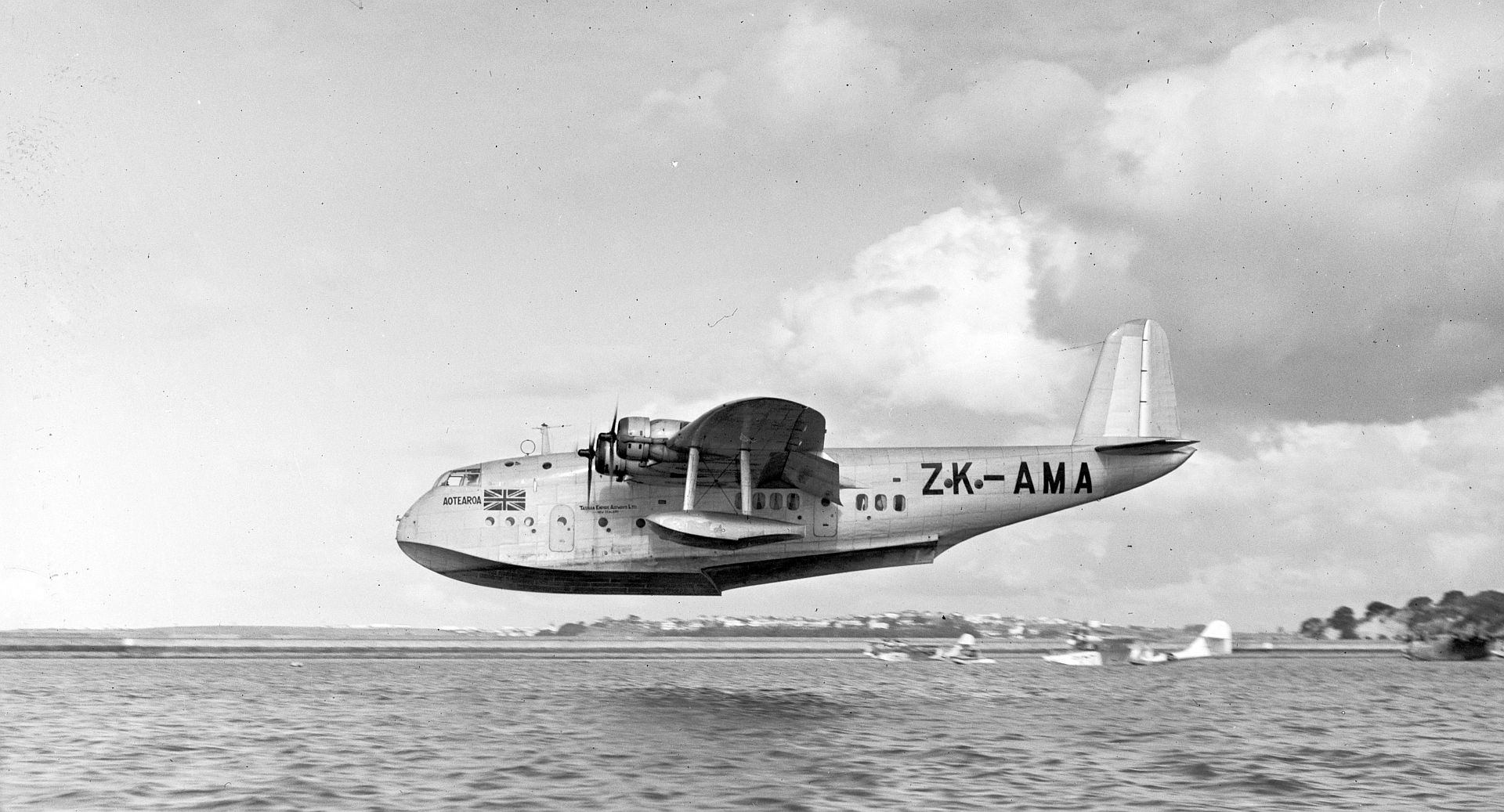
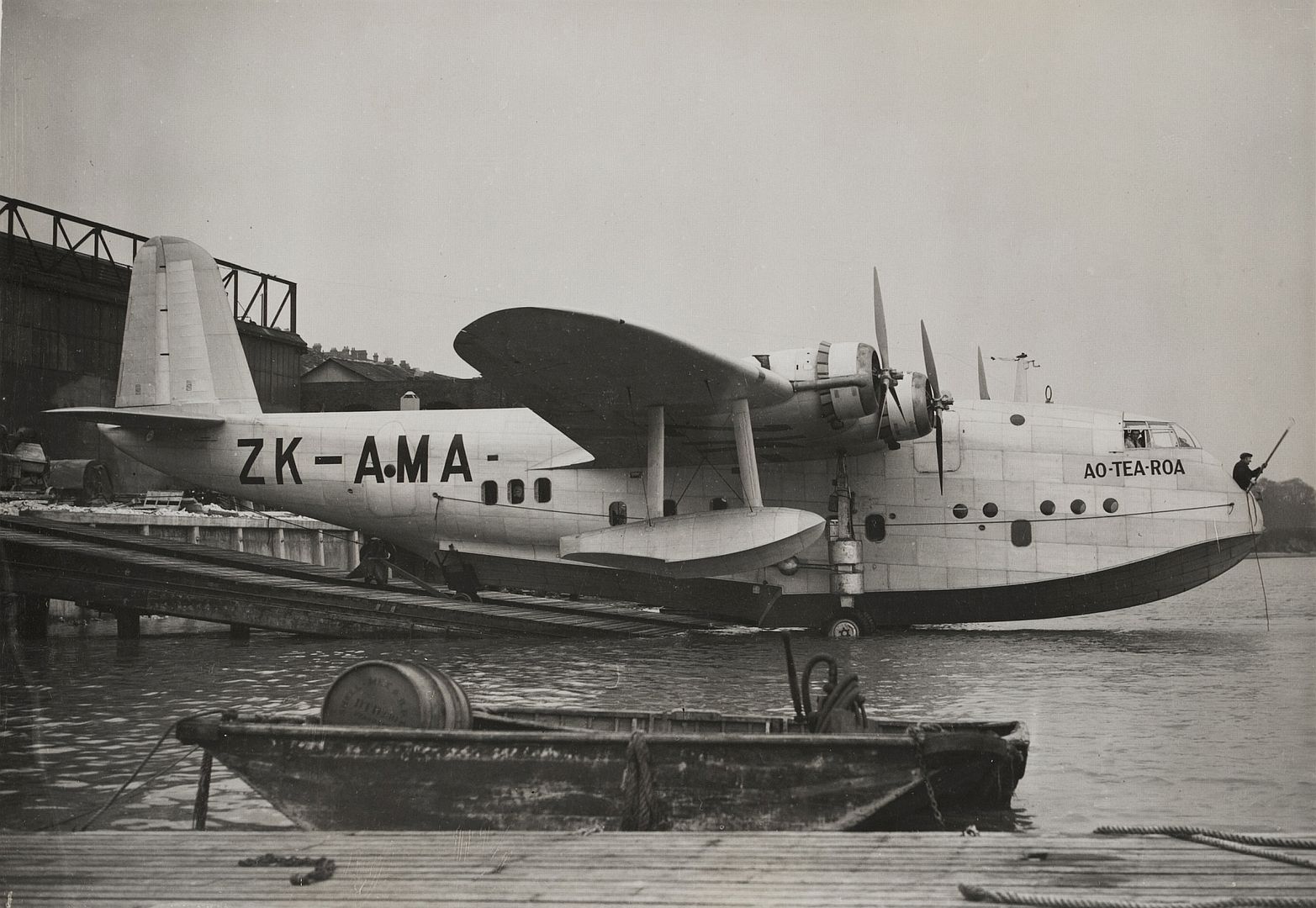


G-AFKZ Cathay Imperial Airways, later BOAC
S.33
G-AFPZ Clifton BOAC, to RAAF (as A18-14), to QANTAS in 1942 (as VH-ACD)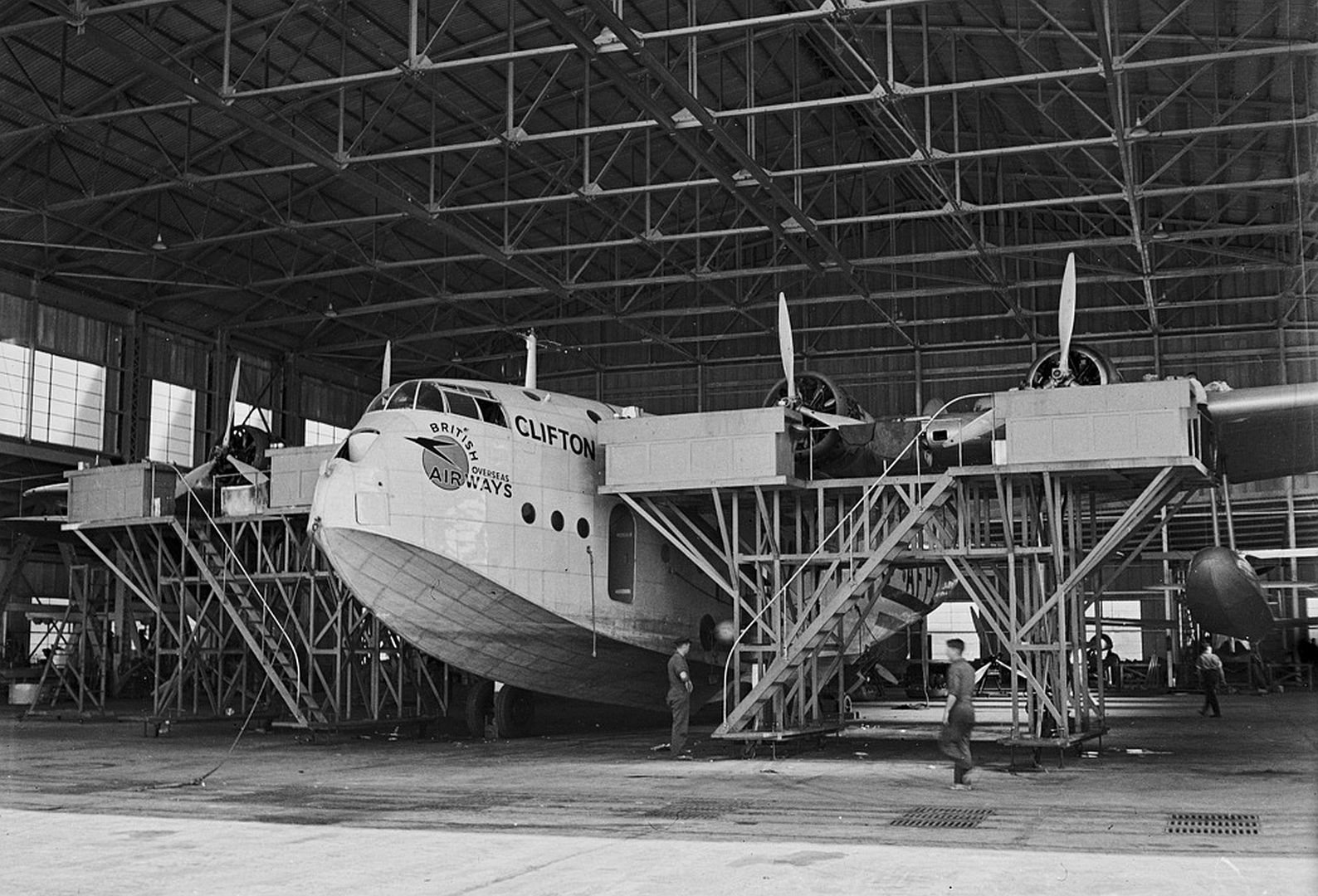
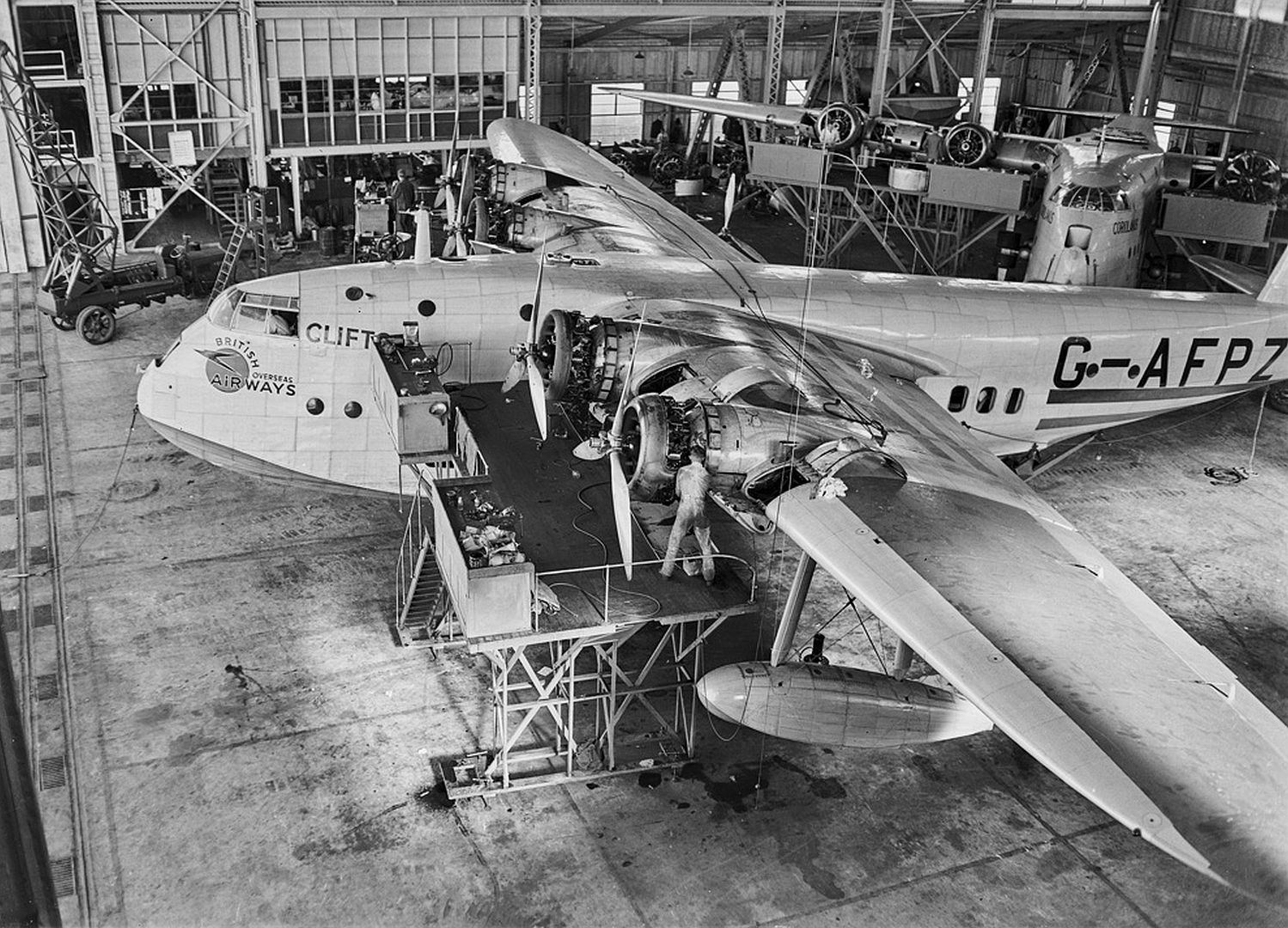
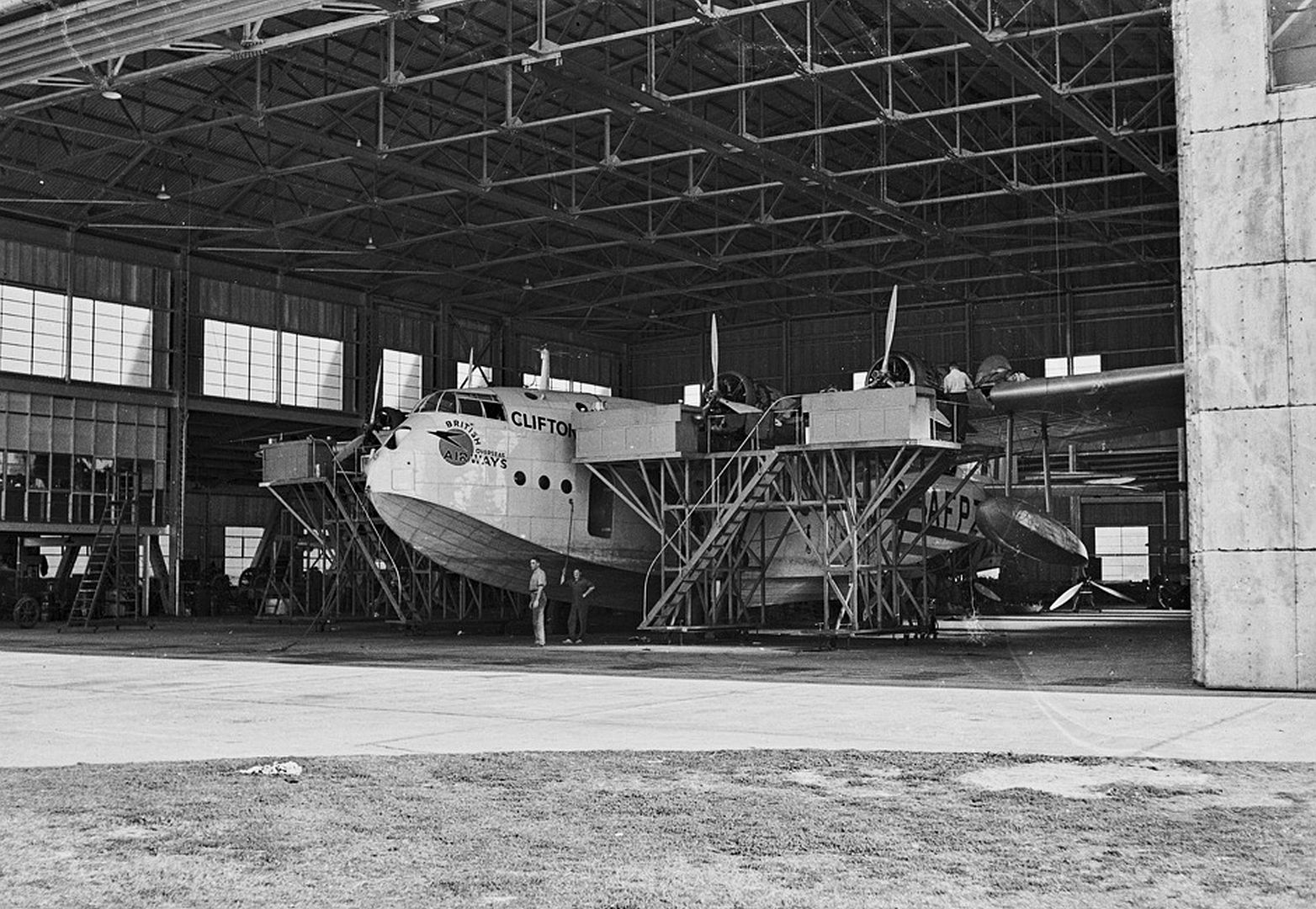
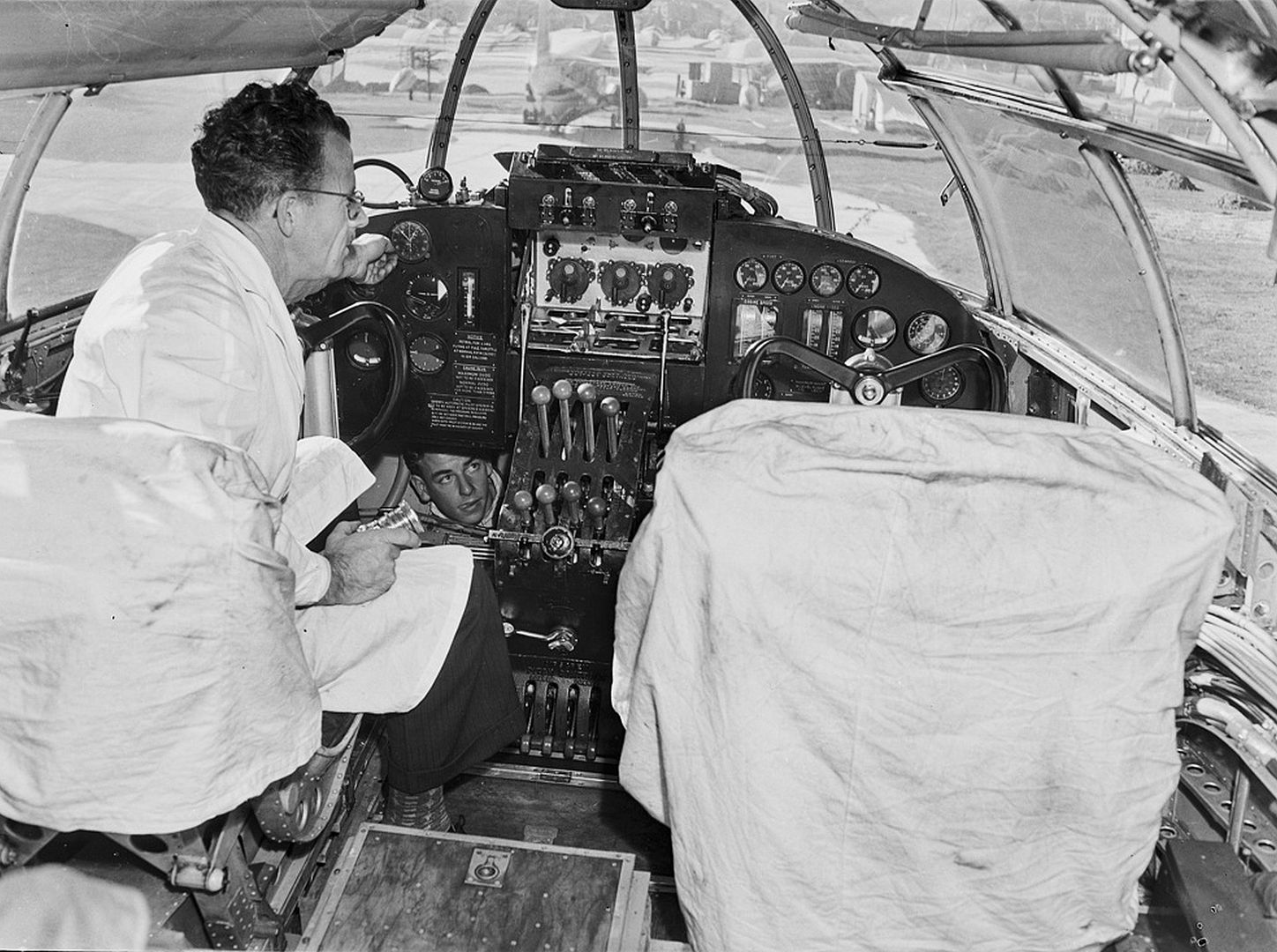
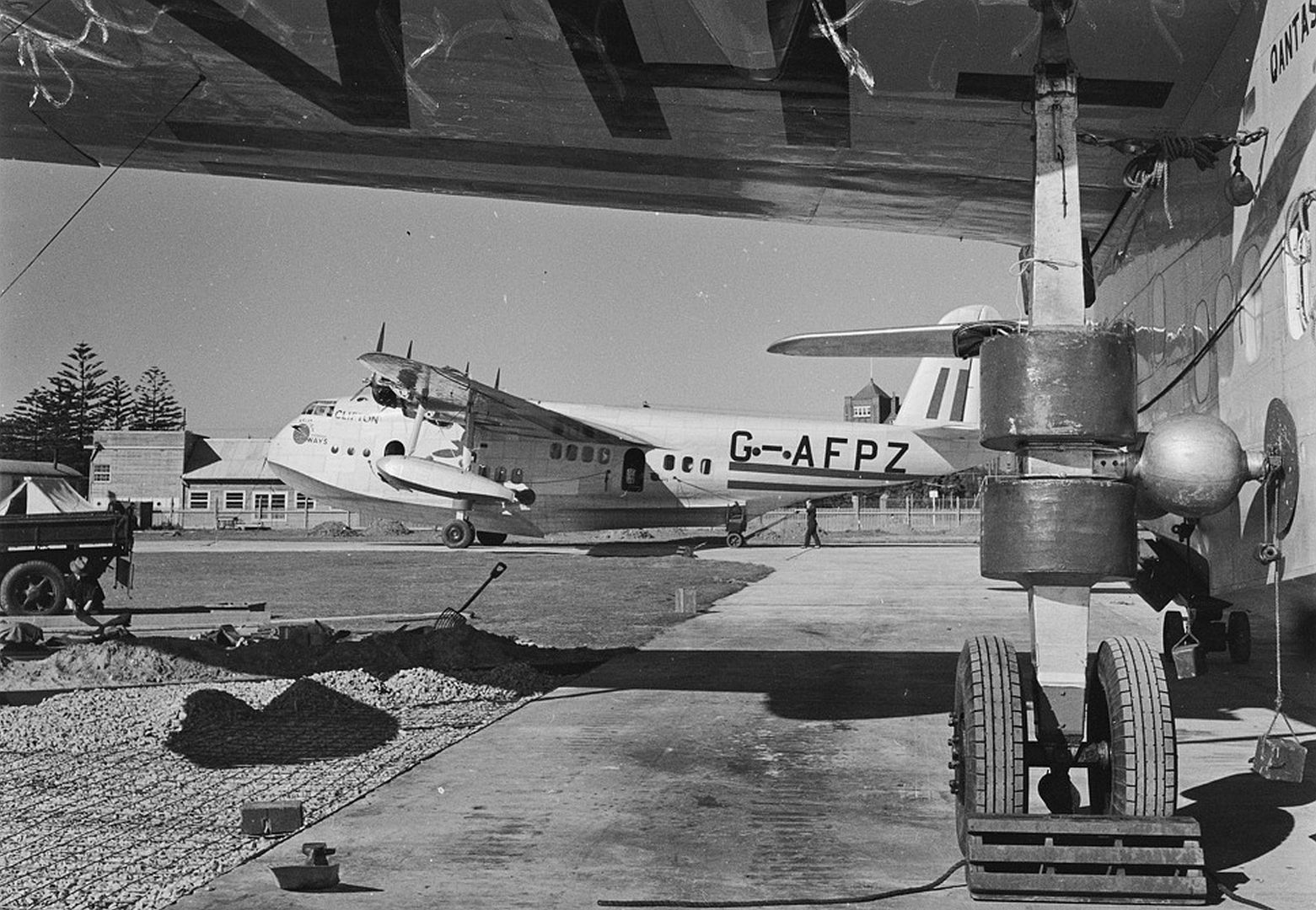
G-AFRA Cleopatra BOAC, 1st Service 5-6-40 Poole to Durban. Final Service ended 5-11-46 at Poole.
Specifications (Short S.23)
Crew: 5 (2 pilots, navigator, flight clerk and steward)
Capacity:
24 day passengers or 16 sleeping passengers
1.5 ton of mail
Length: 88 ft 0 in (26.82 m)
Wingspan: 114 ft 0 in (34.75 m)
Height: 31 ft 9 3⁄4 in (9.696 m)
Wing area: 1,500 sq ft (140 m2)
Empty weight: 23,500 lb (10,659 kg)
Gross weight: 40,500 lb (18,370 kg)
Powerplant: 4 × Bristol Pegasus XC radial engines, 920 hp (690 kW) each
Performance
Maximum speed: 200 mph (320 km/h, 170 kn)
Cruise speed: 165 mph (266 km/h, 143 kn)
Range: 760 mi (1,220 km, 660 nmi)
Service ceiling: 20,000 ft (6,100 m)
Rate of climb: 950 ft/min (4.8 m/s) -
 Main AdminOver 40 new photos added.
Main AdminOver 40 new photos added.
Post a reply
- Go to Previous topic
- Go to Next topic
- Go to Welcome
- Go to Introduce Yourself
- Go to General Discussion
- Go to Screenshots, Images and Videos
- Go to Off topic
- Go to Works in Progress
- Go to Skinning Tips / Tutorials
- Go to Skin Requests
- Go to IJAAF Library
- Go to Luftwaffe Library
- Go to RAF Library
- Go to USAAF / USN Library
- Go to Misc Library
- Go to The Ops Room
- Go to Made in Germany
- Go to Campaigns and Missions
- Go to Works in Progress
- Go to Juri's Air-Raid Shelter
- Go to Campaigns and Missions
- Go to Works in Progress
- Go to Skinpacks
- Go to External Projects Discussion
- Go to Books & Resources
